Iguazu Falls Travel Guide For Argentina & Brazil (+Map)
Iguazu Falls is one of the world’s most spectacular and impressive waterfalls, straddling the border between Argentina and Brazil in South America.
With more than 275 individual cascades, Iguazu is actually the biggest waterfall system in the world! The closest comparison is probably Niagara Falls in Canada and the United States, although Iguazu Falls is bigger than Niagara by most measurements.
This spectacular waterfall has been made into a national park in Argentina and Brazil, and both sides of the falls are well worth a visit since they offer different views! You can see the best highlights of Iguazu in a couple of days, although you could easily spend longer.
This travel guide will explain how to get to Iguazu Falls on the Argentina or Brazil side (with or without a tour), plus a map of the falls and more info. Lastly, I’ll share some interesting facts about the waterfall itself!

Where Is Iguazu Falls?
Iguazu Falls is located on the border of Argentina and Brazil, in the continent of South America.
There are towns and airports on both sides of the border, with plenty of tourist friendly hotels and restaurants, and you can easily go back and forth between the two countries to see both sides of the waterfall.
The town on the Argentine side of the falls is called Puerto Iguazu , while the Brazil side is called Foz do Iguacu .

Iguazu Falls is in Argentina and Brazil
How To Get To Iguazu Falls Argentina & Brazil
The main way to get to Iguazu Falls is by flying there from one of the big cities in Argentina or Brazil.
For the Argentina side, you can fly from Buenos Aires to Puerto Iguazu (airport code: IGR), which takes less than 2 hours and is offered by multiple airlines, with pretty reasonable prices. There are two airports in Buenos Aires (AEP or EZE) and you can use either of them to fly here.
If you’re in Brazil, you can fly from Sao Paulo or Rio De Janeiro to Foz do Iguacu (code: IGU), which takes about 2 hours, more or less. These routes are also offered by multiple airlines with daily departures.
Shop Now: Argentina & Brazil flights at Skyscanner

A busy day at Iguazu Falls
Once you arrive in the town of Puerto Iguazu, you can get to the Argentina waterfall by bus, taxi, or tour . The bus is cheap, safe, and easy to use, with regular departures from the bus terminal in town to the waterfall, and back.
However, if you want something more personalized and convenient, then a taxi or private tour can be a good option. You can ask the driver to wait for you while you explore the waterfall, and then take you back to town afterwards.
The Brazil side of Iguazu Falls works much the same way. You can get to the Brazil waterfall by bus, taxi, or tour , and all of these options work well depending on your needs and how much time you have in your itinerary.

Iguazu Falls Brazil side
It’s also easy to cross the international border between Argentina and Brazil, and go back and forth by bus, taxi, or tour , seeing both sides of the Iguazu waterfall.
For example, I based myself on the Argentina side of Iguazu Falls, but I did a day trip to the Brazil side using the bus, and I also did a separate day trip to the Paraguay side with a taxi.
As a US citizen, I didn’t need any visa for Argentina, Brazil, or Paraguay, so it was very easy to do day trips between them, but remember to check the current visa requirements for your nationality in these countries to avoid any border hassles, and don’t forget to bring your passport!

Views above the Iguazu waterfall
Best Iguazu Falls Tours
One of the easiest ways to visit Iguazu Falls is with a day tour from Puerto Iguazu or Foz do Iguacu.
GetYourGuide has high-rated day tours to see Iguazu Falls on the Argentina side , with optional boat tours where you can see the waterfalls up close and get soaked. This can be a fun way to see the beauty of Iguazu Falls from a different angle.
On the Brazil side, they have day tours to Iguazu Falls from Foz do Iguacu , with similar boat tours and an optional visit to the bird park. Just like on the Argentina side, these tours include a trilingual tour guide and hotel pickup and drop-off.
We’ve used GetYourGuide for lots of tours and activities around the world, and they’re great. Highly recommended!
Book Now: Iguazu Falls Argentina / Brazil Tour
Other Iguazu Falls Tours
GetYourGuide also has some convenient day tours that cross the border to see Argentina or Brazil from the other side. This can be a handy solution if you’re planning to see both sides of Iguazu Falls.
In other words, they have a tour that goes to the Argentina side of the falls starting from Brazil, or a tour to the Brazilian side starting from Argentina. Both of these are great.
If you’re short on time, they even have package tours from Buenos Aires or Rio De Janeiro that include flights, a private driver and tour guide, and your national park entrance tickets.
Iguazu Falls Argentina Side: What To Expect
Visiting Iguazu Falls is an amazing experience! The pictures don’t really do it justice at all.
The Argentina side of Iguazu Falls is bigger and more spread out than the Brazil side, so it’s divided into circuits that go to different parts of the waterfall. The very best things to see are the upper circuit, lower circuit, and Devil’s Throat viewpoint.
The park is well connected by walking trails and a free mini train system, so it’s pretty easy to get around. You can choose to walk the entire park, explore it by train, or use a combination of the two transport methods. There are also benches and cafes where you can stop and rest along the way.
If you’re in decent shape, I would recommend walking the upper and lower circuits in the morning without the train, and then using the train to go to the Devil’s Throat viewpoint in the afternoon. This will give you a good workout, but it’s not too much for a day.

Twin waterfalls on the Argentina side
As you explore the national park, you can see all kinds of wildlife like monkeys, coatis, crocodiles, turtles, and lizards, plus various kinds of birds, spiders, and butterflies. If you’re lucky you might even see a tapir.
The upper and lower circuits at Iguazu both have some amazing panoramic views of the waterfall to enjoy, but in my opinion the very best thing to see in Argentina is the Devil’s Throat viewpoint (in Spanish: ‘Garganta Del Diablo’).
At the appropriately named Devil’s Throat, you can stand and gaze directly into the center of Iguazu Falls, which has a massive U-shaped curtain of water with a tremendous roaring sound and a cloud of mist.
I’d say this viewpoint is the single most impressive feature on either side of Iguazu Falls!

Devil’s Throat viewpoint (‘Garganta Del Diablo’)

Massive wall of water
• Entrance Fee (Argentina)
Iguazu Falls is a national park in Argentina, so there’s a fee you have to pay to enter the park. This applies whether you’re visiting the walkways or doing other activities like a boat cruise, although some day tours may include the park fee in their price.
You can find the current entrance fee on the Argentina national parks website . However, if you visit two days in a row then the second day price is marked down by 50 percent, so just remember to keep your ticket so you can show them and get a discount.
You can pay for your park tickets with a credit or debit card, or with the local currency (Argentine Pesos). They also accept Brazilian Reals, US Dollars, or Paraguayan Guarani. I paid with a foreign credit card and that was fine.
You can book your park tickets in advance, but there’s really no need, because they’re unlimited and never sell out. Lines are always quick at the ticket counter, and I got my tickets in less than a minute. The only thing you might want to book in advance is the boat cruise.

Iguazu Falls Argentina side
• Opening Hours (Argentina)
The opening hours for the Argentina side are 8 AM to 6 PM, but the last entry is at 4:30 PM.
This is the same every day of the year, including holidays like Christmas Day, New Year’s Day, and Easter Sunday.
• Map (Argentina)
Here’s a handy map of the Iguazu Falls Argentina side you can use to plan your trip. You can click the map to view it in full size.
There are also maps signposted throughout the national park to help you find your way to all of the trails and waterfalls.

Map of Iguazu Falls Argentina side (© Parque Nacional Iguazu )
Iguazu Falls Brazil Side: What To Expect
The Brazil side of Iguazu Falls is a bit smaller and more simple than the Argentina side, but there’s still plenty of great things to see and do.
The park has one main pathway that follows the side of the river, ending with a thrilling balcony near the edge of the falls, and then several platforms that let you see the waterfall from above, either by going up stairs or taking an elevator.
The Brazil park is set up in a loop arrangement with a free bus service that takes you from the entrance gate to either end of the park, and back. Overall, it’s shorter and easier to visit than the Argentina side.

Getting up close with the waterfall

One of my favorite views on the Brazilian side of Iguazu Falls
I loved the Brazil side of Iguazu Falls, and even though it’s not quite as impressive as the ‘Devil’s Throat’ viewpoint in Argentina, I still think it’s more photogenic than the Argentina side in many ways. It would be a big mistake to skip this side of Iguazu just because it’s smaller!
When you get done exploring the Brazil side of Iguazu Falls, there’s also a nice bird park you can visit near the entrance to the national park. It has lots of great South American birds, including some colorful macaws and toucans!
The bird park is called ‘ Parque Das Aves ‘ and it’s just a short walk from the waterfall entrance. Don’t miss it! The ticket is separate from Iguazu, and it’s a little pricey, but it’s worth it.

An amazing toucan at the Brazil bird park
• Entrance Fee (Brazil)
You can check the current Brazil park fee on the official website here , and they also let you buy tickets in advance.
Just like on the Argentina side, there’s no need to book the park tickets in advance, because they’re unlimited and never sell out.
At the park entrance, you can pay for your tickets with a credit or debit card, or with the local currency (Brazilian Reals). They also accept Argentine Pesos, US Dollars, or Paraguayan Guarani.

• Opening Hours (Brazil)
The opening hours for the Brazil side are 9 AM to 6 PM every day of the year, but the last entry is at 4:30 PM.
• Map (Brazil)
Here’s a map of the Iguazu Falls Brazil side to help you navigate the waterfall area. You can click the map to view it in full size.

Map of Iguazu Falls Brazil side (© Parque Nacional Do Iguacu )
How Much Time To Spend At Iguazu Falls
You need two full days to really see and explore both sides of Iguazu Falls: one day for Argentina, and one day for Brazil. The Brazil side can be done in a half day if you skip the bird park.
A third day at Iguazu will give you more flexibility with weather, and it’ll allow you to re-visit one of the national parks or else do a day trip to Paraguay to see Monday Falls (the Saltos Del Monday waterfall).
If you’re really pressed for time, it’s possible to see both sides of Iguazu Falls in a single day (Argentina and Brazil), although you’ll have to use a tour in order to speed up the border crossings and other logistics.

Boat cruise in a rainbow
What To Bring To Iguazu Falls
- Clothing: The climate at Iguazu is tropical, so it’s hot and humid year round. You’ll want to dress for summer. Shorts and sandals are a good idea.
- Sunscreen: It can be very hot and sunny here, so you’ll want a hat and sunscreen. This is the only place I got any burn in Argentina.
- Rain Coat: There can be extreme mist and spray at some areas of the waterfall, such as the Devil’s Throat, so a poncho is helpful to keep you dry.
- Bug Spray: In general there aren’t many mosquitoes at Iguazu, and I think they’re mostly scared away by the noise and spray of the waterfalls. However, some areas of the park are more calm and you’re likely to run into mosquitoes and other bugs there, so bring bug spray just in case.
- Vaccines: I got the Yellow Fever vaccine before traveling here, and I think it’s a good idea, especially if you plan to travel to Yellow Fever areas in the future. The vaccine is good for life. According to the US CDC , there is some presence of Yellow Fever in the mosquitoes around Iguazu. The vaccine is recommended, but not required by Argentina or Brazil, so that’s your decision to make. Most people don’t bother with the vaccine, and have a great trip anyways.
- Camera: Both sides of the waterfall are very photogenic. A lens with a little bit of zoom is best, although for the Devil’s Throat you’ll want a wide angle lens.
- Passport: If you’re crossing a border, remember to bring your passport. You’ll need it, and it’s easy to forget. Aside from border crossings, however, you won’t need to carry your passport everywhere. For example, if you’re staying in Argentina you won’t need to bring your passport to visit the Argentine side of the falls. It’s not required for entering either of the national parks (just crossing the border), and it would be bad to get your passport wet!

Best Time To Visit Iguazu Falls
There’s really no best time to visit Iguazu Falls. It has a good flow all year long, and it’s always photogenic!
If you want cooler weather, the humidity and temperatures are best from May to August. These are also some of the least rainy months of the year, and the bright sunny days are great for seeing rainbows at the falls.
With that said, I’ve visited Iguazu in the wet season and there really wasn’t too much rain at all. It was mostly sunny every day, with one shower in the evening, and the rain didn’t affect any of my plans.
Naturally, the waterfalls have the strongest and most impressive flow during the rainy season, although sometimes the water can look a bit brown and muddy, which may not be ideal for photos (I’m nitpicking there).
The best time of day to visit Iguazu Falls is in the morning so you can avoid some of the heat and crowds. This is a very popular tourist destination, so it gets pretty crowded by noon. Photography is good at any time of day, though.

You can see macaws and toucans at the Brazil bird park near Iguazu

The walkways in Argentina give you some great views
Iguazu Falls Argentina vs Brazil: Which Side Is Better?
So which side of Iguazu Falls is better? The Argentina side, or the Brazil side? That’s a tough question, because both sides are amazing.
The main advantage of the Argentina side is that it’s bigger and has more trails and walkways to explore. The Devil’s Throat viewpoint is also arguably the most spectacular thing you can see at Iguazu.
The Brazil side, on the other hand, is more compact but it still has some unique scenery and walkways. I would even argue it’s more photogenic than the Argentina side. Plus there’s a nice bird park near the entrance!
In conclusion, I thought the Argentina side was a bit more impressive to see with my own eyes, but the Brazil side may be better for taking photos. Both sides are very worthwhile, and I would recommend seeing both if you’re able.

Iguazu Falls Paraguay Side: Saltos Del Monday
If you want to see another big and beautiful waterfall near Iguazu Falls, there’s a nice one in neighboring Paraguay called Monday Falls (‘Saltos Del Monday’).
Technically this waterfall is not part of the same river system as Iguazu Falls, and it can’t compare in size or greatness, but it’s located nearby and the cascade is a pretty impressive one in its own right, with a height of more than 45 meters (150 feet).
It’s easy to visit Paraguay and the Monday Falls on a day trip from either the Argentina or Brazil side of Iguazu Falls, and as a bonus, you also get to check off another country (Paraguay) from your bucket list!
Read More: Saltos Del Monday Paraguay

Saltos Del Monday is a nice waterfall in Paraguay that you can visit on a day trip.
Fun Facts About Iguazu Falls
- How big is it? Iguazu Falls is huge. It’s actually the largest broken waterfall system in the world, with 275 individual cascades. Iguazu has a height of 64 to 82 meters (210 to 269 feet), a width of 2,700 meters (8,858 feet), and a mean annual flow rate of 1,746 cubic meters per second (61,600 cubic feet per second).
- How does it compare to Niagara Falls in Canada and USA? Iguazu Falls is frequently compared to Niagara Falls in North America, which sits on the border between Canada and the United States. Iguazu is bigger than Niagara in most ways. It’s higher and much wider, although Niagara has a stronger flow rate.
- How does it compare to Victoria Falls in Zambia and Zimbabwe? Iguazu Falls is also often compared to Victoria Falls, which is a waterfall in Africa on the border between Zambia and Zimbabwe. Victoria Falls is the biggest curtain of water in the world, and it’s also taller than Iguazu. Collectively, Iguazu is wider than Victoria, but it’s split into roughly 275 distinct waterfalls.
- What is the source? The Iguazu River is the source of the waterfall, and it originates in the Serra do Mar mountains of Brazil. This river is about 1,320 kilometers (820 miles) long.
- How did it get its name? The name Iguazu comes from indigenous Guarani words meaning ‘great water.’ It’s pronounced ‘ee-wasu’ or ‘ee-wazu’ although many people also pronounce it ‘eeg-wazu’ or ‘ig-wazu.’
- Is it a national park? Yes, Iguazu is a national park in both Argentina and Brazil. Each side is considered a separate national park. The Argentina side is officially called Parque Nacional Iguazú in Spanish, while the Brazilian side is called Parque Nacional Do Iguaçu in Portuguese.
- What is the UNESCO status? The Iguazu National Park in Argentina has been recognized as a UNESCO World Heritage Site since 1984, and the Brazil side has also been separately recognized by UNESCO since 1986. This is because of the area’s outstanding natural significance and beauty, as well as the biological diversity.
- Can you stay inside the national park? Yes, the Argentina national park has the Gran Melia Iguazu , while the Brazil side has the Belmond Hotel Das Cataratas . These hotels are expensive but high rated, and they’re the only options if you want to stay directly inside the national park and be right at the falls.
- What other facilities are there? Both national parks have lockers for storing luggage, and they also have plenty of bathrooms, cafes, maps, and souvenir shops. The parks have ATMs, but they’re not reliable for drawing cash. Thankfully you can pay for everything in the park with a credit card, and it’s possible to get cash from the banks in town.
- How hard is it to get to Iguazu Falls? It’s easy to get to either side of Iguazu Falls. You can fly into the town on either side of the river and use it as a base to see both Argentina and Brazil using a bus, taxi, or tour.

The roaring Devil’s Throat
Other Tips For Puerto Iguazu / Foz do Iguacu Town
- Hotels: There are a bunch of comfortable hotels and hostels in Puerto Iguazu town (Argentina), and also in Foz do Iguacu town on the Brazilian side.
- Restaurants: You can find lots of nice cafes and restaurants on both sides of Iguazu, so you’ll never have a hard time finding somewhere to eat breakfast, lunch, or dinner.
- Cash: You can withdraw cash at one of the bank ATMs in town. Sending money to yourself via Western Union is another option.
- Credit Cards: Most places in town accept credit cards, but some smaller places may be cash only. Keep some cash just in case.
- WiFi: The hotels and restaurants in town usually have fast, reliable WiFi. I was able to find great WiFi everywhere I went.
- Cell Service: There is good cell service/phone reception in town on both sides of the falls, although you may lose signal at times when touring the Iguazu waterfall because it’s pretty spread out.
- Safety: The Iguazu area is safe for tourists, and generally you don’t have to worry about crime in town. Just practice normal precautions. Don’t leave cash in your room, or valuables in your car.

Is Iguazu Falls Worth It?
Yes, Iguazu Falls is absolutely worth it!
Even though it’s not the easiest place to visit in Argentina or Brazil, this waterfall really deserves the detour. It’s one of the biggest and most impressive falls in the world.
If you’re planning to travel through South America, definitely add this place to your bucket list!
Is Iguazu Falls Open / Closed Right Now?
Yes, Iguazu Falls is currently open to tourists in both Argentina and Brazil! Both parks are wide open to international tourists. I’ll update this travel guide if anything changes.
Some areas of the park may be closed from time to time for maintenance, but this is temporary and they usually reopen quickly. You can also check current updates on the official websites for Iguazu Argentina and Iguazu Brazil .
Happy travels!
More South America Travel Tips
Thanks for looking! I hope you enjoyed this map and travel guide for Iguazu Falls Argentina and Brazil.
I have a bunch of other travel blog posts for Argentina and South America , so don’t forget to check them before you go.
You may also like
How to visit tanjung puting national park in indonesia, coron vs el nido: which is better all differences explained, banggai islands travel guide & itinerary for sulawesi, paisu pok lake in banggai: bluest lake in indonesia, samet nangshe viewpoint: best sunrise spot in thailand, 13 best traditional shrines & temples to visit in japan, leave a comment cancel reply.
Save my name, email, and website in this browser for the next time I comment.
THE 10 BEST Argentina Waterfalls
Waterfalls in argentina.
- Nature & Wildlife Areas
- Bodies of Water
- 5.0 of 5 bubbles
- 4.0 of 5 bubbles & up
- 3.0 of 5 bubbles & up
- Good for Adrenaline Seekers
- Budget-friendly
- Good for Big Groups
- Good for Kids
- Good for Couples
- Honeymoon spot
- Adventurous
- Hidden Gems
- Good for a Rainy Day
- Things to do ranked using Tripadvisor data including reviews, ratings, photos, and popularity.

1. Iguazu Falls
2. Garganta del Diablo

3. Puerto Blest y Cascada de los Cantaro
4. Cataratas del Iguazu - Lado Argentino
5. Cascadas del Rio Agrio
6. Waterfall Garganta Del Diablo

7. Cascada de los Duendes

8. Los Saltos del Mocona
9. Salto del Tabaquillo
10. Cascada Chachin - Hua Hum
11. Chorillo del Salto

12. Cascadas del Rio Colorado
13. Salto de la Moneda
14. Cascada del Rio Bonito

15. Cascadas Ñivinco

16. Salto del Agrio

17. Parque Provincial Mocona

18. Salto Bernabe Mendez
19. Cascada Escondida

20. Cascada Los Alerces
21. Cascada del Toro Muerto

22. Cascada Nivinco

23. Cascada de Olaen

24. Cascada Maqui Malal

25. Salto Encantado
26. Salto San Martin

27. Termas De Queñi

28. Chorro de San Ignacio

29. Garganta Olvidada

30. Cascada Escondida

What travelers are saying

- [email protected]
- (+5411) 4556-0617

Table of Content
- Niagara vs Iguazu Falls
Victoria Falls vs Iguazu Falls
📜 history of iguazu falls, airports near iguazu falls.
- Opening Hours
❓ Iguazu Falls FAQs
🐆 wildlife in iguazu falls, 🌤️ weather in iguazu falls, iguazu falls in argentina 🇦🇷 & brazil 🇧🇷 – all you want to know.
“My poor Niagara …”
That is what Eleonor Roosevelt said when she saw Iguazu Falls.
Welcome to Iguazu Falls! One of the most important destinations in Argentina, Brazil and South America!
Every year, millions of people come to visit this beautiful natural attraction that Argentina and Brazil have to offer. During 2019, the park received 1,640,000 visitors , both local and foreign.
And everyone is amazed with this destination!
The Iguazu Falls consists of two national parks , one in Foz de Iguazu (Brazil) and the other one in Puerto Iguazu (Argentina). The curious thing is that although one only sees the falls as the main attraction, the park has a size of 252,982 hectares (67,720 on the Argentine side and 185,262 on the Brazilian side).
These falls in Argentina and Brazil managed to attract so much attention that almost at the same time they were declared National Parks (1934 in Argentina and 1939 in Brazil). And after some years and millions of visitors fascinated by the landscape and the sound of this natural attraction, UNESCO declared them as World Heritage Site in 1984 , and reaffirmed as Exceptional Universal Value (their cultural and nature it’s so important that it’s conservation should be of worldwide interest) in 2013.
Why are they so famous? It is enough to just see photos and videos to be amazed by its beauty. But it is not only about tourism: the Iguazu National Park is home to many species of animals and flora that create an important natural ecosystem connected to all Latin America.
Each visitor who comes to the Iguazu Falls collaborates to continue the conservation work for the area.
And obviously, Iguazu Falls have allowed the development of local economies, making the city of Puerto Iguazu and Foz de Iguazu grow and improve the quality of life of its inhabitants.

🥊 The round begins! Iguazu Falls vs
The immensity of the Iguazu falls makes one consider how it is compared with other famous waterfalls such as those of Niagara or Victoria.
Niagara Falls vs Iguazu Falls
Niagara Falls is shared by the United States and Canada are an important attraction in both countries, with more than 12 million visitors per year .
But how Niagara Falls compares with Iguazu Falls?
These beautiful waterfalls located in Africa and shared by Zambia and Zimbabwe, are other attraction that are frequently compared to Iguazu Falls.
Let’s see how Niagara Falls compares with Iguazu Falls:
In this case, we can see that Victoria Falls has a higher height than Iguazu Falls , and for that reason also a greater fall. But Iguazu still continues to maintain a greater width .
The Iguazu National Park, shared between Brazil and Argentina, is one of the main attraction, not only touristically, but also ecological and natural. Millions of people enjoy this impressive natural wonder, supported by UNESCO.
But before this place was what we know nowadays, it had a curious story.
The origin of the name Iguazu comes from the Mbyá-Guaraní indigenous people, who in the translation into our Spanish, would remain as “Agua Grande” (big water). The reason for the name is self-explanatory.
The first person who found Iguazu Falls was a Spanish explorer named Alvar Nuñez Cabeza de Vaca, who during a journey from what we now know as Asunción (Paraguay) would encounter the falls, which he would call “Saltos del Santa Mary”.
Later, the first Jesuit missions arrived (today its ruins are an interesting tourist attraction), which made up more than 30 towns distributed in southern Paraguay, Brazil, and the entire province of Misiones. After this, by 1768, the Jesuits would be expelled by the Crown of Spain, and the place would be forgotten.
Some time later, Gregorio Lezama, an Argentine businessman and politician, would sell the land because he considered it of low value . In the auction it appeared as “a block of jungle that borders several waterfalls”.
These lands would be acquired by Domingo Ayarragaray in 1907, who would discover the tourist potential of the place, setting up the first hotel and setting up some roads for people to get to know the falls.
It is interesting to mention that, in 1901, the first tourist excursion to the area arrived, but without positive results since it was difficult to cross the place. One of the participants in this group was Victoria Aguirre, who thanks to their donation together with Gibaja and Nuñez, allowed them to build the first highway from Puerto Iguazu (Misiones, Argentina) to Iguazu Falls.

Today, Victoria Aguirre has her name on the main avenue of Puerto Iguazu.
Years later, Puerto Iguazu would grow thanks to tourism and wood resources in the area. And in 1934, Law 12,103 would allow the creation of the “Iguazu National Park”. Giving entity -especially legal- to this natural spectacle.
In 1984, UNESCO declared the Iguazu National Park as “World Heritage” . In 2011, the New Seven Wonders Foundation declared it “New Wonder of the World”. And finally, in 2013, UNESCO again declared the Iguazu National Park as “Exceptional Universal Value”, due to the cultural and natural importance of this area.
🗺️ Location of Iguazu Falls
Iguazu Falls are in the continent of South America, and as we mentioned, it is shared by two countries: Argentina and Brazil . Although Paraguay is nearby, it only shares the river that Iguazu Falls feeds, but it is quite far from the falls and cannot even be seen from there.
The city in Argentina where the Iguazu Falls are located is called Puerto Iguazu , and in Brazil it is called Foz de Iguazu . Both cities are very close to each other: only 16km from center to center.
Iguazu Falls on the Argentine side are located 18km from Puerto Iguazu and 29km from the center of Foz de Iguazu.
Iguazu Falls on the Brazilian side are 27km from Puerto Iguazu, and 29km from downtown Foz de Iguazu
Both cities are very close to each national park, that is why all the excursions that we offer on both sides of the falls can pick up from any hotel in both destinations (except in hotels far from the center such as Recanto Cataratas).
The destination is close to several major cities with direct flights. For example, going to Iguazu Falls from Buenos Aires only needs to take a plane to get there in about 2 hours. From Rio de Janeiro you can also get to Iguazu in two hours.
The Iguazu Falls on the Argentine side is at latitude -25.68352837588661 and longitude -54.4547103472097.
The Iguazu Falls on the Brazilian side is at latitude -25.61524025766296 and longitude -54.479225906855845.
As the Iguazu Falls are shared by Argentina and Brazil, you have two airports to choose from where to get there: Puerto Iguazu (airport code IGR) and Foz de Iguazu (airport code IGU) .
Getting to one or the other airport depends on where you come from to visit the destination.
If you want to visit Iguazu from destinations in Argentina such as Buenos Aires, Cordoba, Salta or other, you should look for flights arriving in Puerto Iguazu (airport code IGR).
Now if you come from Rio de Janeiro, Sao Paulo, or even some international destination like Lima (Peru), then look for flights that arrive at Foz de Iguazu (airport code IGU).
Both airports are fairly close to Iguazu Falls, in fact it is quite normal to offer one-day tours that visit the park on flights that arrive and depart the same day – although it may seem rushed, it is an excellent option for passengers who come from cruise ships or who have very little time.
Iguazu Falls on the Argentine side are 9km (15-20 minutes by car). And the falls on the Brazilian side are 4 kilometers away (less than 10 minutes by car).
🏞️ National Parks in Iguazu Falls
As we already mentioned, Iguazu Falls are divided between two countries: Argentina and Brazil.
Both parks offer a different experience and have different characteristics and attractions, which is why it is always recommended to visit both sides.
Iguazu Falls in Argentina 🇦🇷

Iguazu Falls on the Argentine side has the largest tourist portion of the national park, as it offers several trails and roads to get to know the place. However, in size it is still much smaller than the Brazilian side, since there are 67,720 hectares here (while in Brazil there are 185,262 hectares).
The national park is 18 kilometers from Puerto Iguazu. In that city is the great part of the hotels offer of the region, and you must go through there to cross to Foz de Iguazu and visit the Brazilian side.
Puerto Iguazu is located at approximately 1:50 hours by plane from Buenos Aires. There is also a bus offer, although it usually takes approximately 20 hours to arrive.
Circuits in the Argentina Side
The Iguazu National Park on the Argentine side has 6 different circuits to do.
This circuit allows you to have a panoramic view of Iguazu Falls from the upper walkways (does not include the Devil’s Throat). From here you can also see a bit of the lower circuit.
Through approximately 1.75 kilometers, you will have a view from above of the Dos Hermanas, Chico, Ramirez, Bosetti, Adan and Eva, Mendez, and finally Mbiguá waterfalls.
Arriving at the end, you will have an impressive panoramic view of both the Argentine and Brazilian national park , being able to see, for example, the Meliá Iguazu Hotel or the Hotel Belmond Das Cataratas, San Martin Island, the lower circuit and more.
At the end of the road, you will return to the Cataratas train station, which allows you to go to the devil’s throat or the visitor center.
Distance : 1750 meters.
Difficulty : None, without stairs.
Estimated time : 2 hours approximately.
This circuit allows you to enter the jungle through various stairs and walkways, where you will see flora and fauna characteristic of the area. As you move forward you will see a beautiful panoramic view of the falls .
At the same time as you visit this place, in the distance you will be able to see little by little the Devil’s Throat, along with San Martin Island and Bossetti Falls.
If you follow the path, you will find some stairs that will take you to the Dos Hermanas waterfall, where there is a small place with seats to rest. If you follow the path, you will come out at the entry point, just keep in mind that the turn is a steep path and can be quite tiring for some people.
Distance : 1700 meters.
Difficulty : Medium-High, especially on some stairs and the steep path around the corner.
The Devil’s Throat is one of the main attractions of Iguazu Falls. If you saw photos of the destination, surely many of the shots will have been of this attraction.
The Devil’s Throat allows you to be meters away from the most impressive fall and see it from above. Below you will have all the mist generated by this and the sound that catch your attention during the circuit as you get here. It is undoubtedly the highlight of this park. A unique and unrepeatable experience .
To get to the devil’s throat, it is necessary to take the Ecological Train of the Jungle, which takes all its visitors through the park. It is available all day and has a frequency of approximately 1 every 15 minutes. If you want, you can also walk near the road to the Garganta Station, but keep in mind that it is a long route (approximately 2000 meters).
At the Garganta Station you can take the path that takes you directly to the Devil’s Throat. From here you can take the “Ecological Ride” tour if you want.
This path is approximately 2,200 meters and has several stops with seats in the middle to rest (even in some trees you can see native birds such as toucans).
Towards the end, there is the platform where you can see where the devil’s throat itself, with a strong current of water that sends a large flow of water that then turns into mist. The best time to take photos!
Keep in mind that there are usually quite a few people in this place, so have some patience. If you have the possibility of being at the Melia Iguazu, we recommend you take the first train that leaves there to be the first and see how to enjoy this attraction with a lot less of visitors around .
In this circuit the full moon walk is also taken, which occurs only during some days of each month. If you can, we recommend you come on this date!
Distance : 2200 meters.
Difficulty : Low, the distance is a bit large but the path is flat and has several seats to rest.
The Macuco trail is a path of approximately 7.7 kilometers (round trip) that allows you to get to know a place with no human intervention . The trail has no construction or anything similar, just a clear path for visitors to walk on.
Thanks to this, you can see a variety of fauna and flora that you will not see anywhere else in the national park. And with a bit of luck, in the trees, there will be groups of monkeys caí around the area. It is recommended, for safety reasons, not to try to approach or feed them.
Along the way, you can also find some signposts that will give some interesting information about the place, which complement the path taken.
At the end of the trail, you will find the Arrechea waterfall, a small waterfall 20 meters high that completes the visit.
Note the restrooms are only available at the beginning of the trail. So, remember to use them before entering because after more than 3 hours there will be nothing similar.
Distance: 3600 meters approximately.
Difficulty: Medium, the first 3 kilometers is quiet and effortless, but the remaining distance is a little more difficult to do.
Estimated time : 3 hours approximately.
The trail is only open from 8:00 am to 3:00 pm.
This train was designed to transport people throughout the park and, at the same time, maintain the integrity of the jungle and not damage it on the road.
This train uses a special fuel that does not emit smoke or solid waste, being very friendly to the environment. Not does it generate noise that could affect the animals of the place.
The train has a capacity for 250 people, and since it is not closed you can enjoy the surrounding air and vegetation.
This train has three stations: one is in the visitor center, the other is in the middle of the park, near the lighthouse, and finally the last station is approximately 2000 meters from the devil’s throat.
The train has a frequency of approximately 15 to 20 minutes depending on the flow of people in the place.
This trail is a small 600-meter flat, stairless path that connects the visitor center to the Cataratas train station.
It is a pleasant path, where you can appreciate the nature of the place and even some animals such as birds or coatis.
In addition, this path also connects with the lower or upper circuit.
Distance : 655 meters.
Difficulty : None, it is a short path without stairs.
Estimated time : approximately 30 minutes.
Entry Fee for Iguazu National Park (Argentina)
The entrance fees for Iguazu National Park (Argentina side) in 2023 are as follows:
The entrance to the Argentine park includes access to the park and visit of all the circuits and the use of the Ecological Train of the Forest at no extra cost.
Opening Hours of Iguazu National Park
Iguazu National Park on the Argentine side opens from 8:00 a.m. at 18:00 hs (6:00 p.m.) . But you can only enter the park until 4:30 p.m.
During Christmas (December 24-25) and New Years (December 31-January 1), the Argentine park has the same hours as always – there is no change.
Map of Iguazu National Park (Argentina Side)
This is the map of the Argentine park. Do not hesitate to consult the hotel for a printed map, they usually have it in the lobby.
You can also print the below image if you want – just click in the image to open the high-res photo.

Iguazu Falls in Brazil 🇧🇷
Iguazu Falls on the Brazilian side, as a national park, was created in 1939, and unlike on the Argentine side, this national park has approximately 180,000 hectares (three times more than the Argentine one).
Combined with the Argentine side, the Parque Nacional do Iguazu completes the visit with a beautiful panoramic view of the Iguazu Falls.
Circuits in the Brazil Side
The Parque Nacional do Iguazu has the peculiarity that it only has one circuit , of approximately 1500 meters. But this section can take approximately 2 hours to complete, since during the journey you will be constantly seeing the falls , so you will surely make several stops to take photos and look at the place.
At the end of the tour, you will find the best part of this national park, as you can be just over 100 meters from an imposing 200-meter jump that will get wet (along the way you can buy pilots to avoid getting clothes or electronic devices like camera photography and phones, get wet).
To get to the beginning of the circuit, you must take the bus that is always at the park entrance. After buying the ticket, you should go to the right where you will see a delimited path to take the bus. There is usually a bus every 20-30 minutes.
The bus will make three stops, the first is the entrance to take the Macuco Safari (highly recommended!), the second is at the beginning of the main circuit entrance, and the last stop is at the end of this circuit, where you can take the elevator to the platform where you can see the best views of the falls.
The path has no difficulty, but you should know that there are several stairs that go up and down. If you want you can skip the second stop and go directly to the end, this way you will avoid the stairs. There you will find an elevator.
At the end of the circuit you will also find a shopping center where you can buy related gifts such as caps, t-shirts, backpacks and more. They accept all kinds of credit or debit cards.
Entry Fee for Iguaçu National Park (Brazil)
The entrance fees for Iguazu National Park (Brazil side) in 2024 are as follows:
The entrance to the Brazilian park includes access to the park, the use of the bus to transport itself, and access to the main circuit.
Opening Hours of Iguaçu National Park
The park opens from 9:00 a.m. at 18hs (6:00 p.m.) , but you can only go to the park until 4:30 p.m.
During Christmas (December 24-25) and New Years (December 31-January 1), the Brazilian park has the same hours as always – there is no change.
Map of Iguaçu National Park (Brazil Side)
This is the map of the Brazilian side. This park is much simpler and does not even require the use of a map. Just follow the signs in the park to take the bus that will take you to the entrance of the circuit.
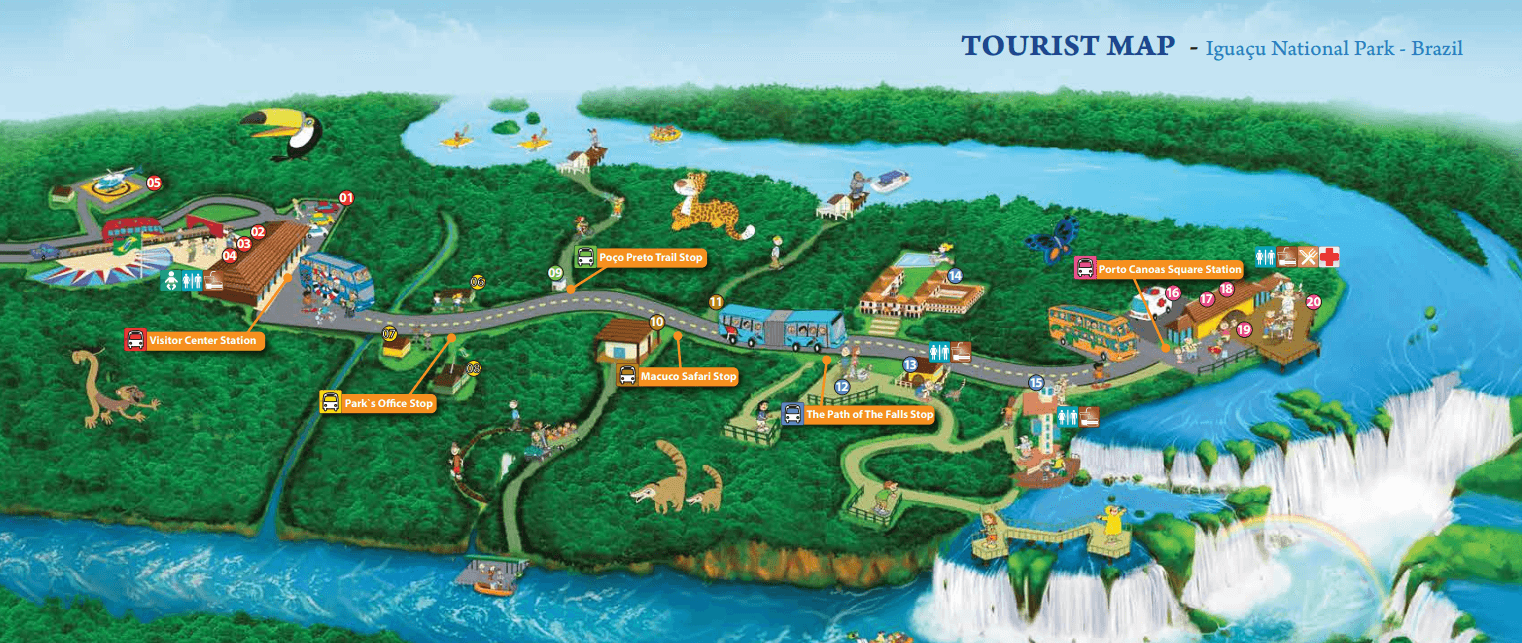
Below, we will answer some quick questions that we are always asked about Iguazu Falls.
Can I swim in the Iguazu Falls?
No, swimming in Iguazu Falls is not allowed under any circumstances . In any case you would be difficult to access the beach since it is not within easy reach.
The only way to be in the waters of the Iguazu Falls, on the Iguazu River is to take a boat ride. It can be the Macuco Safari on the Brazilian side, or Gran Aventura on the Argentine side (the nautical adventure is no longer available).
What is the Entry Fee?
In general, prices are always around 39 US dollars. All tickets can be purchased before starting your visit, and you can pay in cash (Argentine pesos or Brazilian real depending on the park) with a credit or debit card.
You do not need to buy tickets in advance, as that does not prevent you from having to make the general line to redeem your purchase.
In any case, we invite you to see the current price in the corresponding section on this page:
- Ticket price in Argentine National Park
- Ticket price in Brazilian National Park
Can I bring a drone to Iguazu Falls?
Unfortunately, it is not allowed to bring a drone to the national park. However, we recommend that you contact the administration of both parks to see if it is possible to obtain a special permit for this.
Are Iguazu Falls safe?
In our experience as a travel agents, we never had any type of problem on the part of the passengers during their visit to the Iguazu Falls. Basic security measures such as having the camera tied or not straying too far from the main avenues is more than enough.
Regarding the animals that you will find during your visit to both national parks, they are friendly (although a little curious). But it is recommended NOT to feed them and obviously not to touch them either, since we never know how they can react to both.
Is it worth going to Iguazu Falls?
Obviously yes! They are a unique destination, and everyone is amazed at the attraction, as it allows them to be seen and experienced in many ways.
And it is an easy destination to visit. A single night is enough to visit both sides of the falls ( it can even be visited in one day, taking a flight in the morning and returning at night).
Are there lockers at Iguazu Falls?
Yes! Both national parks (Argentina and Brazil) have lockers to store luggage. It is an excellent option when, for example, you come on a flight that arrives at noon and you want to go directly to the national park.
There are different dimensions, enough to store up to a standard suitcase (those that are sent by hold on the plane).
It has a small extra price, but they are very accessible.
What time are the Iguazu Falls open?
The Iguazu Falls National Park on the Argentine side opens from 8am to 18hs (6:00 p.m.).
The Iguazu Falls National Park on the Brazilian side is open from 9am to 18hs (6:00 p.m.).
Both national parks are open at Christmas and New Years. Just keep in mind that during December 24 and 25 and December 31 and January 1 there are generally no group tours to Iguazu Falls, so you must visit them on your own.
Where to go after the Iguazu Falls?
Iguazu Falls has grown enough to have a good flow of flights from all countries.
From Puerto Iguazu (IGR airport code) you can visit Buenos Aires, Salta, Santa Fe, Cordoba, and even up to Mendoza on some high season flights.
Meanwhile, Foz de Iguazu (airport code IGU) has an airport with several flights not only from Brazil (Rio de Janeiro, Sao Paulo, Porto Alegre), but some international ones like Lima, Peru.
From Iguazu, you can also visit the Ibera Wetlands in Argentina , a little-known but excellent destination for nature lovers.
Or you can visit the beautiful Perito Moreno Glacier in El Calafate, Santa Cruz, Argentina (making a stop in Buenos Aires). If you are an adventurous traveler looking for a challenge, you will have the chance to make the famous mini trekking over the Perito Moreno glacier , or even the “Big Ice” trekking .
Which side of Iguazu Falls is better?
Both sides are excellent, and we suggest visiting both parks to get the full experience in here.
However, that does not mean that there are no differences between both sides.
The Brazilian national park is a smaller park than the Argentine side. It consists of a single circuit of approximately 1500 meters. But a fundamental difference with respect to the Argentine side is that during all that journey you will have a constant panoramic view of the Iguazu Falls, which allows you to appreciate it from many angles. This park, due to its dimensions, can be visited in approximately 4 hours (starting from your accommodation).
The Argentine park, meanwhile, is a larger park, it has three main circuits and a secondary one for those who like to trek (Macuco Trail). The three main circuits let you enjoy the Iguazu Falls in different ways. But obviously for this visit you will need more time.
The decision on which side to take from the falls depends on your available time . We always recommend seeing both sides. But if you only have time for a single park, we suggest visiting the park that is closest to your arrival airport. For example, if you arrive through Puerto Iguazu (IGR) and depart through this airport too, it is better to visit the Argentine side, since this way you save the time it takes to cross the border.

Iguazu Falls is the home of a great variety of animal life that cannot be found anywhere else.
On your visit to both national parks, it is very easy to find coaties , an small four-legged and long-tailed animals that roam the area in search of food that visitors usually give them (for safety reasons, they are asked NOT to feed them ).
Another animal that you will easily see is the toucan . It is generally easier to see it in some tress on the Devil’s Throat circuit.
In addition to the toucan, there are many bird species that you can see throughout the tour. If you are interested in bird watching and want to do it during your visit, do not hesitate to see our Birdwatching tour in Iguazu .
Although a little more difficult, another animal that can be seen is the monkey caí , small animals that hang around the park in a group. In the same way, they approach tourists in the hope of obtaining a snack, but you should not give them any type of food.
Other animals present in the area, but not possible to see in the park is the yaguareté , a feline that is currently in danger of extinction. Naturally it is difficult to see it in the park since they always get away from people.
The tapir is another animal that can also be seen in this area. This animal is one of the largest mammals in Latin America, although it is quite difficult to locate it. If you are interested, there is a tour to see tapirs at night in the Uruguay-i provincial park .
If you are interested in seeing these animals and other species more closely and in detail, you can go to zoos such as the Bird Park in Foz de Iguazu, or Guira Oga in Puerto Iguazu. The mission of these two places is to recover animals injured on the routes or rescued from animal trafficking, to heal them and then reintroduce them to their habitat. The animals that can be seen in these places are those that can no longer re-enter to their habitat.

The climate in the Iguazu falls is typical of the jungle: humid and hot. Obviously depending on the season it can be more or less hot, but in general it is a destination to go with comfortable and light clothing.
Don’t forget to bring sunscreen and mosquito repellent!
We invite you to see our travel guide to see what the best date is to go to Iguazu Falls.
Start planning your trip to iguazu
We have put together a travel guide that will allow you, step by step, to plan your best trip to Iguazu Falls.
See our travel guide or start planning your trip by reading the first article to learn when is the best date to go to Iguazu.
Best Time to Visit Iguazu Falls, in Argentina and Brazil
Discover when is the best time to visit Iguazu Falls.
Learn more →

The Ultimate Guide To Visiting Iguazu Falls
Welcome to the stunning wonder of Iguazu Falls, a natural marvel nestled between Argentina and Brazil. This remarkable collection of 275 waterfalls sprawls across lush rainforest terrain, captivating visitors with its sheer beauty and natural power.
Get ready to be amazed by the thundering roar of the falls as millions of gallons of water plunge into the Iguazu River below. At the center of this natural spectacle is the iconic Devil’s Throat, the largest of the falls, displaying nature’s force in all its magnificence.
Furthermore, explore the network of paths and viewpoints that offer breathtaking views of this natural wonder. Feel the mist on your skin and see rainbows forming in the spray as you get close to the cascading waters. The surrounding national parks are home to a variety of wildlife, from colorful toucans to playful coatis, adding an extra layer of enchantment to your visit.
Moreover, for the adventurous, take thrilling boat rides that go right into the misty embrace of the falls, offering an adrenaline-filled experience unlike any other. Whether you’re amazed by the panoramic views, excited by the cascading waters, or simply reveling in the untouched beauty of the surrounding jungle, visiting Iguazu Falls guarantees an unforgettable journey into the heart of nature’s grandeur.
Finally, get ready to be captivated by this incredible spectacle that leaves a lasting impression on every fortunate traveler who witnesses its splendor.
Places to Visit
Ensure you explore the falls from both the Argentine and Brazilian sides to gain unique perspectives of this stunning natural spectacle.
Embark on trails like the Upper and Lower Circuits on the Argentine side or the trails in the Iguazu National Park on the Brazilian side to appreciate the falls from different angles and witness their splendor from strategic viewpoints.
Dare to experience the thrill of a boat ride that takes you directly beneath the cascades, feeling the power of the water and enjoying a unique perspective of the falls.
Take time to discover the diverse fauna and flora inhabiting the national parks surrounding the falls. Observe exotic birds, colorful butterflies, and other native animals.
Don’t limit your exploration to the daylight hours – immerse yourself in the enchantment of a moonlight excursion. As the sun sets and darkness descends, embark on a guided tour to witness the falls illuminated by the silvery glow of the moon.
Destination Tips
Be prepared for humidity.
Iguazu Falls generate a lot of mist and humidity. Wear light, comfortable clothing, non-slip footwear, and consider bringing a waterproof jacket or poncho to protect yourself from the mist.
Protect yourself from the sun and insects
Use sunscreen, insect repellent, and bring a hat or cap to shield yourself from the sun during your visit. Insects can be frequent in the area, so being prepared is helpful.
Take advantage of less crowded times
Visiting the falls early in the morning or later in the afternoon can reduce the number of tourists, offering a quieter and more relaxed experience.
Be cautious with coatis
While they may be curious and attempt to grab food, avoid feeding them. Secure your belongings to prevent any unwanted interactions with wildlife.
How to get there
Argentina - puerto iguazú, puerto iguazú international airport (igr) it's the main airport close to the falls on the argentine side, serving domestic and some international flights. puerto iguazú bus terminal this is the bus terminal where services arrive and depart to and from other argentine cities and neighboring countries. brazil - foz do iguaçu, foz do iguaçu international airport (igu) it's the primary airport on the brazilian side near the falls, receiving both domestic and international flights. foz do iguaçu bus terminal this is the main bus station connecting the city to other regions in brazil and neighboring countries. /* elementor - v3.20.0 - 10-04-2024 */ .elementor-widget-google_maps .elementor-widget-container{overflow:hidden}.elementor-widget-google_maps .elementor-custom-embed{line-height:0}.elementor-widget-google_maps iframe{height:300px} prev previous vibrant buenos aires: a traveler’s guide to argentina’s heartbeat next your ultimate guide to perito moreno glacier: essential tips and info next contact us.
Follow us on social media to stay updated with the latest travel tips and breathtaking destinations in Argentina. Connect, share, and be part of our community for exclusive content and inspiring travel stories. Join us now and let’s explore together!
Iguazú Falls
Situated in Iguazú National Park , some 20 km. from Puerto Iguazú in the north of the province of Misiones , Argentina , the Iguazú falls are shared by Brazil and our country. Iguazú river is born in Paraná state in Brazil, and after crossing 1,200 km. on a plateau where it receives several affluents, it reaches a fault forming a crack in the interleaved layers of sandstone and basalt where the river runs. This river runs through a smooth geography until it reaches a series of faults, and suddenly an 80 m. canyon in the Devil’s Throat, the main fall of Iguazú, where the water produces a thundering sound and then drains into the Parana river . A legend says that a big snake called "Boi" lived in the river. To calm its ferocity, aborigines sacrificed a woman every year as an offering. But once a brave guarani aborigin kidnapped the woman and saved her from the traditional rite escaping through the river. Boi burst in anger, bent its body and split the river forming the cataracts separating the man and the woman.
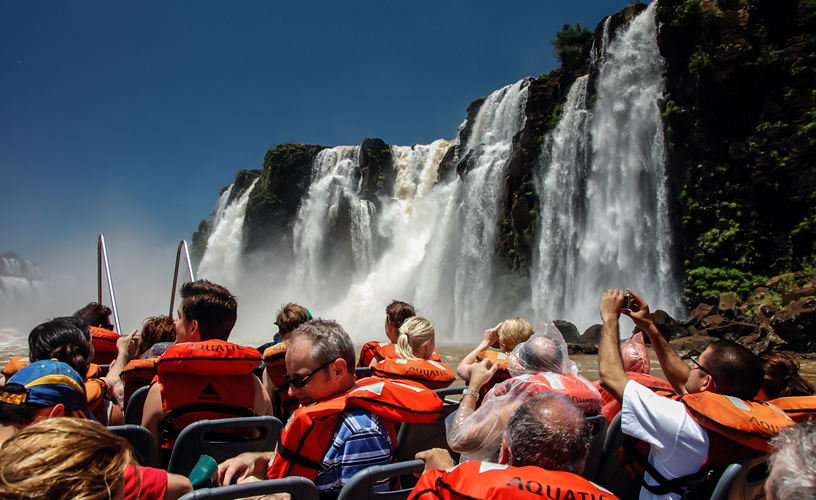
Natural Wonders of the World
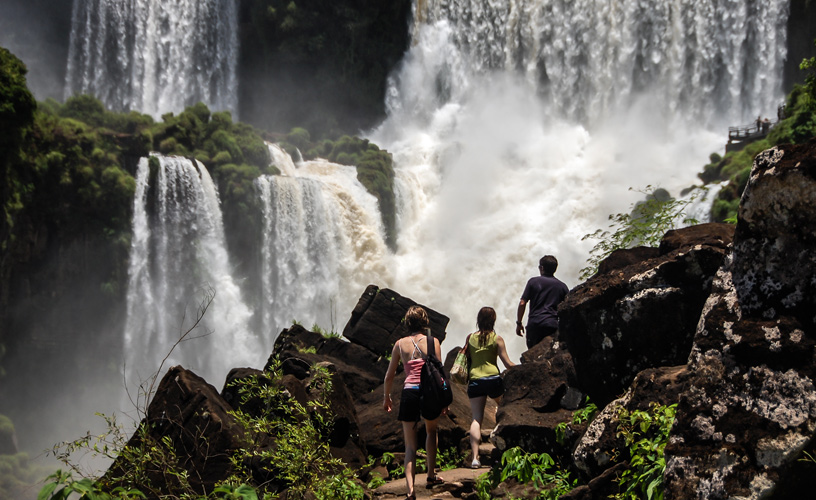
An incredible vertigo
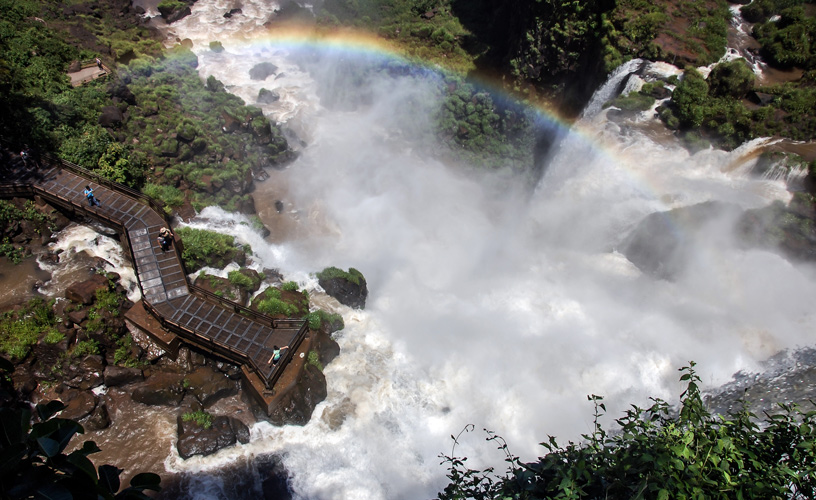
Iguazu Falls from the lower circuit
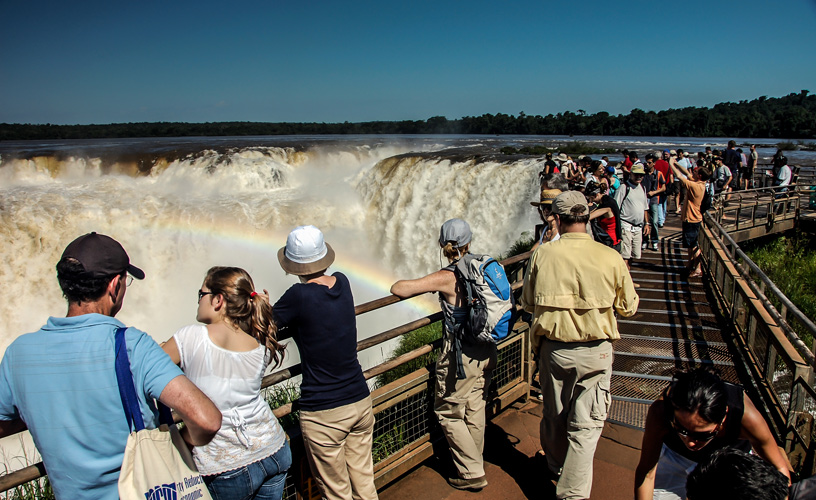
Iguazu Falls from the upper circuit
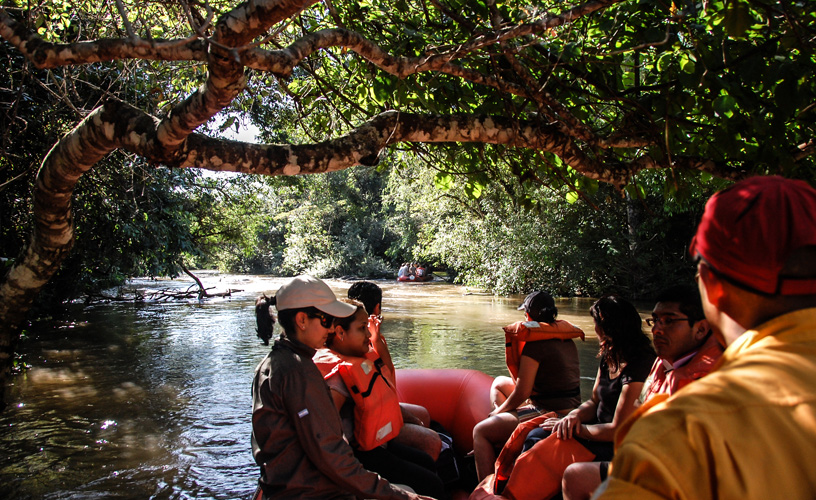
The animals and plants in this delta
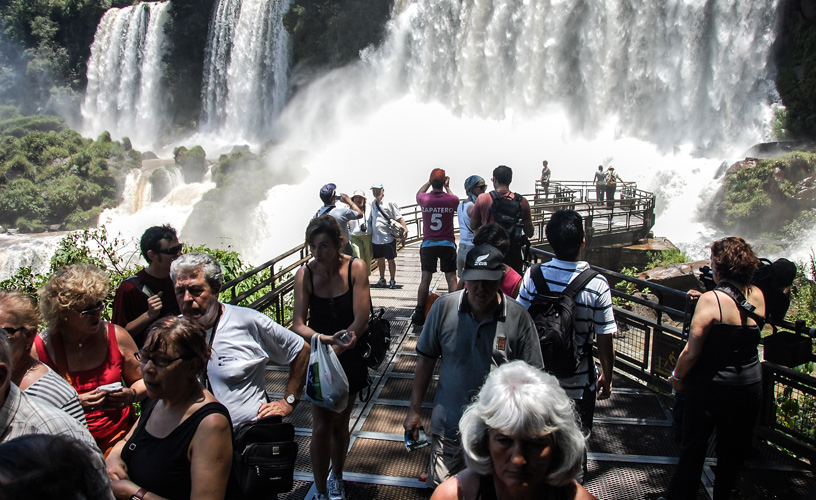
Walking on the footbridge at the Falls
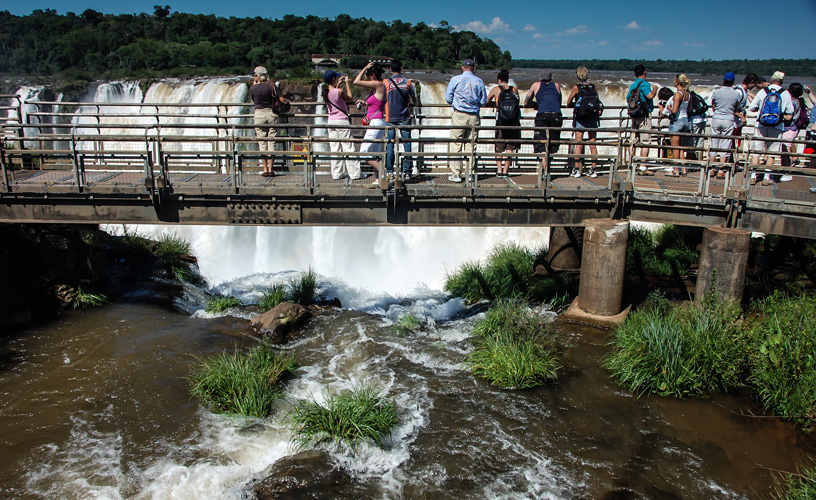
Iguazu = Great Waters
Walking on the footbridge There are more than 270 falls in an area where cliffs and islets are scattered in a half moon. From the visitors center you can walk around trails or in a picturesque train. There are two basic circuits: an upper path and a lower path. The lower path leads to the base of the Iguazu Falls falls, where the spray moistens visitors. It is a unique experience, worth daring the adventure. In this circuit you may also take a boat to Isla San Martín. From the upper path you have panoramic views from the footbridge in an unforgettable experience. The falls that can be visited are: Salto Floriano, Salto Deodoro, Salto Benjamín Constant, Salto Unión, Salto Escondido, Salto Mitre, Salto Belgrano, Salto Rivadavia, Salto Tres Mosqueteros, Salto Dos Mosqueteros, Salto San Martín, Salto Adán y Eva, Salto Bozzetti, Salto Ramirez, Salto Chico, Salto Dos Hermanos and Salto Alvar Nuñez . Leaving from Cataratas station, we go to the footbridge on the upper part of the river. We get to the balcony on the Devil’s Throat, the biggest fall with such a big flow of water that you will be overcome by the grandeur of the scenery. Wild Adventure The lovers of adventure travelling can acces to more intense circuits. Apart from waterfalls, the jungle containing the Iguazu Falls also offers a series of alternatives in a dump but slightly fresher environment with a wide variety of animals and plants. Almost 500 species of wild fowl, 80 species of mammals and an immense variety of reptiles, fish, insects and butterflies live in this ecosystem. Only some meters from the Research Center is Macuco Trail, a 3 km. walking path through the dense jungle with different degrees of difficulty. It is a 2 hour walk to Salto Arrechea. A private operator offers a more daring alternative . Leaving in a 4x4 vehicle we drive 8 km. through the jungle to the coast of the inferior Iguazu river. Some semi-rigid rafts with powerful engines will be waiting for us to go upstream and into the mist veil formed by the Iguazú Falls. Another option is to take a rowing boat in the upper Iguazú river to watch the animals and plants in this delta, and maybe see some water tortoises or yacares sunbathing on the coast. Iguazú is a singular environment that inspired the writer Horacio Quiroga in his "Tales of the Jungle".
Contact of the excursion or tour
Sol Iguazú Turismo
Av. Victoria Aguirre 237, Puerto Iguazú, Misiones, Agentina
- Most popular lodging options in Puerto Iguazú
- Only with published prices
- 3 star lodging
- Lodging with a pool
- Pet-friendly
- With free parking
- Cabins in Puerto Iguazú
- Lodging with SPA
- 4 stars and over
- All hotels in Iguazú
Things to do in Puerto Iguazú

History of Iguazu

A Fantastic Cruise in Iguazú

Tour by car Puerto Iguazu

The Iguazú Biocenter

Iguazu Falls and a journey of legends

Ecologic Tour in Iguazú

24 hours at the Falls

Nautical tour Balsa Aventura

Iguazu Falls by night: Beneath the moonlight

Horacio Quiroga's House

View more tours and activities
Hotels and accommodations in Puerto Iguazú
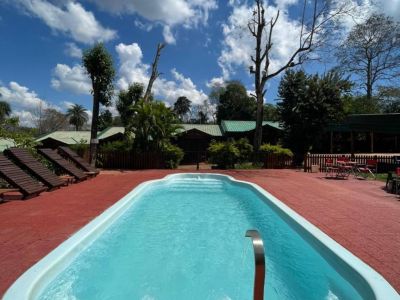
Raices Pampeanas
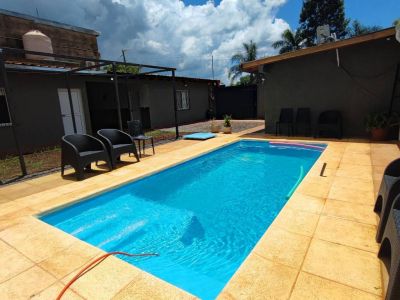
Apart Hotels

Estación Melón
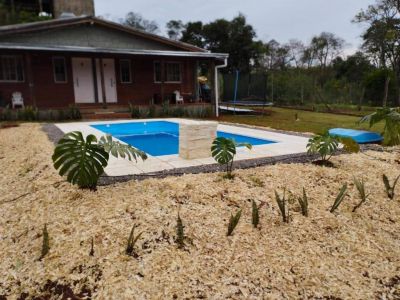
Don Alejandro
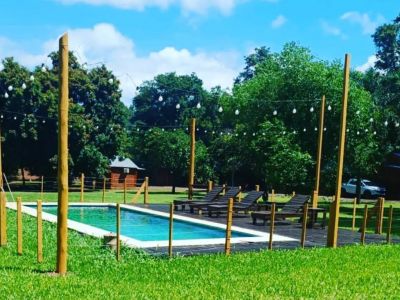
Cabañas El Despertar
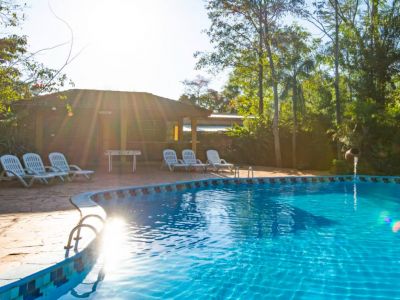
3-star Cabins

Apart Pampeano
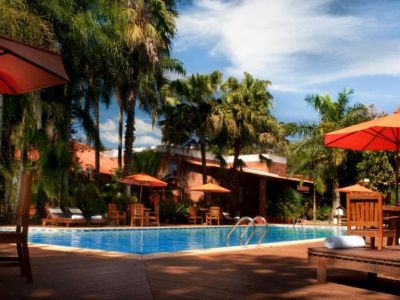
Orquideas Hotel & Cabañas
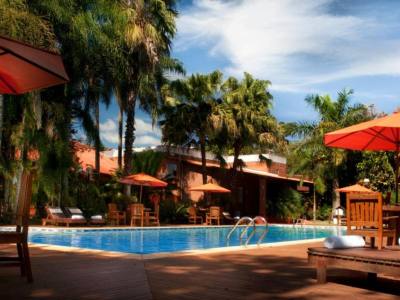
4-star Hotels
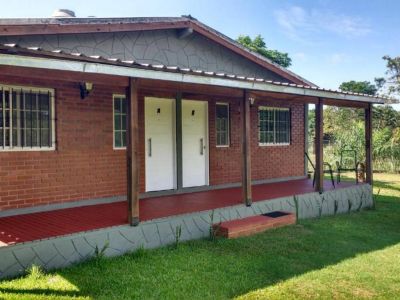
Costa del Sol Iguazú
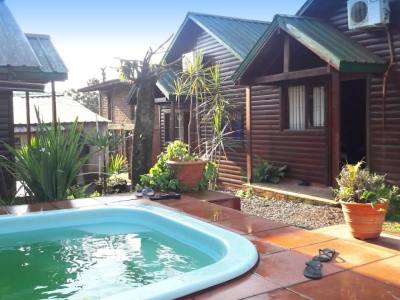
Cabañas Coati
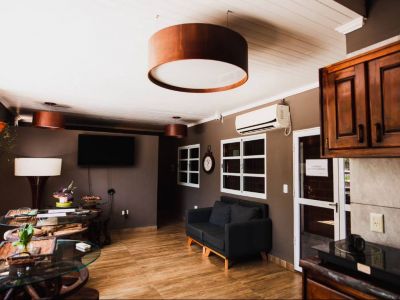
Apart de la Selva
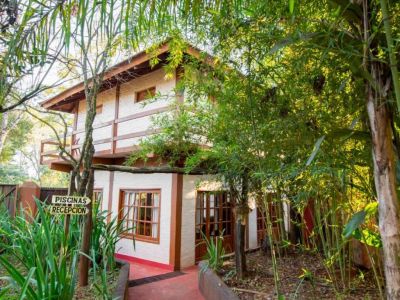
Puerto Iguazú
View more lodging
Terminos y condiciones
The Iguazú Falls
The iguazú falls, along with the perito moreno glacier, are the greatest tourist icons in argentina..
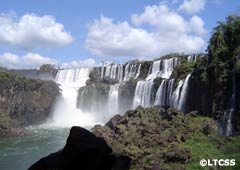
Extremely beautiful, literally an earthquake for the senses, the Iguazú Falls are located in the northeast of Argentina , where a triple frontier is shared with Brazil and Paraguay .
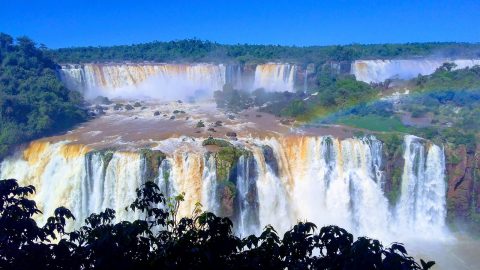
The waterfalls assault the visitor with their torrents, so grand and loud that we, mere mortals, are confronted with the smallness and brevity of our lives. Lush green, gigantic leaves and flowers , red earth , the eyes of animals watching us , a heat that pierces the body.
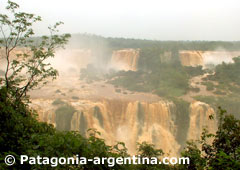
- Excursions in Iguazú
- Must-see in Iguazú Falls
- How to get to Iguazú Falls?
- Weather in Iguazú Falls
- What to pack for a visit to the Iguazu Falls?
- What to eat in Iguazú Falls?
- What to buy in Iguazú?
- To learn more about
- Categories In Iguazú
Explore more Patagonia Topics

Iguazú Falls: The Fury of Nature
Iguazu Falls in the North of Argentina is a chance to witness nature’s grandeur and fury up close.
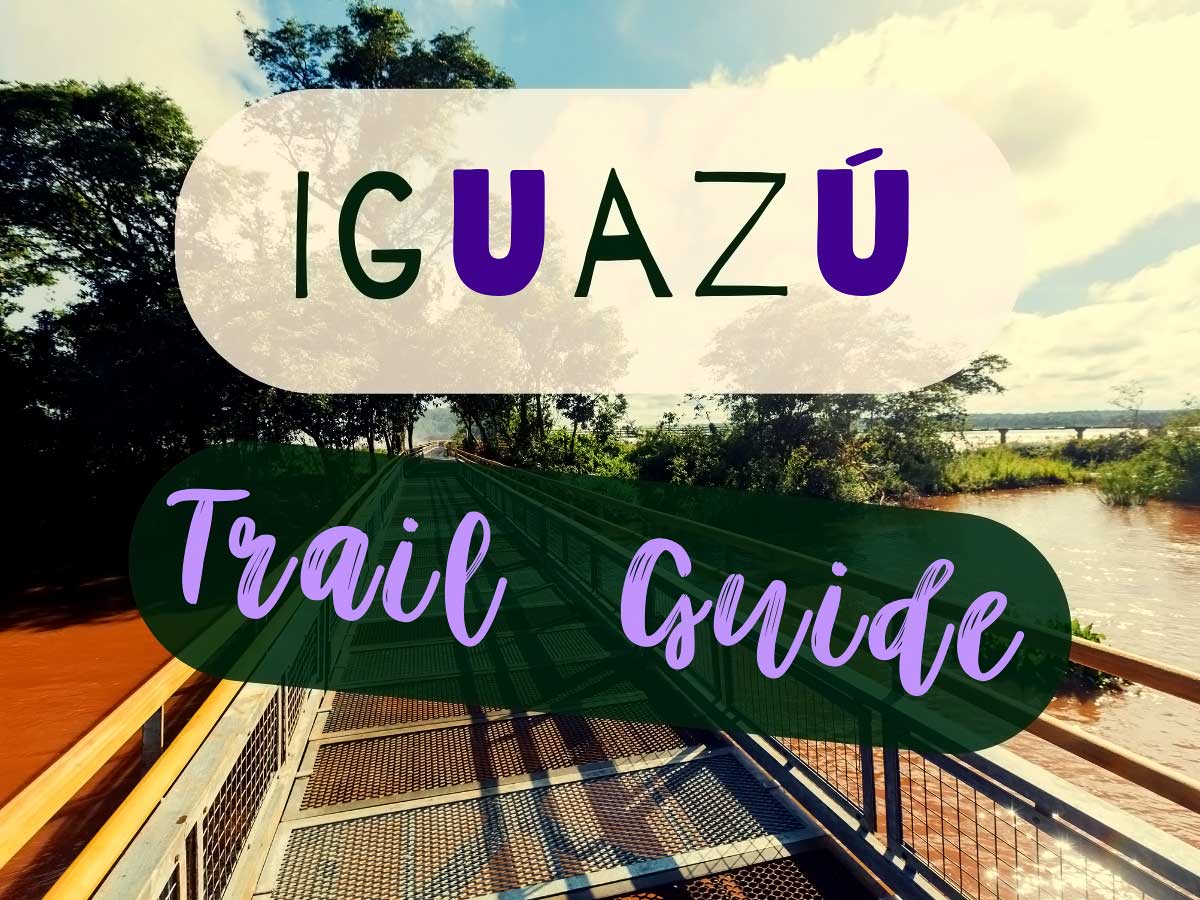
The largest waterfall in the Americas spans over 2.7 kilometers of the river’s edge.
It forms a semi-circle of 275 individual waterfalls with water rushing down at an average of 1,756 m3 per second.
At Iguazú Falls there is a majestic sparkle in the air, as if you’ve stepped into the scene of a fairytale.
Rainbows are everywhere at Iguazú
Rainbows at Iguazu Falls connect Naipí and Tarobá of local Guarani myth.
The sun dances off the water pouring over the fault’s edge, casting rainbows throughout the air and dusting the vivid greenery with a diamond-like shimmer.
Table of Contents
2022 Iguazu Falls Visitor’s Update
- Argentina no longer requires visitors to have proof of vaccination or a Covid test before entering the country, see Visiting Argentina for more detail.
- Due to a landslide some parts of the park are temporarily closed
- Water levels in the rivers are low, so aquatic tours are limited
- It is now temporarily required to have a guide when visiting Iguazu Falls National Park.
- A knowledgeable private guide can be arranged with our flexible two or three day Iguazu Falls trips. Arranging a lower cost group tour online will suffice as well.
About Iguazu Falls
One of Argentina’s top tourist attractions, Iguazu Falls was named an UNESCO World Heritage site in 1984. In 2011 it was named one of the Seven World Wonders of Nature.
The Spanish name for Iguazu Falls is Cataracas de Iguazú .
Iguazu Falls National Park ( Parque Nacional de Iguazú ) is a 67,000 hectare park.
Formed in 1934, it was the first national park formed in Latin America. The sister park across the border in Brazil, Iguaçu National Park was formed four years later.
The parks are set in the lush Atlantic Forest, the second most important rain forest in Latin America, after the Amazon Jungle.
The Atlantic Forest is 90% deforested, so much of the flora and fauna seen in this area are unique and endangered species.
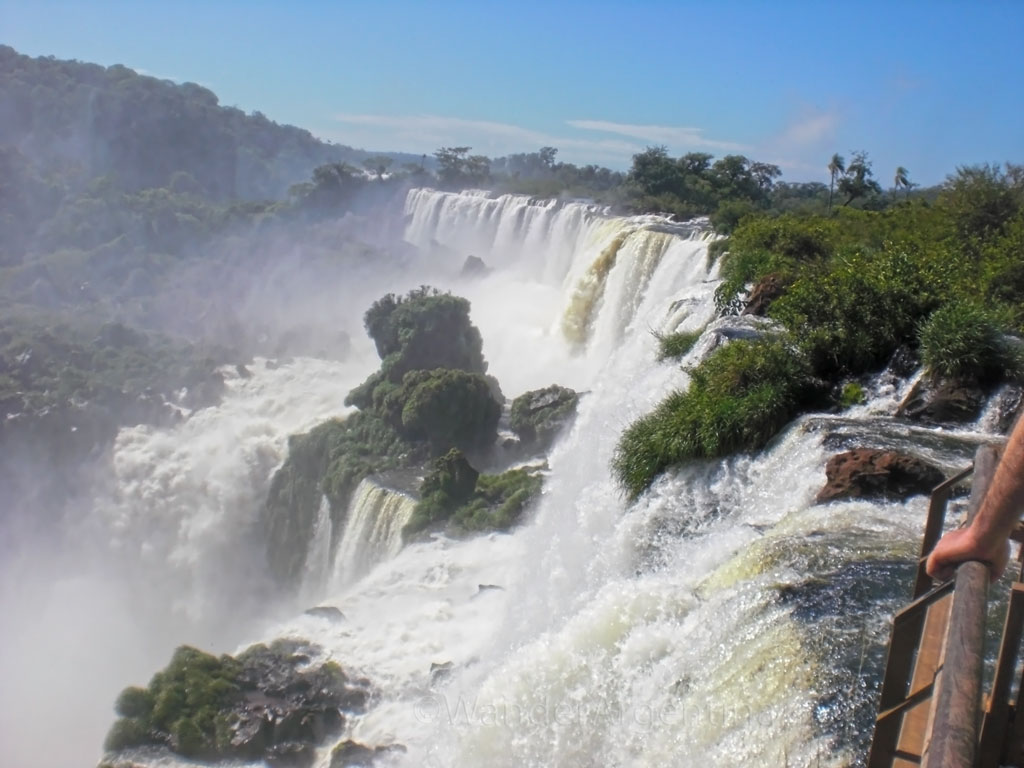
The Upper Iguazú River drops 82 meters at the pinnacle of the cataracts.
Its largest fall, La Garganta del Diablo (The Devil’s Throat) feeds into Lower Iguazú, collects in a canyon, and then flows into Argentina’s Paraná River.
Upon arrival, the surreal beauty of the jungle and waterfalls are masked by the imposing visitor center structure where tickets are purchased. Two rooms here explain the ecosystem and biodiversity of the park and information about the original inhabitants, the indigenous Guaraní.
Get an early start at the national park and try to stay ahead of groups of tourists on guided tours who populate the paths.
Several languages can be heard along the busiest part of the trails, a testament to the worldwide reputation of one of Argentina’s top tourist attractions.
There are plenty of paths to walk and passing others is as easy as just picking up pace and scooting by.
Iguazu Falls Walking Trails
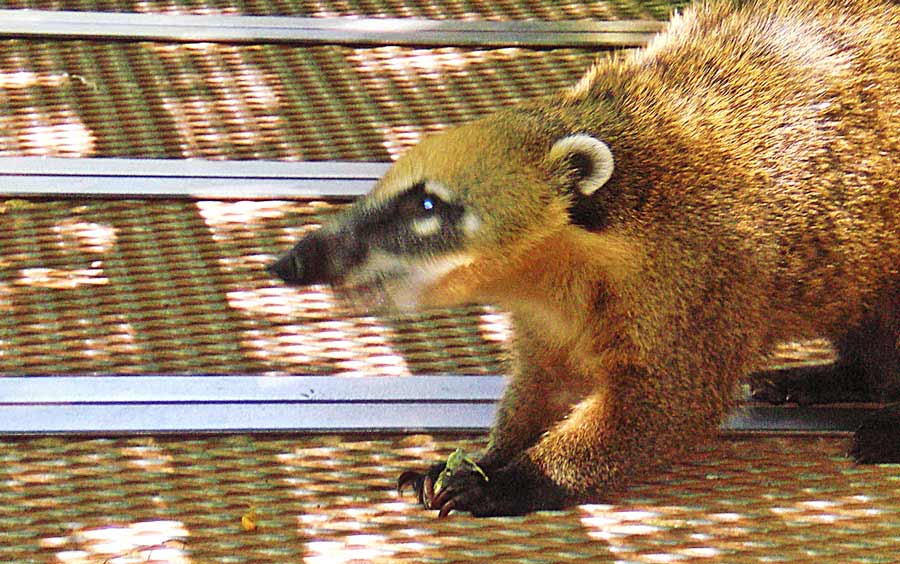
Those who prefer to keep their feet on the ground will find plenty of walking trails at Iguazu that provide breathtaking views.
Standing on the fault’s edge is a vertigo-inducing sensation offset perfectly by a refreshing mist giving relief from the humidity.
Along these walkways are packs of Coatis, or Brazilian aardvarks, that feed on stray berries and pose along the railings for snap-happy tourists.
Be careful, they will steal a snack if given the opportunity but the park asks visitors not to feed them.
The fast and and skillful flying Cascade Swift (Cypseloides senex) is the official emblem of Iguazu National Park. The brown and grey birds form huge flocks that are seen early hours, when they leave to look for food, and in the evening, when they return to their roosts.
Coatis are the most common but not the only animal seen in the park. There are also caí monkeys, gray squirrels and more than 450 species of birds, such as toucans, noisy magpies and jotes.
There are also an estimated 35 jaguars in the national park, which only the most privileged visitors get to see (most likely those staying in one of the two hotels in the park because they are most likely to be spotted at dawn or dusk.)
Green Trail
Train Stop : Central Station Accessibility : High Difficulty : Low, without stairs. Duration : 15 minutes Distance : 600 meters
Welcome to the jungle! The Sendero Verde or Green Trail is a short easy footpath taking visitors immediately into the canopied vegetation and the exotic sounds of the rainforest. It ends in a little plaza where the lower and upper circuits begin.
The Lower Circuit Trail
Train Stop : Cataratas Station Accessibility : High Difficulty : Low, without stairs. Duration : 1:15 hours
The Lower Circuit of Iguazu Falls takes roughly one hour and 15 minutes to traverse, hosting 150 meters of stairs.
The moderate effort it takes to arrive hiking is more than made up for with face-to-face encounters with five different waterfalls.
The lower circuit is ideal to conquer at the end of the day. Once the crowds have dispersed visitors will feel they are discovering the falls for the first time.
One highlight is Dos Hermanas (Two Sisters), tucked away in a quiet crevice. The peacefulness of the trail at dusk becomes hypnotic with the Two Sisters’ synchronized pitter-patter on the pool below.
A diverse mix of walkways and jungle paths make it likely to spot several of the different species of birds resting in treetops. Most commonly seen birds are the boomerang-like swifts (the park’s official symbol) and colorful parakeets and parrots.
Iguanas and lizards also scurry across the trails, but perhaps the most inspired picture comes from the swarms of vibrant butterflies that land on the limbs of passers-by.
The Upper Circuit Trail
Train Stop : Cataratas Station Accessibility : High Difficulty : Low, without stairs Duration : 35 minutes
Iguazu National Park’s upper circuit trail is a1200 meter walk, completed in roughly 35 minutes.
This short course boasts some of the most impressive panoramic views that can be enjoyed from the Argentine side and highlights the vast expanse of the Brazilian border.
Various lookout points at the peak provide views of several cataracts, starting with Bossetti Fall – named after an explorer who ‘rediscovered’ the falls in the late 1800s.
The upper circuit trail finishes at the Mbiguá Fall, a black cormorant aquatic black-colored bird with a yellow beak.
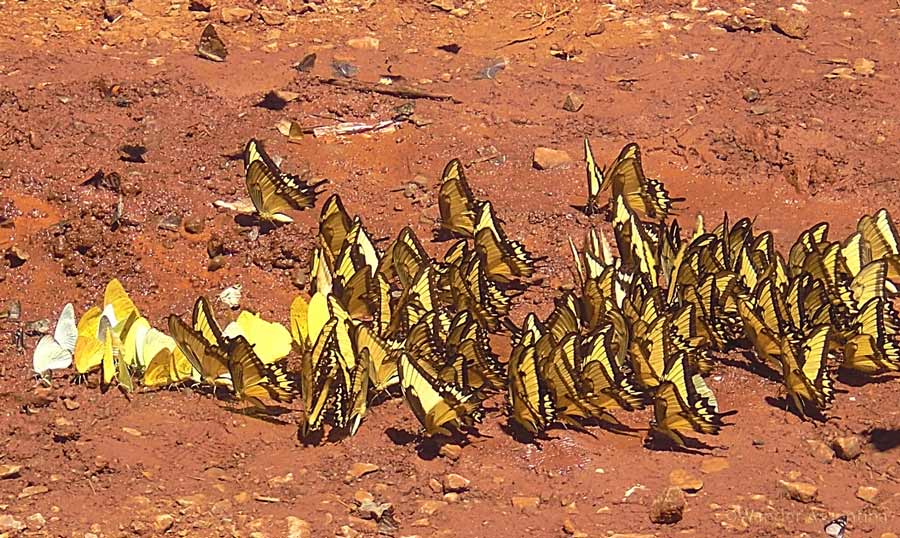
Macuco Trail
Train Stop : Central Station Accessibilit y: Low Difficulty : Low to high, depending on route Duration : Three hours
The Macuco trail is 3.5 km (2.2 mi) the longest and wildest of the jungle paths at Iguazu National Park.
The trail is an hour-long adventure into the jungle on a peaceful path full of exotic birds and bountiful butterflies.
The end point of the trail is Arreachea Falls, a 23-meter high drop into a beautiful crystal cerulean pool that will tempt swimmers.
Weather and time permitting, spending a few hours at this blue lagoon isn’t a bad idea.
The Devil’s Throat Trail
Train Stop : Garganta del Diablo Station Accessibility : High Difficulty : Low, without stairs Duration : Two hours
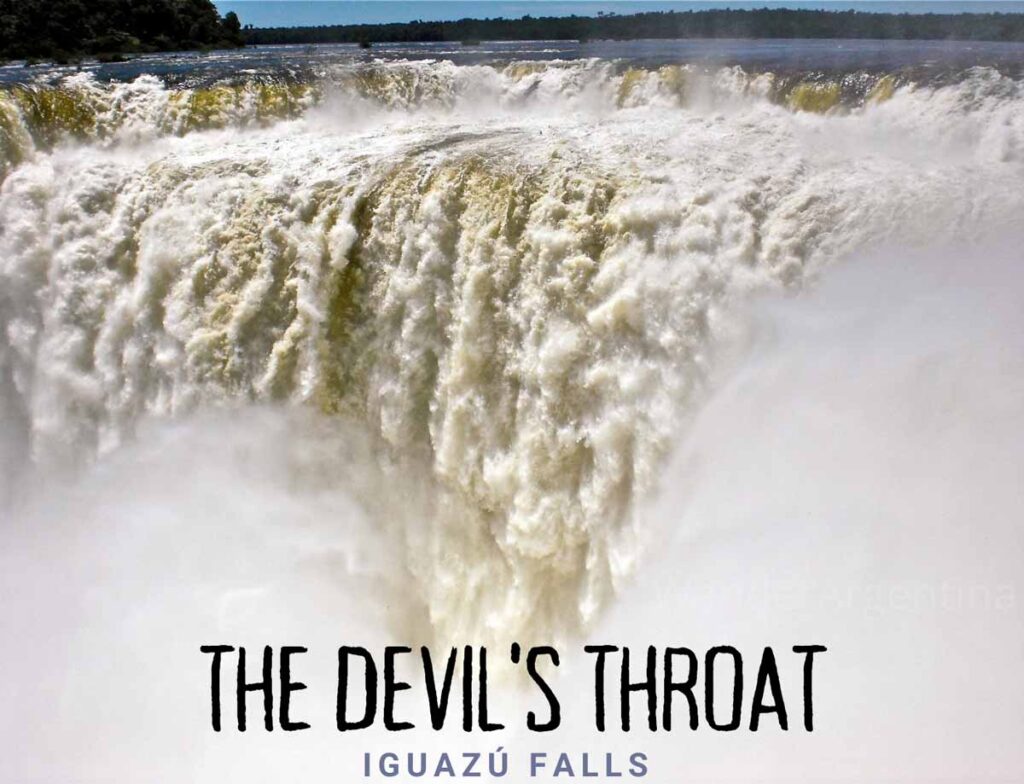
The Devil’s Throat Circuit which takes visitors to the largest waterfall at the park, La Garganta del Diablo is the highlight of the trails at Iguazu.
At Devil’s Throat, the thunder of the river breaking over the banks is hypnotic.
If the Devil’s Throat Fall is the conductor, the neighboring cascades are the orchestra, keeping perfect rhythm with the water gushing at an average 62,000 cubic feet (1,756 cubic metres) per second.
The railing is the only thing holding you back from certain death, but this unrestricted access liberates the onlooker and makes the crowd disappear into the background.
Adding to the devilish drama are the swarms of turkey vultures menacingly circling overhead, as if bidding their time until someone falls to their death.
Leave at least an hour to for this trek, because unlike the other paths with several vistas, there is only one balcony area to get a good view of the falls.
Rainforest Ecological Train
Accessibilit y: High Stations : Central, Cataratas and Garganta del Diablo. Distance : 14 km Duration : 25 minutes
All trails throughout the Argentina Park are connected by the Rainforest Ecological Train ( Tren Ecológico de la Selva ), which facilitates access to each part of the park with three different stops along the way that provide access to the Lower Trail, Upper Trail and The Devil´s Throat.
The locomotive is powered by liquefied petroleum gas for low-ecological impact.
It is a narrow-gauge train, like the Old Patagonian Express, especially designed for tourism.
The slow-moving train produces little noise in order to reduce disrupting wildlife, while allowing visitors close contact with nature in the open wagons.
From Central Station, one can either take the jungle train or walk the Green Trail to Cataratas Station, which marks the beginning of the Upper Circuit.
From Cataratas Station, the train travels deep into the forest, explores different branches of the Upper Iguazú and ends at the Devil’s Throat Station, where the Devil’s Throat Circuit begins.
Use of the Ecological Train is included in the price of tickets. The beauty of the train is that it is adapted for wheelchairs and baby strollers, so people of all mobility levels can see the highlights of the national park.
Aquatic Tours in Iguazu Falls
Aquatic tours are one of the most exciting ways to explore Argentina’s National Park and for thrill seekers they are the highlight of their Iguazu journey.
The Great Adventure Tour , the most daring and longest offering, includes a 4×4 safari tour of the Yacaratiá Trail, the longest trail in Iguazu National Park. The heart of the dense, subtropical jungle explored is home to 2,000 species of plants, 450 types of birds, 80 mammals and the countless exotic insects.
Along this eight kilometer safari ride you may see snakes crossing the trail, Capuchin monkeys swinging between trees, huge spiders spinning their webs in the branches and Red-Breasted Toucans perched in the treetops.
The bilingual guide points out the edible trees that line the dirt path and explains how hearts of palm are extracted from the numerous Palmetto trees in the jungle.
The jungle safari concludes near the water’s edge, where rafts are wait to load visitors to traverse the Lower Iguazú River.
After a six kilometer cruise on lower Iguazu showcasing some of the smaller falls, the current picks up and boats are thrown into two kilometers of rapids.
There’s a white water close encounter with the mouth of The Devil’s Throat, a drenching beneath the Dos and Tres Mosqueteros (Musketeer Falls), and San Martín cascades.
The finale leaves passengers soaked yet awed by the exhilaration of having faced the fury of the falls. The water quells the heat and one cannot resist the urge to gaze upwards to receive a bath by Mother Nature.
A final stop on San Martín Island, a paradise with a white sand beach that sits at the heart of the cataracts.
If you book one tour on the Argentine side of the falls it should be the Gran Aventura Boat and Argentinian Falls Tour which includes hotel pickup.
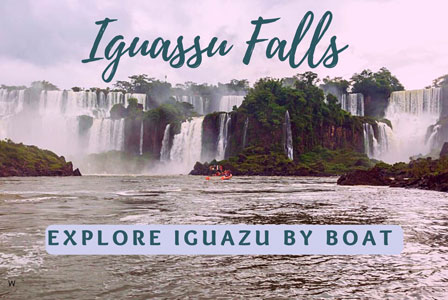
Liven up a visit to the Brazil side of Iguazú Falls with an up-close visit to the Devil’s Throat by pontoon boat
Local Legends about Iguazu Falls
The local name for the falls is Chororõ Yguasu or ‘Great Waters.’
It was given by the indigenous Tupi-Guarani people, who used to roam these river banks.
The Guarani people are spiritual and their traditional religion is animistic.
As the nearby Jesuit missions ruins attest, many were at least partially converted to Christianity but Guaraní folk tales live on and typically change with every telling.

The Guaraní People and Yerba Mate
Did you know that the idiosyncratic custom of Argentines to drink yerba mate came from the Guaraní people?
They were the first to cultivate the shrub and make drinking the infusion a regular social occasion.
They worshipped the plant for it’s ability to increase stamina and stave of famine.
Read about the health benefits of Argentina’s favorite vice ➡
Guaranis explain the massive phenomenon of nature that is Iguazu Falls with mythological tales of love and rage.
The most common legend, told many different ways, is a mystic Romeo and Juliette-like tale.
It says the waterfalls mark the spot where a beautiful woman was sacrificed every year in order to tame a vicious snake diety Mbói Tu’i who inhabits the waters of Iguazu River.
One year Tarobá, a brave Guarani warrior learned that a young beautiful woman from the neighboring village, Naipí was about to sacrificed to appease Mbói Tu’i.
The night before the ceremony, under the darkness of a waning moon Tarobá navigated the waterways by canoe and escaped with the young woman, so she could live and they could hide away together in secret forever.
The evil serpent creature grew angry and burst, contorting his body and splitting the river in half out of fury, forever separating the couple with the largest series of waterfalls on earth and condemning their spirits to eternal life.
According to local lore, Naipí was turned into a palm tree on the Argentine side of the falls. Tarobá was petrified into a large stone that lay beneath the falls, forever punished by water.
The waterfalls are their never-ending tears. The ethereal bond between them is manifested only in the frequent rainbows that connect them.
Food in Iguazu National Park
There are restaurants, which have pizza and other basics, near the entrance of the park, but expect the usual tourist hotspot offerings of overpriced, mediocre food.
There there are fast food options near Central Station and Devil’s Throat Station, useful for the bathroom facilities and places to sit and regroup and relax.
A better bet for those dining at the park with the whole family is the buffet and grill Fortin Cataratas located on the upper circuit.
Packing your own picnic is a less expensive option if weather permits.
On the Brazilian side of the falls after getting wonderful panoramic photos there’s not much else to do.
Also on the Brazilian side is Restaurante Porto Canoas offers a similar buffet and grilled meat set up with a spectacular view of Devil’s Throat.
Full Moon Tour & Dining Experience
The ultimate dining experience in Iguazu National Park is the once-a-month full moon tour to the Devil’s Throat .
Nothing can beat seeing one of nature’s most spectacular wonders under a night sky illuminated by the full moon.
This tour provides a chance for visitors to see the daytime shimmer of the landscape replaced with serene silver and blues of the falls at night.
The excursion starts with a ride to Garganta del Diablo Station – and all the while hearing the wild symphony of the jungle at night.
Then moon walkers cross the Iguazu River over the footbridges to arrive at Devil’s Throat Balcony.
A three-course dinner with a choice between three entrees is served at L Selva restaurant.
If planning to visit Iguazu around the full moon, this tour is essential, but it fills up fast.
A local travel agency with contacts in Iguazu may be your best bet to secure tickets but you can also try to book online , unfortunately you will pay double if using a foreign credit card.
Puerto Iguazu Town
Puerto Iguazu is the closest town to Iguazu Falls and it exists only for the tourist sector. Most visitors who travel here to see Iguazu Falls stay in this modest pueblo 18 km (11 mi) from the national park.
Puerto Iguazu is 20.6 km (12 mi) from Cataratas del Iguazú International airport. There are regular shuttle to town, or you can arrange private pickup.
It has more than tripled in size the last twenty years, becoming the fourth largest city in Misiones province. It still has well under 100,000 though, so it’s easy to navigate.
The surrounding tri-border area also contains Foz do Iguazú (Brazil) and Ciudad del Este (Paraguay).
Puerto Iguazu Town Attractions
Puerto Iguazu doesn’t have much in the way of attractions itself as it is just a service town but it’s worth a walk to the river’s edge at the northwest corner of town to see where the borders of Argentina, Brazil and Paraguay meet.
The tri-border area is known as the Hito Tres Fronteras (Three Borders Milestones or Triple Frontier), which is the point where the limits of Paraguay, Argentina and Brazil come together.
There is a mini obelisk (similar to the Obelisk in Buenos Aires ) for each of the three countries.
There’s a plaza and lookout point where the three countries meet and the Iguazu river joins the Parana river. There’s sometimes a craft fair and locals come to hang out to drink mate.
Iguazú Falls Nearby Attractions
Misiones province offers visitors a number of interesting sites in close proximity but travelers only really need two days to see the waterfalls — one day in Argentina and a half a day in Parque Nacional do Iguaçu in Brazil.
Those who love bushwalking or have interest in other local attractions, can take three or four days to have the ultimate Iguazu Falls experience.
Many travelers stay in Puerto Iguazu rather than Foz do Iguazú since Argentina is less expensive.
Almost everyone also does a half-day hop over to border the Brazilian side of the national park for a tour to enjoy the panoramic views of the falls.
Ciudad del Este, Paraguay
Ciudad del Este (Eastern City) in nearby Paraguay is known as a shopping mecca for Argentines and Brazilians because there are a lot of free trade (read black market) products which are typically expensive in these countries due to import taxes.
The city’s freewheeling commerce has attracted a sizable Chinese, Arab and Indian population since the 1980s when the hydroelectric Itaipu Dam brought more development.
For the past few decades the Triple Frontier and particularly Ciudad del Este, the area’s largest city, has been implicated in funding international organized crime.
Whatever lawless movements are going on behind the scenes, it doesn’t of affect the safety of tourists, but admittedly few stay here after nightfall.
Wanda Mines
Those with an into geodes and amatists could also visit Wanda Mines , an amethyst mine an hour to the south.
A tour here is often done in conjunction with the intriguing San Ignacio Ruins nearby.
San Ignacio Ruins
There are also a cluster of Jesuit ruins dating to 1610 about 100 km south of Iguazu National Park.
San Ignacio Miní, Reducción de Nuestra Señora de Loreto and the Guarani Jesuit mission of Santa Ana are all in close proximity.
The extensive, well-maintained ruins demonstrate the wealth of the clergy who came here to convert the indigenous here 400 years ago. Much of their wealth was built cultivating yerba mate on plots for the first time.
Those who choose to rent a car for the excursion can also cross over to Paraguay to see more ruins nearby.
Iguazu Falls Climate & Best Time to Go
Wondering when the is the best time to go to Iguazu Falls both climate-wise and crowd-wise?
Iguazu Falls has temperate weather for most of the year. In summertime it is hot and muggy, so those who dislike 32+ temperatures will want to avoid late December and January, the hottest month. Argentina’s summer holidays are from Christmastime until Carnival at the end of February so these are also peak months for internal tourism.
In the winter months of June, July and August it does get down to 10-13 C (50-55 F), with it getting the coldest in July, so a jacket will be needed at night — the trade-off is less crowds.
Iguazu Falls is also popular destination for Argentines and other Latin Americans around during Semana Santa , or Easter week.
The weather is perfect in April, but a trip during Easter week will mean lots of crowds.
Any other week in April, or the months of March or May promise decent weather and less people coming between you and the Devil’s Throat.
October is the month with the most rainfall, so the waters roar at Iguazu and the temperature is pleasant.
November, before the height of the summer season, is when it’s less rainy and the flowers are blooming.
It is absolutely lovely in November but with the blue dollar strong and the secret being out about how November is the best month to visit Argentina , crowds are inevitable.
Iguazu Falls Checklist
- Expect to get wet — pack clothes with synthetic breathable fabric that dry quick
- Don’t forget a bathing suit in the summer and winter if your hotel has an indoor pool
- Sunscreen, sun hats and sunglasses
- Mosquito repellent. This area does have Dengue Fever, but not to the levels of other Latin American countries
- Good walking shoes — there are slippery areas on the walkways and visitors do a lot of walking, so wear comfortable walking shoes or sport sandals.
- Visitors planning to return the park for a second day should make sure to get the tickets stamped by park rangers on the way out because admission on day two is discounted.
- To get all the action you’ll want a durable, waterproof camera like a nifty GoPro 10 . Even waterproof videocameras like this one that shoot underwater high definition footage are under $200.
- Large waterproof ziplock baggies or a waterproof nylon travel bag for any other non waterproof items such as watches and phones. The boat tour companies provide waterproof pouches but the zip-close plastic bags add extra security against splashes or rain.
- Before traveling to Iguazu, double check entry requirements and conditions because there are liable to change — Parque Nacional Iguazu’s official webpage — Parque Nacional do Iguaçu
→ Cont. Getting to Iguazu Falls & Lodging
→ Whether you prefer to travel by bus or airplane, stay in a budget hostel or a fancy hotel, ask us about our tailormade three-day, two-night or Iguazu trips → Contact us
Our Services
Privacy Policy
Airport Pickup
Attend a Soccer Game
Book Accommodation
Driving & Car Rental
©Wander Argentina 2024
All rights reserved.
As Amazon Associates, Wander Argentina earns from qualifying purchases
Water from Heaven: Argentina's Eight Most Impressive Waterfalls and Cascades
From world-famous waterfalls to small cascades in forests, argentina's amazing colourful waterfalls are commonplace and provide visitors trekking, nature and contemplation in the most spectacular places in the world. here you will find the most charming ones in the country..
High, surrounded by vegetation and breaking with their characteristic noise. Waterfalls from north to south of Argentina offer unique moments of deep connection with nature. They are imposing, they transmit calm, and they are located amidst the most stunning landscapes: mountains, jungles, sierras, and forests do the honours of tracing the perfect paths to walk guided only by the sound of the water. Some have gained worldwide fame, while others are hidden away for the most curious adventurers to be seduced by their charms. In Patagonia, the jungle and the sierras, these are some of the most impressive waterfalls in the country.
1) Iguazú Falls, Misiones
It leads the podium as one of the most stunning waterfalls in the world, a living proof of the force of nature. The surrounding jungle of Misiones is home to hundreds of species of birds and animals that make the Iguazú National Park a magical place. This natural habitat in its most pristine state amazes with 275 waterfalls crossing infinite rainbows. The most remarkable of these is La Garganta del Diablo (Devil’s Throat), a name that echoes its grandeur.
2) Dora and Santa Ana, Neuquén
This beautiful 40-metre waterfall is located in the province of Neuquén. The scenery is breathtaking. Through paths that go through native forests, you first reach the Dora waterfall, the first surprise of the route, half an hour's walkaway. This is just a trailer for what is to come later, but the charms do their part and make you fall in love at first sight.
The next highlight of this hike is a few kilometres away, going through trails where tree and ferns are the main characters. The view from the top is breathtaking: the peculiarity of this waterfall is precisely its surroundings, because the water falls from a forty-metre high basalt ledge. A camera is a must to capture this beautiful scenery from different angles.
3) Salto del Agrio, Neuquén
Magical and unique in the world, thanks to its gentle 45-metre-high waterfall, but above all because of the surrounding habitat: a canyon formed by thousands of years of volcanic activity in the area. This special feature and the amount of minerals that the Agrio River carries along with it paint a fairytale landscape. Between mountainous elevations, greenery, and the blue of the water itself, orange sparkles can be seen splashing on the rocks.
4) La Cascada, Córdoba
In the heart of Santa Rosa de Calamuchita, west of Córdoba province, lies another waterfall that deserves to be on this list. At the foot of the Sierras Chicas, surrounded by native vegetation and fauna, La Cascada Natural Reserve offers emerald shades among the gleams of green. The trail runs through 1700 metres of woodland and is of medium difficulty, suitable for those who are willing to get carried away.
5) Mallín Ahogado, Río Negro
El Bolsón, one of the most beautiful towns in Río Negro, also boasts a well-kept secret when it comes to waterfalls. On the mystical Route 40, very close to the centre of the town, there is a detour that leads to the Mallín Ahogado circuit. The highlight of this tour is its homonymous waterfall, but along the way you can also explore the Cascada Escondida, a waterfall hidden among the rocks, at a height of 30 metres. Passing through groves of trees, you reach the main attraction of the trip, which flows into a pool where you can even swim.
6) Haruwen, Tierra del Fuego
Just thirty-six kilometres away from Ushuaia, the capital of the End of the World, a dreamlike trail opens up from the Haruwen complex. The final destination? One of the most beautiful hidden waterfalls in Tierra del Fuego. Through rivers, streams, and woods (and after a two-hour hike) you reach a peaceful place where the flowing water is the main sound. Cave-shaped rocks, decorative plants and a waterfall that makes every guest fall in love with the landscape.
7) Saltos del Moconá, Misiones
Three kilometres of cascades for a wall of water surrounded by the purest of greenery. These waterfalls in Misiones are one of a kind in the world: the canyon where five different rivers meet provides the peculiarity of their horizontal arrangement, creating an exceptional nature wonder. The jungle trails running through the Moconá Provincial Park also add to the general atmosphere of peace.
8) Salto de la Moneda, San Luis
When the flowing water hypnotises and the sierras glow, the reward for those who visit San Luis in search of nature is huge. The landscape is a work of art where, besides the dreamlike scenery, you can also enjoy climbing and abseiling. The typical picture taken from above allows you to see the famous reservoir and the mountain ranges of the province in the distance.
Related news

- Travel Guide
15 Must-Visit Attractions in Iguazu Falls, Argentina | Amazingworld
- 11 minute read
- November 21, 2023

Which activities offer the most breathtaking views in Iguazu Falls, Argentina?

Are you ready to embark on a captivating journey through the spellbinding beauty of Iguazu Falls, Argentina? Brace yourself for an updated exploration, as we unveil the top 15 exhilarating experiences awaiting your discovery amidst this natural wonderland.

Iguazu Falls stands as a testament to nature’s awe-inspiring prowess, boasting a mesmerizing collection of cascading waterfalls surrounded by lush rainforests. In this updated guide, we’ll uncover a myriad of adventures and activities curated to amplify your visit to this UNESCO World Heritage Site. From heart-pounding adventures like the Jet Boat Safari to serene moments in thermal baths, there’s something for every traveler seeking to immerse themselves in the magic of this breathtaking landscape.
Prepare to witness the thunderous roar of the falls and explore UNESCO-listed trails that offer panoramic views. Delve into cultural experiences, encounter diverse wildlife, and soar high above the cascading waters on a helicopter tour. This comprehensive guide will lead you through an enchanting array of activities, ensuring your Iguazu Falls expedition is brimming with unforgettable moments.
Join us as we navigate through the top 15 must-do adventures in Iguazu Falls, Argentina , embracing the exhilarating, the serene, and the awe-inspiring facets of this natural wonder, inviting you to explore and revel in its boundless splendor.
“If you are looking for the best hotel and flight deals for your next vacation, then we recommend booking your bundled flight and hotel through hotwire.com . “
Bali travel quiz
Your answer:
Correct answer:
Your Answers
A Brief Overview of Iguazu Falls

Iguazu Falls, located on the border of Argentina and Brazil, is one of the most awe-inspiring natural wonders in the world. It consists of a collection of approximately 275 individual waterfalls that span nearly 2.7 kilometers (1.7 miles) in width, making it wider than Niagara Falls and taller than Victoria Falls.
The falls are situated within two UNESCO World Heritage Sites: the Iguazu National Park in Argentina and the Iguaçu National Park in Brazil. The name “Iguazu” comes from the Guarani or Tupi words, meaning “big water.”
The most iconic and powerful section of the falls is the Devil’s Throat (Garganta del Diablo in Spanish or Garganta do Diabo in Portuguese), where the majority of the water rushes through a U-shaped chasm, creating a thunderous spectacle as it plunges over 80 meters (262 feet) into the gorge below.
The sheer volume of water, the lush surrounding rainforest, and the diverse wildlife in the area contribute to the mesmerizing beauty and unique ecosystem of Iguazu Falls, attracting visitors from around the globe.
The falls can be experienced from various vantage points, offering different perspectives of this natural wonder and providing opportunities for exploration, adventure activities, and appreciation of its breathtaking grandeur.
15 Things to do in Iguazu Falls, Puerto Iguazu, and Foz do Iguacu
1. jet boat safari: experience an exhilarating ride under the falls..
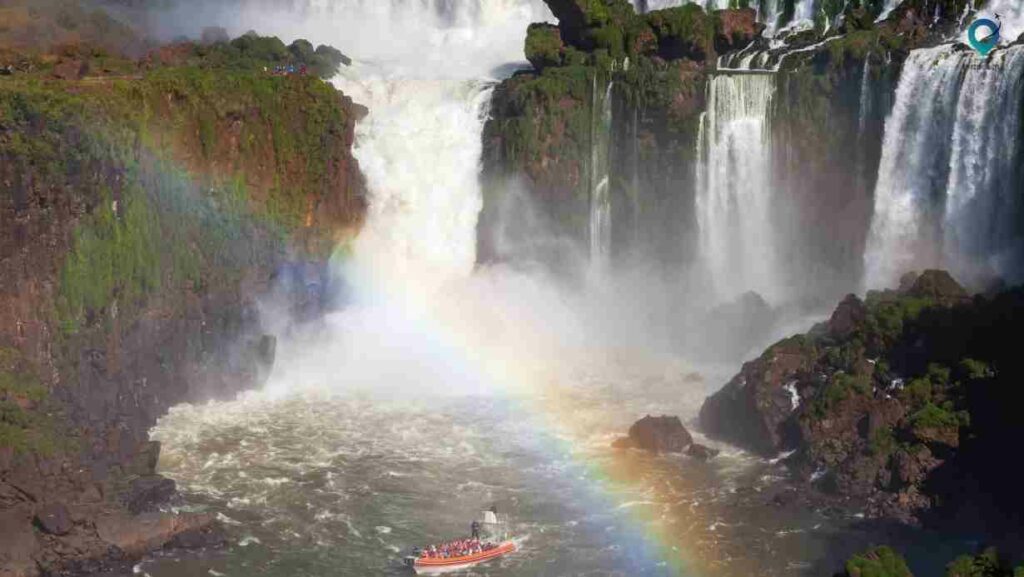
The Jet Boat Safari at Iguazu Falls is an adrenaline-pumping adventure that allows visitors to get up close and personal with the immense power and misty embrace of the falls. This thrilling experience takes participants on a high-speed boat ride along the Iguazu River, navigating through the rapids and ultimately venturing beneath the cascading waters of the falls themselves.
The adventure begins as visitors board specially designed boats equipped to withstand the intense currents and spray of the falls. The boat captains, experienced and knowledgeable about the river’s dynamics, skillfully maneuver through the river, providing a thrilling yet safe experience.
2. Hike, Bike, and Paddle: Explore trails, cycle paths, and kayaking adventures around the falls.

Exploring the Iguazu Falls region involves a myriad of activities for nature enthusiasts and adventure seekers. Hiking, biking, and kayaking offer immersive ways to experience the stunning landscapes surrounding the falls.
Hiking Trails : The Iguazu National Park and Iguaçu National Park boast a network of well-marked trails catering to varying fitness levels. Visitors can embark on guided or self-guided hikes, discovering the lush rainforest, diverse flora, and occasional wildlife sightings along the way. Trails like the Macuco Trail lead to panoramic viewpoints, while the Lower and Upper Circuit trails offer close-up encounters with the falls.
Cycling Paths: Cyclists can explore designated cycling paths around the parks, offering a different perspective and a chance to cover more ground. These paths provide a scenic journey through the verdant landscapes, allowing riders to enjoy the natural beauty at their own pace.
Kayaking Adventures : Adventurous souls can opt for kayaking experiences along the Iguazu River. Paddling through the river’s gentle currents and taking in the surrounding scenery provide a unique way to appreciate the tranquility and beauty of the area. Kayaking tours often offer glimpses of wildlife along the riverbanks, adding to the thrill of the adventure.
Exploring these trails, cycle paths, and kayaking opportunities not only allows visitors to immerse themselves in nature but also provides an active and engaging way to discover the diverse ecosystems and stunning vistas around the Iguazu Falls.
3. Parque das Aves: Visit this bird park to witness diverse avian species up close.
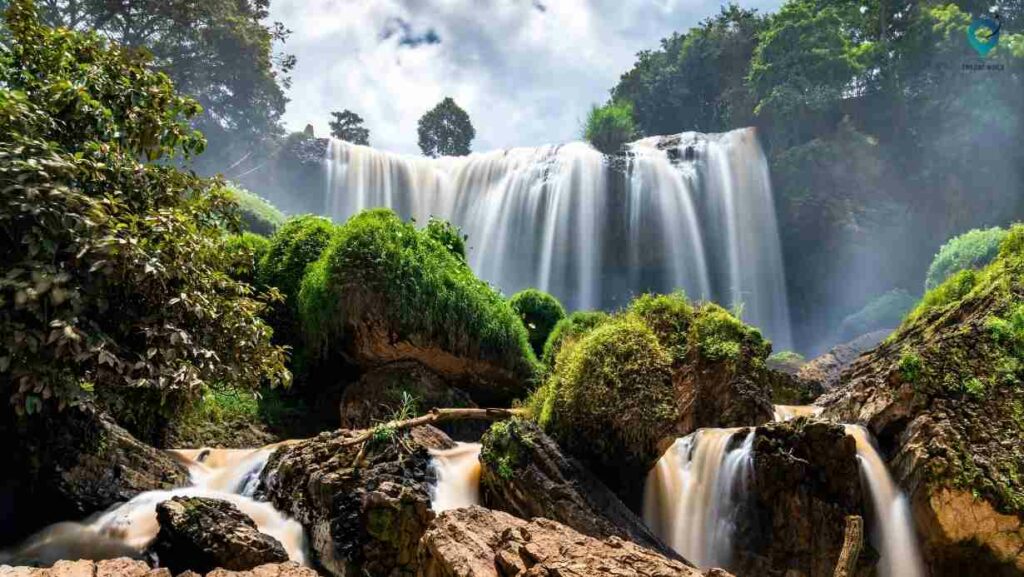
Parque das Aves, meaning Bird Park in Portuguese, is a delightful sanctuary adjacent to the Iguazu Falls. This conservation project serves as a haven for a myriad of bird species, offering visitors a captivating experience amidst lush surroundings.
Avian Diversity: The park is home to an impressive array of avian species, including toucans, macaws, parrots, and colorful tropical birds. Visitors have the opportunity to observe these birds up close in spacious aviaries designed to mimic their natural habitats.
Interactive Experiences : Parque das Aves also offers interactive experiences where visitors can learn about conservation efforts and the importance of preserving these diverse ecosystems. Educational presentations and encounters with birds provide insight into their behavior, habitats, and conservation challenges.
4. Marco Das Américas: Stand at the tri-border between Brazil, Argentina, and Paraguay for panoramic views.

Marco das Américas, also known as the Triple Frontier, marks the meeting point of Brazil, Argentina, and Paraguay. Positioned at this unique geographic intersection, visitors can enjoy breathtaking panoramic views and witness the convergence of the Iguazu and Paraná rivers.
Panoramic Vistas : Standing at Marco das Américas offers visitors stunning vistas of the surrounding landscapes, including the vast river systems and the distinct borders of the three countries. It’s an excellent spot for capturing memorable photographs and appreciating the geographical significance of this meeting point.
Cultural Significance : Apart from its geographical importance, Marco das Américas holds cultural significance, reflecting the shared borders and histories of these neighboring nations. Visitors can gain insights into the cultural diversity and historical connections of the region while taking in the panoramic views.
5. Iguazu National Park: Explore UNESCO World Heritage-listed trails and viewpoints
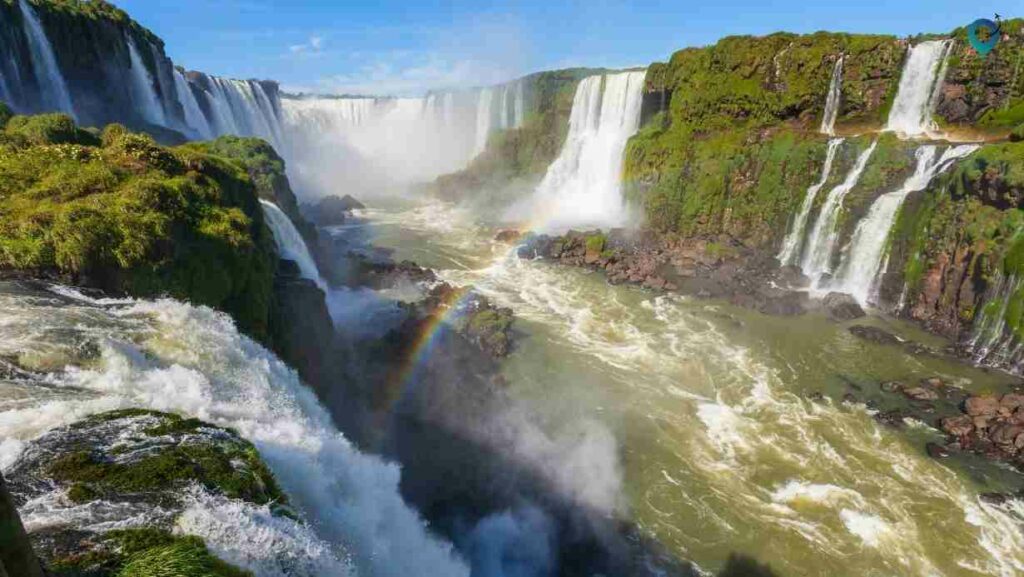
Iguazu National Park, designated as a UNESCO World Heritage Site, encompasses the Argentine side of the Iguazu Falls and offers a plethora of trails, viewpoints, and natural wonders to explore.
UNESCO World Heritage Site : The park is renowned for its unparalleled natural beauty and biodiversity. Visitors can embark on well-maintained trails that lead to various viewpoints offering spectacular panoramas of the falls from different angles, including the iconic Devil’s Throat.
Immersive Experiences : Exploring Iguazu National Park provides opportunities to witness diverse flora and fauna, with chances to spot wildlife such as coatis, toucans, and colorful butterflies. Guided tours and informational signage along the trails enhance the experience by providing insights into the park’s ecosystems and conservation efforts.
Visiting Iguazu National Park allows travelers to immerse themselves in the natural wonders of the falls while appreciating the significance of conservation efforts in preserving this UNESCO-listed treasure.
6. Itaipu Dam: Tour the world’s second-largest hydroelectric plant for a unique engineering perspective.

The Itaipu Dam, situated on the Paraná River, stands as one of the world’s largest hydroelectric power plants and a remarkable engineering feat.
Engineering Marvel: A guided tour of the Itaipu Dam offers visitors a fascinating insight into the intricate engineering and construction of this colossal structure. Visitors can learn about the technological innovations and challenges involved in harnessing hydropower on such a grand scale.
7. Helicopter Tour: Gain a breathtaking aerial view of the falls and surrounding landscape
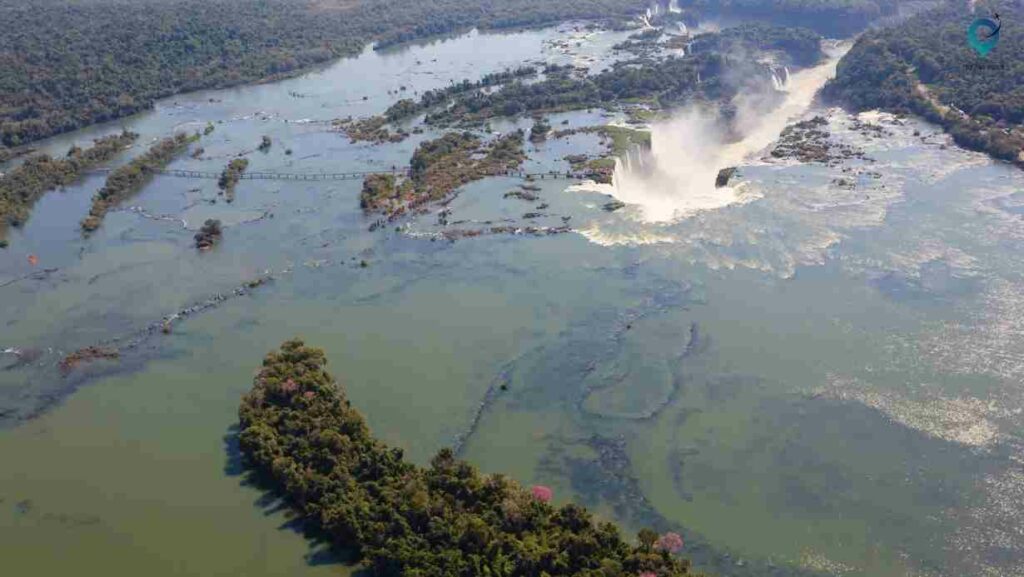
Embarking on a helicopter tour provides a unique and breathtaking perspective of the majestic Iguazu Falls and the expansive landscapes surrounding it.
Aerial Vantage Point : Helicopter tours offer an unparalleled view of the falls from above, allowing visitors to witness the sheer scale and grandeur of this natural wonder. Passengers can marvel at the rushing water, the lush greenery of the rainforest, and the convergence of the Iguazu and Paraná rivers.
Unforgettable Experience : The exhilarating sensation of soaring above the cascading waters and getting a bird’s eye view of the entire expanse creates an unforgettable and awe-inspiring experience. The helicopter ride provides ample photo opportunities for capturing the beauty of the falls and the surrounding landscapes from a unique angle.
8. Macuco Safari: Embark on a jungle adventure including a boat ride near the falls.
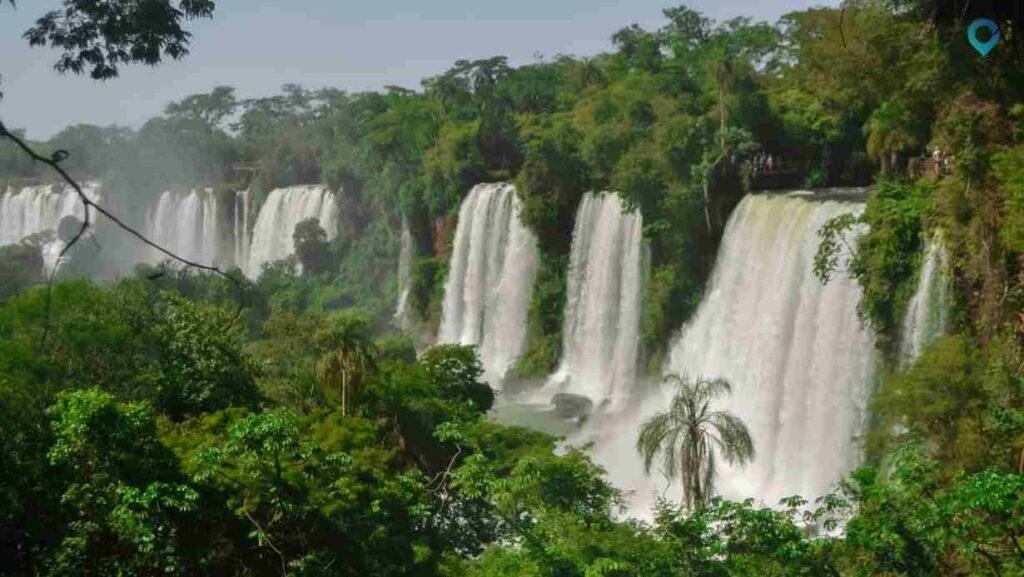
The Macuco Safari offers an exciting and immersive jungle experience combined with a thrilling boat ride that gets visitors up close to the Iguazu Falls.
Jungle Adventure: The adventure begins with a jungle trek through the lush rainforest of the Iguazu National Park. Visitors can immerse themselves in the sights and sounds of the jungle, witnessing various flora and fauna along the way.
Boat Ride Near the Falls: The highlight of the Macuco Safari is the boat ride that takes participants near the falls. Navigating the river, visitors can feel the mist and hear the thundering roar of the falls, creating an exhilarating and memorable experience.
9. Rafting: Experience the adrenaline rush with a rafting expedition along the river.
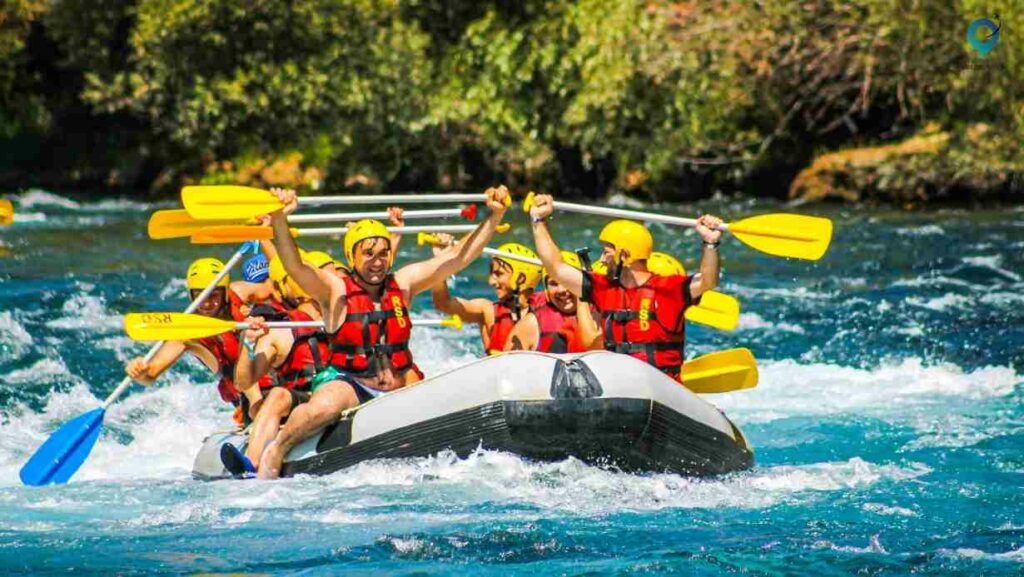
For adrenaline enthusiasts, rafting along the Iguazu River offers an exhilarating and adventurous experience amidst the stunning natural surroundings.
Adventurous Expedition : Rafting expeditions on the Iguazu River provide an adrenaline-packed journey through the river’s rapids and currents, offering an exciting and challenging adventure for participants.
Scenic Thrills : Apart from the adrenaline rush, rafters can enjoy the scenic beauty of the surrounding landscapes, including lush vegetation and the breathtaking vistas of the river and its gorges.
10. Night Jungle Tour: Discover the nocturnal wildlife and sounds of the jungle.
A Night Jungle Tour offers a unique opportunity to explore the rainforest after sunset, immersing oneself in the mystical ambiance of the nocturnal world.
Nocturnal Wildlife Exploration : Led by experienced guides, visitors can embark on guided walks or tours through the jungle trails. This adventure provides glimpses of nocturnal creatures such as owls, night monkeys, and various insects that come to life after dark.
Enchanting Atmosphere : The jungle transforms at night with different sounds, scents, and activities. Participants can experience the magical ambiance of the rainforest illuminated by moonlight and observe how various species adapt and thrive during the nighttime hours.
11. Eat at Local Restaurants: Delight in authentic Brazilian and Argentine cuisine.

Sampling the local cuisine at restaurants in Puerto Iguazu and Foz do Iguacu offers a flavorful journey into the traditional dishes of Brazil and Argentina.
Authentic Gastronomic Delights : Visitors can savor authentic Brazilian specialties like feijoada (a hearty bean stew), picanha (grilled beef), or traditional Brazilian barbecue. Argentine cuisine, renowned for its steaks, empanadas, and dulce de leche, provides a rich and savory dining experience.
Cultural Immersion : Dining at local restaurants not only offers a chance to taste delicious dishes but also provides insight into the cultural influences and culinary traditions of the region through food presentation and flavors.
12. Visit Museums: Learn about the local history and culture at Puerto Iguazu’s museums.
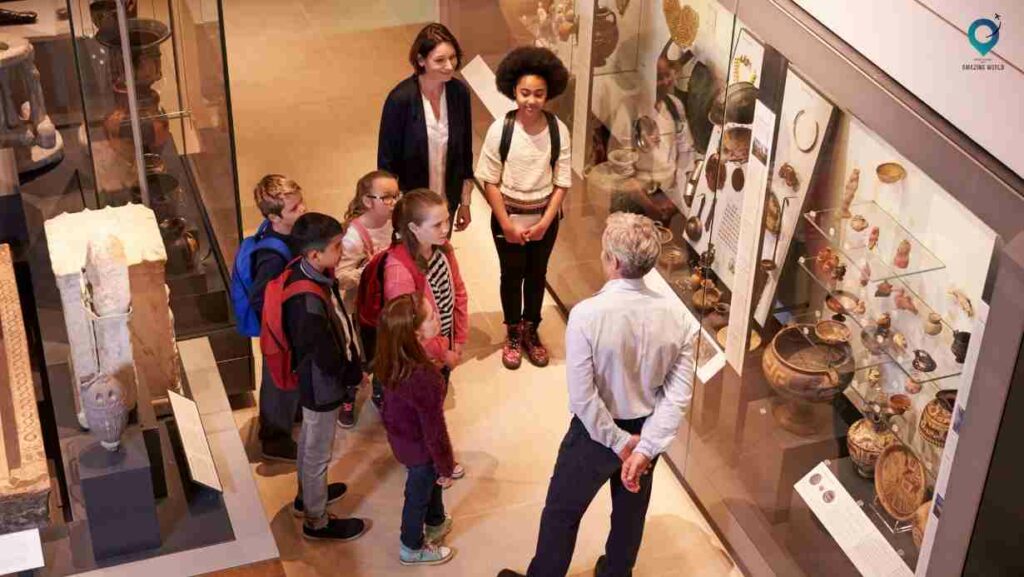
Exploring museums in Puerto Iguazu provides a deeper understanding of the region’s history, culture, and natural heritage.
Historical Insight : Museums like the Guira Oga, which focuses on wildlife conservation, and the Mborore Museum, which showcases the indigenous Guarani culture, offer informative exhibits and artifacts that elucidate the area’s historical and cultural significance.
Educational Experience : Visitors can engage in interactive displays, learn about local traditions, and gain insights into the conservation efforts and the significance of preserving the region’s natural and cultural heritage.
13. Shopping: Explore local markets for souvenirs and handicrafts.

Local markets in Puerto Iguazu and Foz do Iguacu are treasure troves for unique souvenirs, crafts, and indigenous products.
Souvenir Hunting : Visitors can browse through artisanal markets offering a variety of handicrafts, including traditional Guarani artwork, handwoven textiles, jewelry, and other locally made items, providing an opportunity to take home authentic mementos.
Cultural Exchange : Engaging with local artisans and vendors not only allows visitors to acquire souvenirs but also facilitates cultural exchanges, where one can learn about the crafting techniques and cultural significance behind these handmade items.
14. Cultural Shows: Enjoy traditional dance and music performances.
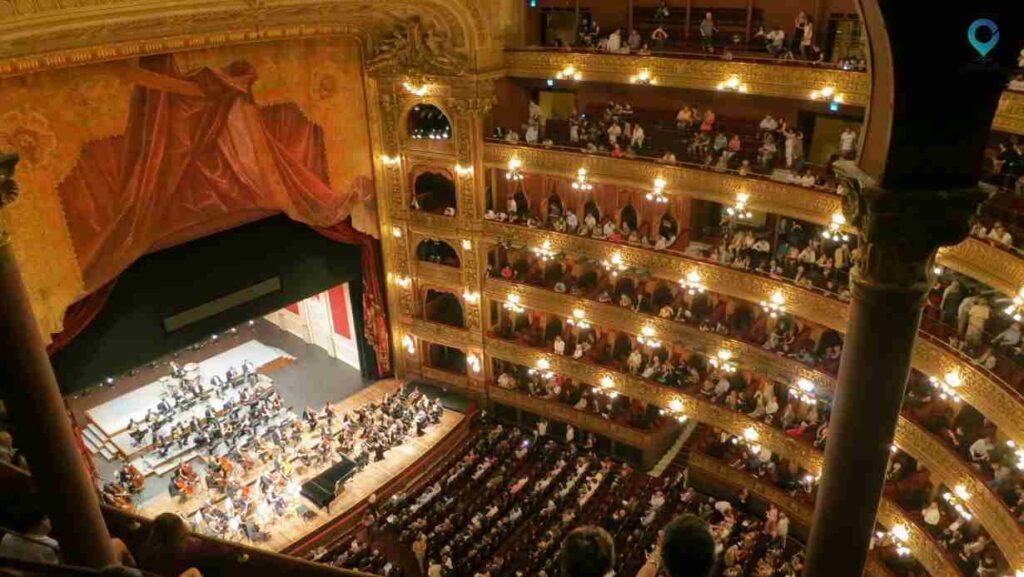
Attending cultural shows featuring traditional dance and music showcases the vibrant heritage and artistic expressions of the region.
Artistic Performances : These shows often feature lively performances with vibrant costumes, rhythmic music, and energetic dances, such as the Argentine tango or Brazilian samba, providing a captivating experience for spectators.
Cultural Immersion : Through these performances, visitors can immerse themselves in the local culture, experiencing the passion and energy that embodies the traditional music and dance forms of Brazil and Argentina.
15. Relax in Thermal Baths: Unwind at nearby thermal springs for a rejuvenating experience.

After the adventures and explorations around Iguazu Falls, visitors can indulge in relaxation and rejuvenation by visiting nearby thermal baths. These thermal springs offer a serene and therapeutic environment, allowing travelers to unwind amidst natural geothermal pools.
Therapeutic Healing : The thermal baths in the region are renowned for their mineral-rich, warm waters. These waters are believed to possess healing properties that can ease muscle tension, improve circulation, and promote overall well-being. The mineral content, such as sulfur, calcium, and magnesium, is thought to have therapeutic effects on the body.
Tranquil Ambiance : Surrounding the thermal springs are serene landscapes, often embraced by lush vegetation and tranquil settings. Visitors can bask in the peaceful ambiance while soaking in the warm waters, providing a sense of relaxation and tranquility.
Rejuvenating Experience: The experience of soaking in the thermal baths after a day of activities offers a delightful escape, allowing visitors to unwind and recharge both physically and mentally. It provides an opportunity to pause, reflect, and rejuvenate amidst nature’s soothing embrace.
Tips for Visitors
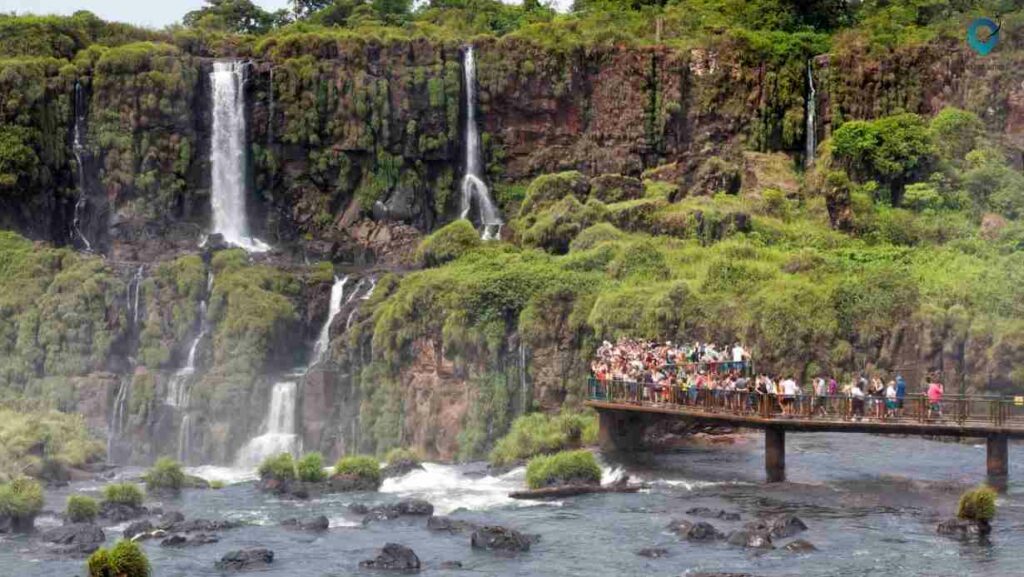
Best Time to Visit: Plan your visit during the dry season (between May to September) to witness the falls at their fullest and enjoy clearer skies for better visibility and outdoor activities.
Comfortable Attire: Wear comfortable clothing and sturdy footwear suitable for walking trails and exploring the falls. Don’t forget waterproof gear, especially during boat tours or closer encounters with the falls.
Sun Protection: Bring sunscreen, hats, and sunglasses to shield yourself from the sun’s rays, especially during outdoor excursions.
Stay Hydrated: Carry water bottles to stay hydrated, especially in the tropical climate surrounding the falls.
Plan Ahead: Consider booking tours or accommodations in advance, especially during peak seasons, to secure preferred activities and accommodations.
Respect Nature: Follow Park regulations, avoid littering, and respect wildlife for a more enjoyable and responsible experience.
Visiting Iguazu Falls and its surrounding areas in Puerto Iguazu and Foz do Iguacu offers an unforgettable adventure filled with natural wonders and thrilling activities. From the jaw-dropping beauty of the falls to the diverse array of adventure opportunities, the region caters to nature enthusiasts, adventure seekers, and those seeking relaxation amidst stunning landscapes.
Exploring the trails, taking in the breathtaking vistas, experiencing adrenaline-pumping adventures, and discovering cultural and historical sites provide a comprehensive experience for visitors. Whether it’s witnessing the falls from various viewpoints, embarking on boat tours, exploring the national parks, or engaging in unique activities like helicopter tours and thermal baths, there’s something for everyone at Iguazu Falls.
Remembering to plan accordingly, respect the environment, and immerse oneself in the wonders of nature contributes to an enriching and fulfilling experience. Visiting Iguazu Falls is not just about witnessing a natural marvel; it’s about creating lifelong memories and connecting with the beauty and power of the natural world.
How much did you like Our detailed THE TOP 15 Things To Do in Iguazu Falls, Argentina ? Review Also, please share these Blogs with your friends on social media.
Recommended
- Eno River State Park
- Tyger River Park
- Lake Welch Beach
- Little Elm Beach
- Cypress Bend Park

Meet David Hoper, a passionate travel Blog writer with 7+ years of experience in travel content. Through his exemplary storytelling and engaging narratives, he shares his experiences and brings destinations to life. With a keen eye for detail and a love for exploration, he has cultivated a diverse portfolio of travel blogs that inspire and inform readers worldwide.
In this article:

Post written by: David Hoper
Leave a reply.
Your email address will not be published. Required fields are marked *
Save my name, email, and website in this browser for the next time I comment.

- November 20, 2023
Travel Guide 22+ Must-Visit Instagram Travel Destinations in 2024 | Amazingworld
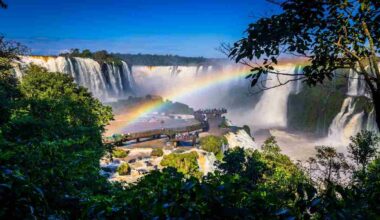
- November 22, 2023
Travel Guide Iguazu Golden Waterfall : The Most Beautiful Waterfall On Earth
You may also like.

Top 17 Must-See Tourist Attractions in Des Moines, IA: Your 2024 Guide
- 31.5K views
- 15 minute read

22+ Must-Visit Instagram Travel Destinations in 2024 | Amazingworld
- 16 minute read

Uber vs Lyft: Pros and Cons of Each Rideshare Service

Top 12 Ride-Sharing Apps for Safe Travel in 2024
- 24 minute read

The Future of Taxi Services: Technology and Innovation on the Horizon
- 10 minute read

A Complete Guide to the Greek Orthodox Easter Traditions
- 7 minute read
Our Latest Instagram Posts
@amazingworld.travel8.

How To Visit Iguazu Falls In Both Argentina And Brazil In One Day (2024)
Last Updated on June 6, 2024 by Nicole
Iguazu Falls, also spelled Iguassu or Iguaçu Falls, is a magnificent natural wonder located on the border between Brazil and Argentina. It is one of the largest and most awe-inspiring waterfalls in the world. My husband and I spent 3 nights and 2 days in Foz de Iguazu in Brazil in early November and visited the falls in both Brazil and Argentina. It was a fantastic experience and the breathtaking nature of these natural phenomenon was well worth our time. In this article, I write about where we stayed and how we saw Iguassu Falls, in addition to discussing how much time you really need to set aside to full appreciate this incredible site.
This post may contain affiliate links. That means that I may earn a small commission, at no extra cost to you, if you buy something through my site. This helps me run my website and produce the articles that I hope you find helpful.

Background To Our Trip To Iguassu Falls
Prior to going to Iguazu Falls, my husband and I spent 10 days on a Jaguar safari in the Pantanal in Brazil. This was a spectacular one-of-a-kind trip. We saw 14 different jaguars, in addition to seeing hundreds of caimans, capybaras, birds, and a handful of giant otters, tapirs and giant anteaters (among other animals). We spent days on beautiful rivers with barely a person or building in sight, spotting and watching these incredible creatures.
For more information about our trip, please take a look at Jaguar Safaris in the North And South Pantanal: Which Is Better?

After visiting the Pantanal, we spent 3 days in Bonito. Bonito is Brazil’s number one ecotourism destination. It is located in the Bodoquena Mountain range that borders the southern Pantanal.
In Bonito, we explored Gruta Do Lago Azul Natural Monument (Blue Lake Grotto) and Buraco Das Araras (Sinkhole of the Macaws). In addition, we snorkeled beautiful crystal clear spring fed water, surrounded by amazing enormous fish.
For more information about our time in Bonito, please see Best Things To Do In Bonito In Brazil .

After Bonito, we headed to Iguassu.

The Significance of Iguassu Falls
Iguassu Falls are considered one of the world’s most spectacular natural wonders. It is considered the largest waterfall system in the world and a World Unesco Heritage Site.
They span the border between Argentina and Brazil and consist of approximately 275 individual waterfalls. However, this number can vary between 150 and 300 depending on the season and water levels.
Iguazu Falls From The Argentine Side
The Argentine side holds 80% of the falls and offers the Upper and Lower Trails, allowing visitors to explore the falls from different perspectives.

The Upper Trail provides panoramic views of many falls. It is shorter than the Lower Trail at just half a mile and will take around an hour. It has catwalks leading you on top of the falls with views over the nearly 200 foot high falls. It’s very impressive. There are no stairs here and this path is accessible for all.

The Lower Trail gets you closer to the action and the spray. The Lower Circuit can take 2-3 hours to explore, with multiple viewpoints and paths. There are stairs on this path, but you can avoid some (but not all) of them with small detours.
The Argentine side tends to be more popular than the Brazilian side because of these trails. As you find yourself walking over the top of falls, sometimes only feet from them, the sensation is absolutely wild. The roar of the falls is deafening and you can feel the pounding water right through your body.

You will also come across beautiful birds and other wildlife while you walk along the different pathways.

Iguassu Falls From Brazilian Side
The experience from the Brazilian side is very different. It offers panoramic views of all of the Falls versus more intimate encounters with separate ones. Although most of the falls are in Argentina, the best views of them are from Brazil!

Additionally, the Brazilian side offers one long walkway (around 5000 feet or 1500 meters) allowing you to walk with a constant view of them. It is less tricky to navigate versus the Argentinian side, and you can avoid stairs. You can also walk the whole path in less than an hour.
The crown jewel at the end of the walkway is a thunderous set of 14 falls, called Devil’s Throat. They are about 260 feet (80 m) high, falling 2,000 cubic meters per second.
The walkway is designed for you to view the falls from various angles from the base to the side. At one point, you even walk perpendicular to the base where you will be enveloped and soaked from mist, wind and splashes. Many people bring a rain jacket or large plastic sheet to protect yourself from the water. Others simply embrace mother nature and leave this area absolutely soaked.

An observation tower, with its creaky elevator, completes the experience. It is from here that Eleanor Roosevelt supposedly lamented, “My poor Niagara…”
You can also see Devil’s Throat from the Argentine side if the observation deck is open but it is a view from the top and it may be closed if there is or has been severe rain or flooding.
Details Of Our Stay In Iguaçu Falls
John from Brazil Nature Tours organized our time and accommodation in Foz de Iguazu (as he did for our time in the Pantanal).
We had a lovely guide who collected us from the airport from Foz de Iguazu and took us to our accommodation, The Sanma Hotel . He remained our guide for our whole stay.

The Sanma Hotel was a five star luxury hotel very close to Iguazu Falls in Iguazu National Park in Brazil. We had a large beautiful room and loved spending time by the pool and eating dinners at the Bar. Food and service were both excellent.
Important Tips For Your Visit
Below I discuss the day to day details of our visit to Iguassu Falls. However, beforehand, I wanted to highlight some important information and tips from our experience.
- Both Brazil and Argentina have created national parks where their side of Iguazu Falls are located. Both countries call their parks, Iguazu or Iguaçu National Park.
- You can visit both Argentinian and Brazilian sides of Iguassu Falls in one day. We did and thoroughly enjoyed ourselves. However, you need to get to the Argentinian side first and at opening to avoid the crowds because you walk along narrow bridges and pathways. As the day gets busier, you fall behind people who have a different schedule and it becomes more difficult to pass them. In addition, vantage points become very busy and it becomes harder to take photos without others in them.

- We were in good physical health and able to walk the Argentinian side at a moderate pace without any breaks (other than stopping to enjoy views or taking photos). We didn’t hurry but we also didn’t sit and have refreshments. If you walk slowly or would like to take breaks from sightseeing while on the Argentinian side, it would be harder to do both waterfalls in one day.

- We arrived at the Brazilian side in the early afternoon and it was busy. However, because of how the pathway was set up (see below), we still had an easy time walking and enjoying the spectacular views of the Falls. Even with lots of people on the path, there were several spots to stop and take photos without anyone else in our photos or blocking our view.
- We ate a late lunch on the Brazilian side. At the end of the walk along the Falls, there was a very large buffet-style restaurant called Porto Canoas that also had beautiful views of the Falls. It was expensive relative to other places in Brazil, but not when compared to other similar type restaurants in other touristy spots in the world. The food was very good.
- We decided to give ourselves an extra free day in Foz de Iguazu certain that there would be multiple activities from which to choose, especially in the national parks in Argentina and Brazil. However, it was very disappointing. The border delays meant returning to Argentina was unattractive, and there wasn’t much else offered in the Brazilian National Park other than the Falls.
- There was some silly museums (like a Wax Museum) in Foz de Iguazu but nothing of substance. We asked our guide to take us into the city center to explore, but except for a couple of streets with some shops meant for locals, there was nothing else to see. In addition, there were favelas (slums or shanty towns) that meant walking on our own was unsafe.
- There weren’t even any restaurants in downtown Iguazu or beyond our hotel that were recommended. Accordingly, we ate all our meals at the hotel bar.
- We gave ourselves one extra day for exploring or to sit by the hotel pool and relax. However, we faced torrential rains on this day and ended up spending the day inside our hotel room.
- Accordingly, if you are short of time, it is totally reasonable to only allot one full day to see both sides of the Falls. You will not be missing anything of significance in Iguzu about which you would later learn and regret not leaving more time.
- However, if you find yourself anywhere near this part of the world, it would be an absolute shame not to include Iguazu Falls in your itinerary. Without a shadow of a doubt, they were absolutely breathtaking to see and I was thrilled they were part of our time in Brazil and Argentina.
Day One Of Our Iguazu Itinerary: Arrival
On our first day, we arrived late in the afternoon. We only had time to enjoy a nice dinner at our hotel and then, head to bed for our early start.
Day Two : Full Day Visit Of Both Sides Of Iguassu Falls
The next day, we were picked up around 6:00 am by our guide and driven around 15 minutes to the Argentine Border.
Unfortunately, we had to stand in line 1.5 hours to get our passports stamped in order to cross the border. Apparently, this was normal when we went (but the Argentinian government constantly changes the rules about what is required to cross its’ border so it may be faster when you go). Once done, we drove another 30 minutes to Iguazu National Park.
We loved this National Park and the upper and lower paths offering us multiple different vantage points to enjoy the Falls.

It was very quiet when we arrived, allowing us to have most of the Park and the trails to ourselves. It made the narrow bridges and small observations posts all the more special because we were able to enjoy our views in a serene atmosphere, practically alone.
We spent around 3 hours in the Park and felt totally satisfied with our time there. We didn’t feel rushed and savored all of the breathtaking vistas.

Had we arrived later, we would have definitely faced crowds and the experience would have been totally different. As it was, we were walking past crowds and crowds of people on our exit. At that point, it felt like a major tourist attraction.
Brazilian Side of Iguaçu Falls
Our return through the border was a lot quicker. We did not have to line back up to get our passports stamped.
Once through the border, we drove around 20 minutes to Iguazu National Park.
There is a massive parking lot and Tourist Center at the opening of the Park. Most people purchase tickets and are required to line up for shuttle buses as there is very little parking near the Falls. Since we had a licensed guide, we had to get out and purchase our tickets from inside the Tourist Center, but we drove the rest of the way to the Falls with him.
It was a pretty 10 minute drive through the National Park to the start of the path along the Falls.
As described, it was an easy walk, mostly downhill, along a paved wide open walkway. The Falls were always to our right, and we always had easy unobstructed views.

There were lots of people around, but it didn’t feel crowded and our views were spectacular.
We ended up absolutely soaked (happily) at the end when we chose to walk on the perpendicular path towards the base of Devil’s Throat. Like the Argentinian side, it was very cool to hear and feel the thunderous roar of the water as we got closer and closer.
Finally, we walked to the only sit down restaurant and had a delicious lunch with different views of the Falls. After that, our tour ended and our guide dropped us off at our hotel about 4:00 pm.
Day Three: Relaxation
Although we had great plans to explore more of the area, there wasn’t anything of interest for us to see or do. Unfortunately, there was a ferocious rainstorm and couldn’t even spend the day by the pool.
However, we caught up on our sleep and ultimately, was grateful for the excuse to do nothing much after 2 very full weeks of travel and exploration.
Iguassu Falls in Argentina and Brazil are Unesco World Heritage Sites and one of the natural wonders of the world. They are worth adding to any itinerary in Brazil or Argentina.
You can easily see both sides of the Falls in one day, and do not need to allot any more time if you do not have the time to do so.
Similar Posts

26 Amazing Summer Weekend Getaways in Europe (in 2024)
Last Updated on March 13, 2024 by Nicole There are many incredible summer destinations in Europe if you are looking…

Best 2 Week Itinerary In Namibia (+ Travel Tips & Maps) (2024 Review)
Last Updated on April 9, 2024 by Nicole Namibia is a large African country located in the southwest of Africa,…

Best Things To Do In Bonito In Brazil (2024)
Last Updated on May 29, 2024 by Nicole Bonito is a municipality located in the Brazilian state of Mato Grosso…

A Mind Blowing 17 Day Adventure In Indonesia With Teens (2024)
Last Updated on March 13, 2024 by Nicole Whenever people hear “Indonesia”, they immediately think of “Bali”. However, that is…

Best 4 Day Adventure In The Amazon With Teens (2024)
Last Updated on March 13, 2024 by Nicole Silence…except for the dip of a paddle into the water and the…
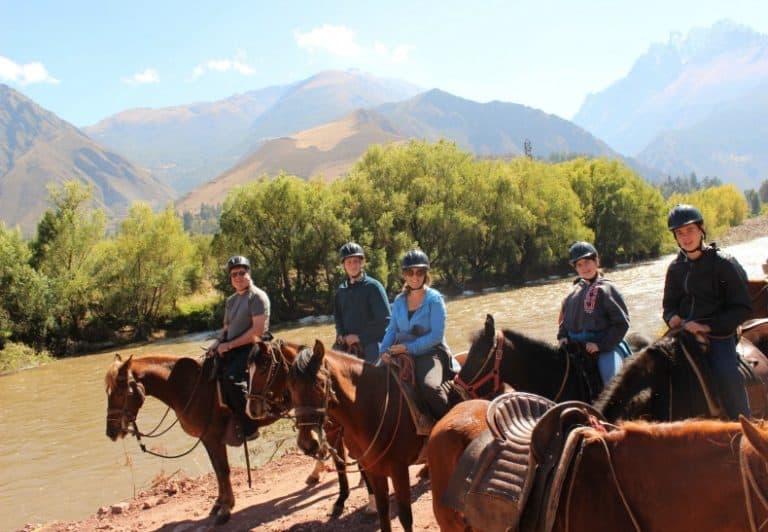
Peru And Machu Picchu With Kids: Would We Do It Again?
Last Updated on March 13, 2024 by Nicole In the summer of 2016, we took our 15 and 13 year…
Leave a Reply Cancel reply
Your email address will not be published. Required fields are marked *
Privacy Overview
DOWNLOAD THE ITINERARY
- Email Address *

7 Best Waterfalls In Argentina
If you are looking for the best waterfalls in Argentina to add to your itinerary, you came to the right place!
Argentina is one of the most diverse countries in South America, and it is home to some incredible waterfalls. And by incredible, we mean there is a waterfall in Argentina that is classified as one of the seven natural wonders of the world!
From the majestic waterfalls on the border with Brazil to the untouched nature in Patagonia, Argentina will enchant you with its sheer beauty and breathtaking sights.
If you’re ready to discover the best waterfalls in Argentina, let’s dive right in!
Overview Best Waterfalls In Argentina
Before you go chasing waterfalls in Argentina, keep in mind that these are not like tropical waterfalls in SE Asia. Most of them are high in the mountains, and it is not possible to swim in many of them. Nonetheless, they are a breathtaking sight.
For those who love swimming in waterfalls, we will note the ones suitable for swimming on our list below! For the rest, save the swimming for the landscaped pool in your hotel!
Here are the best waterfalls in Argentina that should be on your Argentina itinerary:
Iguazú Falls Waterfall
Salto del agrio waterfall, rio colorado waterfalls, cascada de los duendes, chachin waterfall – hua hum, cascada escondida, el bolsón, cascada de toro muerto.

It wouldn’t be appropriate to open this list with any other than the majestic Iguazú Falls . This waterfall was classified as one of the seven natural wonders by UNESCO in 1986, and it is not hard to see why! Iguazú Falls is the largest waterfall system in the world – stretching for almost 3km along the border of Argentina and Brazil.
The waterfalls are made up of about 275 different waterfalls, some of them dropping from more than 80m. You can visit the waterfall from both the Argentinian and Brazilian sides, and each offers a different experience of this magnificent waterfall. The most outstanding fall is called the Devil’s Throat.
Walk on the wooden boardwalk along the waterfalls to see them from close up, just be prepared that you’ll get rather wet from the spraying water. It is also possible to get into a boat to some of the waterfalls and observe them from below.
The nearest Argentinian town is Puerto Iguazú. The most common way to visit is by taking a flight from Buenos Aires.

Agrio Waterfall is a picturesque waterfall, dropping from over a 60m cliff into a small teal green pool at the bottom. The contrast between the green pool, red rocks, and white waterfall make for an incredible scene.
A colourful rainbow appears next to the waterfall at certain times, making this waterfall look like it came straight out of a fairytale. The best time to visit Agrio waterfall is in the morning when the sun is in front of the waterfall and there is the highest chance of a rainbow forming next to it.
There are more waterfalls along the river, so it makes for a nice hiking trip. It is even possible to swim at some spots in the area.
Agrio waterfall is located about 15km from Caviahue, a mountain town close to the Chile border.
You will find Rio Colorado Waterfalls in the canyons of Cafayate, a popular hiking area. It is no surprise that the most popular way to visit this waterfall is on a trek.
The Colorado River creates unique waterfalls falling from different heights along the trail. The most iconic waterfall is the one dropping between two large boulders surrounded by lush vegetation.
One thing to keep in mind, once you reach the starting point of the hiking area, you will be approached by many guides offering their services. You don’t need one, you are allowed to hike to the waterfalls on your own.
The hike to the waterfalls is about 3 hours long, and you will pass multiple waterfalls along the way. Be sure to bring enough water for the return trip.
The closest city to the Rio Colorado waterfalls is Cafayate, in northwest Argentina.

Cascada de Los Duendes is a waterfall on the popular nature trail close to Bariloche, and you can easily reach it by bus from the city. It is a spot popular with Argentinian families who want to spend their weekend in nature, and it is a relaxing picnic spot with grills and tables.
The Los Duendes waterfall is about 5m tall, cascading down several levels. The trail leading to the waterfall is relatively flat, short and not challenging. That makes it perfect for families with small kids and older people who can’t commit to a long hike.
Once you reach the waterfall, you can continue the walk up to the Lago Gutierrez viewpoint for a panoramic view of the lake and surrounding area.
Chachin waterfall is one of the most photogenic waterfalls in Argentina. This 30 m high waterfall dramatically drops from the cliff in the middle of the Valdivian Forest. You have two options to get to the waterfall – hiking or by boat.
Taking a boat from the glacial Lacar Lake to the Chachin Waterfall is one of the most popular tourist activities in the area, as you can also visit other highlights of Lanín National Park along the way. If you drive to the waterfall, the walk from the parking lot takes about 20 minutes.
It is not possible to get too close to the waterfall, but it is spectacular to observe and take photos from the wooden viewing platform.
The closest town to the Chachin Waterfall is San Martín de Los Andes.

Escondida Waterfall is one of the best things to do in El Bolson . It’s another scenic waterfall you can reach on an easy hike. The hike to the waterfall takes about 30 minutes, and you will have to pay an entrance fee to spend time at the waterfall.
Depending on the time of the year, the water flowing across these falls changes. It is possible to swim in the lake at the bottom of the waterfall, so pack your swimming costume!
Cascada Escondida is located about 10km from El Bolsón.
This waterfall has a rather interesting name, but don’t worry, you won’t find any dead bulls along the way. It is a perfect spot to spend a day in nature, popular with families, as picnic tables and grills are available.
It is possible to swim in the lake at the bottom of the waterfall, and it makes for a truly memorable experience on a hot summer day. Keep in mind that the lake gets pretty deep where the waterfall drops, so non-swimmers should stay close to the shore where the water is shallow.
If you have time, hike along the river to reach another smaller waterfall and swimming point.
Keep in mind that recently you need to pay an entrance fee to spend time at this waterfall.
Cascada de Toro Muerto waterfall is located about 150km from Cordoba.
Summary: Best Waterfalls In Argentina
And there you have the list of the best waterfalls in Argentina, ready for your next trip. With stunning waterfalls all over the country, you can add a waterfall visit to your itinerary.
While most people visit only the incredible Iguazú Falls, other Argentinian waterfalls are well worth visiting and adding to your itinerary if you want to experience more of the majestic beauty that this country is famous for.
Leave a Comment Cancel Reply
Your email address will not be published. Required fields are marked *
This site uses Akismet to reduce spam. Learn how your comment data is processed .
- Documentary
- Entertainment
- Building Big
- How It’s Made
- Monarchs and Rulers
- Travel & Exploration
Travel and Exploration
Content by tokyo convention & visitors bureau.
- Gallery - Tokyo
- Gallery - Wakayama
The Best Known Waterfalls in Argentina
When it comes to Argentina's best waterfalls, it’s the iconic Iguazu Falls that so often dominates. And yet, there’s much more where that came from. Read on to discover more of the best waterfalls in Argentina.
From the towering peaks of the Andes to the vast, fertile plains of the Pampas, Argentina boasts a diverse range of landscapes. Argentinian waterfalls have carved their way into this geographical mix, tumbling through forests and crashing into canyons. And, while Iguazu tends to steal the show, there are plenty of waterfalls in Argentina to explore.
In this article, we will embark on a journey to discover Argentina’s best waterfalls, beginning with the most iconic and awe-inspiring of them all.
Iguazu Falls: The Tallest Waterfall in Argentina?
Three Musketeers Falls at Iguazu Falls (Photo: Mark Meredith via Getty Images)
While there is no officially recognized tallest waterfall in Argentina, Iguazu Falls is undoubtedly a top contender. Straddling the border between Brazil and Argentina, both countries have a UNESCO World Heritage-listed national park that features these spectacular falls. Sometimes spelled Iguacu or Iguassu, the name originates from the Guaraní word for “great water,” and indeed it is already recognised as the largest of all Argentinian waterfalls by overall area.
Comprising 275 individual cascades, Iguazu Falls range from 200 to 269 feet in height and are interspersed with various islands. The falls are situated 14 miles before the Iguazu River merges with the Upper Paraná River, marking the border between Argentina and Brazil. The water surges at an astonishing average rate of 62,000 cubic feet per second, sometimes even reaching 450,000 cubic feet per second. One of the most striking features of Iguazu Falls is the Garganta do Diabo, or “Devil’s Throat,” a massive gorge from which a misty curtain ascends over 500 feet into the air.
Cascada Chachin
Cascada Chachin (Photo: Agustina Camilion via Getty Images)
Consistently hailed as one of Argentina’s best waterfalls, Cascada Chachin proves that petite can be powerful. Feeding on the snowy peaks in the Lake District of Neuquén near the Chilean border, this turbulent torrent courses through the rich Valdivian rainforest, its thunderous roar announcing its presence.
Salto del Agrio
Salto del Agrio (Photo: JackF via Getty Images)
When it comes to waterfalls in Argentina, Salto del Agrio, or Agrio Falls, is guaranteed to make people see red. Specifically, the rocks and the waters of this striking plunge waterfall have a distinct ochre hue. This is thanks to the volcanic geology of its setting within Neuquén’s Copahue Provincial Park, an awe-inspiring landscape formed by successive lava flows, which have also deposited minerals into the waters of the Río Agrio. Added to this is the pure drama of the spectacle of this 150-foot downpour into the vast chasm of the canyon it inhabits. Numerous other waterfalls grace the area, overseen by the looming Copahue Volcano.
Salto Encantado
Salto Encantado (Photo: Sebastian Jakimczuk via Getty Images)
Immersed in the intense greenery of the rainforest of Misiones, legend has it that the god of nature created Salto Encantado in honour of two ill-fated lovers who met their tragic end at the site. One can see why this captivating cataract inspired such a tale, as well as why it’s amongst the best-known waterfalls of Argentina. From its impressive drop of some 210 feet to its gossamer appearance as it falls, it lives up to the name of the “enchanted jump”.
Cascada de Los Alerces
Cascada de Los Alerces (Photo: Walter Macedo via Getty Images)
Tucked away in the Andes of northern Patagonia, located in a national park that bears its name, Cascada de Los Alerces is a charming 20-foot-tall waterfall resembling a delicate veil. The park, bordering Chile, boasts a landscape sculpted by successive glaciations, yielding remarkable features such as moraines, glacial cirques, and crystal-clear lakes. Dense temperate forests dominate the vegetation, giving way to alpine meadows beneath the craggy Andean peaks.
Mocona Falls
Mocona Falls (Photo: warenycia via iStock)
Millions of years ago, a geological fault occurred on the Uruguay River. The result was the extraordinary spectacle known as Mocona Falls. Situated in a dedicated provincial park in Misiones’ central-eastern region, this collection of waterfalls in Argentina are unusual in the extreme. Instead of following the conventional pattern of water cascading over a cliff or similar precipice, Mocona Falls runs parallel to the river, essentially splitting it lengthways, with water spilling off the side into a gorge. As a result, the height of Mocona Falls varies significantly depending on annual rainfall and thus the depth of the river, ranging from 7 to 26 feet, and on rare occasions, reaching up to 33 feet.
Argentinian Waterfalls
Argentinian Waterfalls (Photo: ivotheeditors via iStock)
As we’ve seen, the waterfalls of Argentina don’t stop at the iconic Iguazu. Indeed, from the geological phenomenon of Mocona to the delicate veil of Cascada de Los Alerces, Argentina’s waterfalls are as diverse as the landscape they call home.
You May Also Like
Alpine wonders: discovering the highest mountains in albania, central american summits: the highest mountains in central america, vietnamese heights: exploring the highest mountains in vietnam, blue ridge to appalachians: the highest mountains in north carolina, explore more, the last frontier’s peaks: the highest mountains in alaska, utah’s majestic ranges: discovering the highest mountains in utah, nevada’s sky-high challenges: the highest mountains in nevada, green mountain highs: the highest mountains in vermont, sky-piercing summits: the highest mountains in washington, volcanic giants: discovering the highest mountains in indonesia, serene summits: exploring the highest mountains in sri lanka.
Book With Confidence Contact Us Call Our Experts (877) 587-8479
- Alaska: Denali Discovery
- Alaska: Glaciers & Grizzlies
- Alaska: Northern Lights
- Argentina: Patagonia & Mendoza
- Costa Rica: Secluded Wildlife Adventure
- Louisiana: Gators & Gumbo Adventure
- Norway: Western Fjords Adventure
- Rwanda: Gorilla Trekking
- Tanzania: Great Migration Safari
- Travel Journal
- Sustainability
- Book With Confidence
- Contact Gondwana Ecotours
- (877) 587-8479
- SEE DATES & PRICES >
The Amazing Waterfalls of Argentina
Private & small group tours to the world's best destinations, join us in argentina.
Let’s Explore Iguazu Falls!
Iguazu Falls, located in South America , is a popular tourist destination . These waterfalls, between Brazil and Argentina , are surrounded by lush, green, subtropical national parks and are teeming with fauna and flora. The surrounding rainforest is a haven for more than 2,000 plant species, about 400 bird species, and more than 80 types of mammals, including jaguars and pumas!
Where Is Iguazu Falls?
Iguazu Falls, the most famous waterfalls of Argentina, are located in the northeast of Argentina and the southern region of Brazil. Approximately 80 percent of the waterfalls are found on the Argentinian side of the falls, while Brazil is home to just 20 percent of the falls. Iguazú Falls are part of the Iguazú National Park, created in 1934 and included as a World Heritage Site in 1984 by UNESCO. Iguazú Falls was named as one of the Seven New Natural Wonders of the Modern World in 2011.
Fun Facts About The Waterfalls of Argentina
Iguazu Falls, South America , is the largest waterfall system in the world. The falls extend for nearly 1.5 miles and are made up of 275 individual falls – although the number changes depending on the season. The tallest of the waterfalls, called the Devil's Throat, drops by more than 262 feet, which is nearly double the height of Niagara Falls in the United States!
- Iguazu Falls formed where the Iguazu River plunges over the rim of the Paraná Plateau, which was blasted out by an enormous volcanic eruption more than 130 million years ago.
- The Iguazu River is more than half a mile wide as it approaches the falls.
- More than 250 separate waterfalls stretched over 1.5 miles to make up these waterfalls between Brazil and Argentina .
- Approximately half of the Iguazu River flows through the narrow chasm of the Devil’s Throat. This feature can be accessed from both the Argentine and the Brazilian sides of the falls.
- The volume of water that flows through the falls during the rainy season is staggering. Iguazu Falls, which means “Big Water,” is a perfect name for this incredible natural feature!
When Should I Visit Iguazu Falls?
You can visit the waterfalls of Argentina all year round! However, it is best to visit the falls between August and October, and between February and April. During the rainy season (December to February), the park may have to close if the water becomes too high, and during the dry season (June to August), the falls may not be as impressive as when they are flowing freely.
Exploring Iguazu Falls
Once you arrive at the park, you may be wondering how you should explore the waterfalls between Brazil and Argentina. The park is divided into three sections, which you navigate on walkways that take you right up to the waterfalls and give you the best vantage points. Hiking along the walkways demonstrates just how powerful the waterfalls are, and gives you a close-up view of this incredible natural wonder!
- Upper Walkway (1 mile) - The Upper Walkway provides guests with a great panoramic view of the waterfalls on the Argentinian side of the park. You can also see hundreds of birds flying through the mist of the falls and nesting on the surrounding walls or Capuchin Monkeys hiding high up in the trees.
- Lower Walkway (1.5 miles) – As you walk along the Lower Walkway, you can see the park’s resident Coatis, which vaguely resemble raccoons. The coatis are subtropical animals and entertain park visitors with their cartoon-like antics, as well as their tendency to try to steal food from humans. The trail also offers visitors breathtaking views as you approach the falls. Once you arrive at the viewing platform, you can board a boat and take a trip under the falls to get a unique perspective of the fall’s incredible power.
- The Devil’s Throat – If you’re tired from your hike, give your feet a break and ride the park train through the rainforest to Devil’s Throat. This chasm is reached first by train and then by a system of wooden walkways that stretch across the Iguazu River. At least half of the river’s water passes through this J-shaped chasm. The viewing platform for Devil’s Throat perches right over the edge of the falls, giving you an incredible view of the deafening cascade of water falling below.
Making The Most Of Your Trip To Iguazu Falls
If you plan to visit the waterfalls of Argentina, you probably want to maximize the time you spend there. After you hike the lower and upper circuits, or visit Devil’s Throat, you may want to consider the following options to add to your adventure at Iguazu Falls, South America!
- Take a jetboat safari - the jetboat safari at Iguazu Falls is the most fun you’ll ever have in rushing water. Board a powerful twin-engine jet boat for an exciting four-mile trip down the Iguazu River and through the different tiers of the falls, with exceptional views of the gorgeous scenery. This thrilling adventure takes you right into Devil’s Throat, where the boat will accelerate over torrents and cascades, shooting the rapids and propelling you through the depths of the thunderous falls. After a unique adventure of getting thoroughly drenched, you’ll come out with a huge smile on your face knowing that you just survived going underneath one of the world’s largest waterfalls.
- Enjoy the thrill of a helicopter ride over the falls - a helicopter ride over the falls will give you a spectacular bird’s eye view that can’t be from the ground. You can either opt for a short ten-minute ride or a 35-minute trip, which will take you over Itaipu Dam and to Foz do Iguaco (on the Brazilian side of the falls), as well. This is a perfect way to get stunning photos of the falls from an incredible vantage point!
- Go Kayaking on the river - The Paraná is South America's second longest river after the Amazon and its name means “relative of the sea.” This kayaking trip starts with a gentle paddle that takes you to one of the Paraná ́s tributaries, the Urugua-í River. This smaller river is a perfect place to explore Argentina. Kayakers can also enjoy a swim in the river since there are no dangerous animals in its waters.
A Trip Of A Lifetime To Iguazu Falls In South America
For an adventure of a lifetime, look no further than Iguazu Falls in South America. This incredible network of waterfalls, located between Brazil and Argentina, is the perfect destination for new or seasoned travelers! From epic waterfalls to stunning sub-tropical scenery, Iguazu Falls has something for everyone to see. Enjoy the epic views, incredible rainforest, and flora and fauna found near the falls as you embark on an amazing journey into the very heart of Argentina!
Download a tour brochure for your Argentina tour dates and pricing.
Join the soul traveler's club see benefits >.
Iguazú Falls - The World’s Largest Waterfalls
It is often said that Argentina provides the show and Brazil enjoys the view of the Iguazú Falls, with Brazil dominating the panoramic side having several viewing walkways! So, which is the best side?
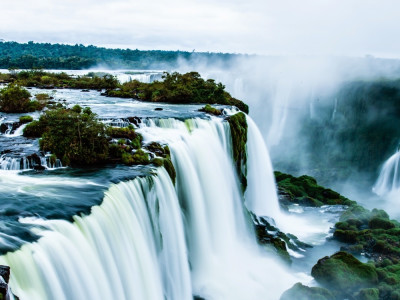
Iguazú Falls sits right at the border of Brazil and Argentina with both countries claiming to provide the best Iguazú experience. So, which country delivers? Enchanting Travels provides the lowdown for your trip to South America .
The Brazilian side provides a more stunning panorama, but the Argentine side has more vantage points from where you can actually get up close and personal with the falls.
The Iguazú Falls in South America are heralded as the most dramatic and among the most monumental waterfalls in the world , tumbling over the cliffs on the border with the Argentine province of Misiones and Brazilian state of Paraná.
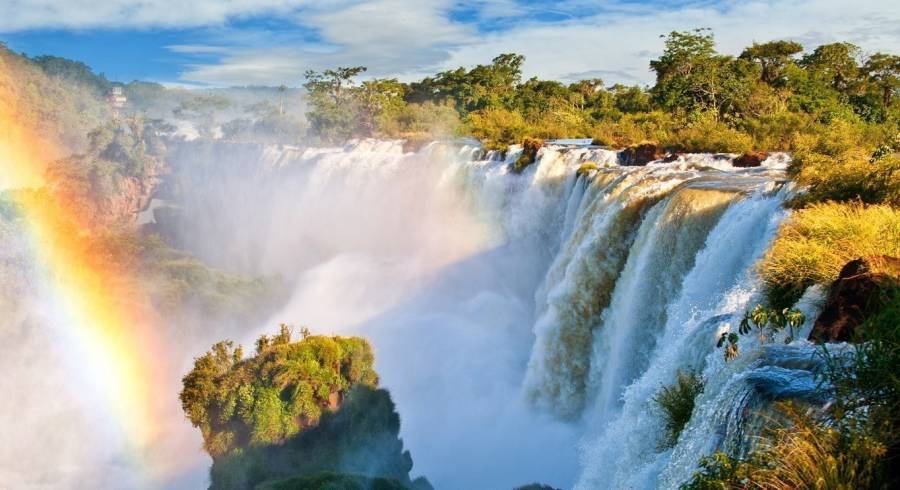
Voted as one of the Seven Natural Wonders of the World , the Iguazú Falls are undoubtedly the most visited place in Misiones and one of the most imposing natural attractions in the world.
Did you know? On her first sight of the tremendous Iguazú Falls, former First Lady of the USA Eleanor Roosevelt exclaimed, “Poor Niagara!”
When you think of waterfalls, the first names that automatically come to mind are of the dramatic Niagara Falls and the magnificent Victoria Falls in Zimbabwe and Zambia .
Now, the Niagara Falls are undoubtedly the world’s most famous, the Victoria Falls are surely the world’s largest, but the Iguazú Falls are unhesitatingly the most impressive and exquisite! During a trip to Argentina , it’s something you just cannot miss!
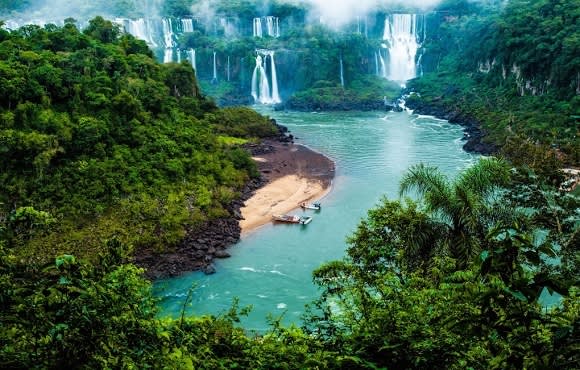
Also known as the Iguassu Falls and the Iguaçu Falls, the term Iguazú means ‘great waters’ in Tupi and Guarani language.
Ancient Brazilian tribes always knew about these tumultuous thunderous falls, but it was little known worldwide until it was officially discovered by the European explorer and Spanish Conquistador Alvar Núñez Cabeza de Vaca in 1541. Today, the falls are owned by the two UNESCO World Heritage sites – the Iguazú National Park in Argentina and the Iguaçu National Park in Brazil.
Taller than Niagara and wider than Victoria, the Iguazú Falls are the result of a volcanic eruption that left a large crack in the earth. The waterfall system consists of 275 falls along 2.7 km (1.67 miles) of the Iguazú River.
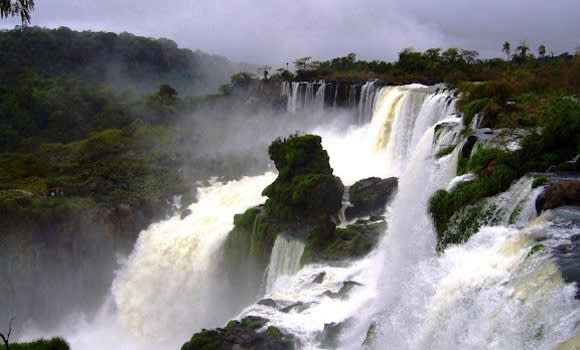
At an 80 meter canyon in the fierce foaming cauldron of the Devil’s Throat, the water produces a thundering sound. Here, several falls join together hurtling down a sheer drop, then draining into the Paraná river.
Make a trip to Argentina during the spring and fall for the best views of the falls.
So which is the better side to view the Iguazu ? – The Argentine or Brazilian side?
Both sides are simply wonderful, and it’s definitely worth seeing from both places. It all depends on what you want to see and how you want to do so – on ground or aerial.
Iguazu: Birds’ eye view
Two thirds of the falls are within the Argentine territory. If you wish to see and ‘feel’ the falls from a height, then that’s best done from the Argentine side.
The Argentine side has two basic viewing circuits – an upper path and a lower path. The upper path offers exhilarating panoramic vistas and dizzying views from a footbridge/catwalk vantage point – truly an unforgettable experience! There may be some occasional mist.
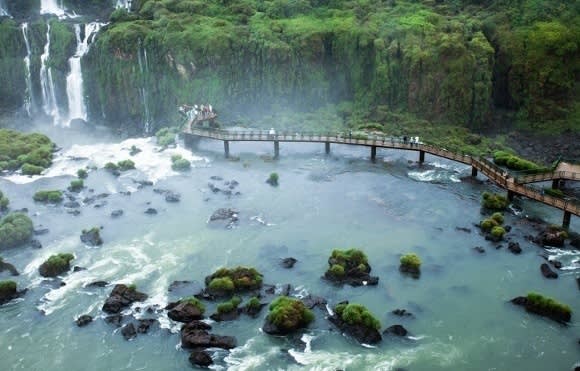
An aerial view lets you experience the sheer power and enormity of the falls. On the lower path leading to the base of the falls, the spray happily moistens you. This circuit also offers a boat trip to Isla San Martín. The Argentine side is ideal for seeing radiant poly-chromatic single or double rainbows.
Brazil offers an astounding multi-dimensional panorama! If its picture-perfect views and flawless shutter exposures you want, then head on over to experience the falls from the Brazilian side.
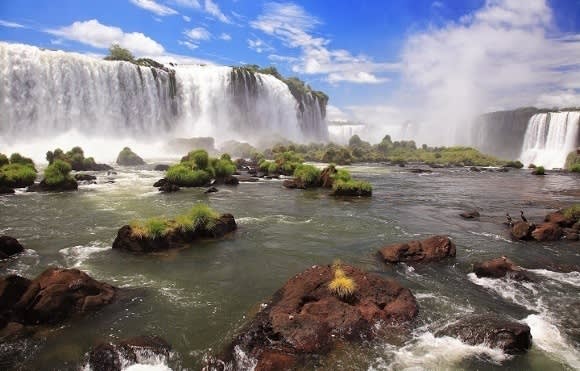
Consisting of a network of 275 waterfalls spanning an area of nearly 3 km wide, incredible vistas of the falls from virtually every angle in a 360° view takes your breath away! If you wish to enjoy a helicopter ride, then the Brazilian side is the place to do it.
“One’s destination is never a place but a new way of seeing things” ~ Henry Miller
Bo Crew, Travel Consultant , Speak to an expert
The verdict?
Although the Brazilian side may have fantastic views and give ideal photographic opportunities, the Argentine side trumps with just that wee bit more to offer – variety of vantage viewing points, easy travel trails and a choice of activities.
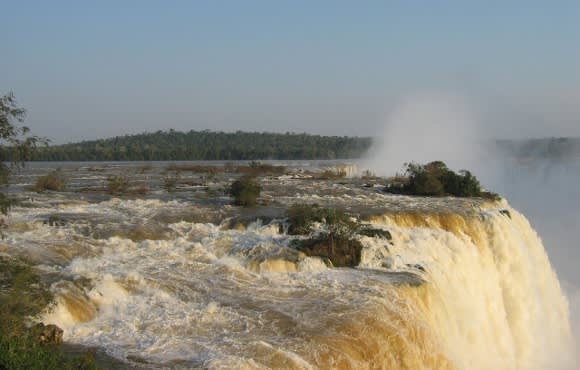
The Iguazú Falls has earned such a reputation, that they have been featured in movies like – Mr. Magoo and Indiana Jones and The Kingdom of the Crystal Skull.
At Enchanting Travels, we help you spark an adventure and make memories all over the world
Iguazú Falls is just one such! Don’t just be a tourist, be a traveler!
Recommended Tours

Argentinian Tango and Folklore
Embrace the colorful culture and warm hospitality on your tour of Argentina. Your journey will take you past scenic landscapes and mythical valleys to a land steeped in ancient history. Soak in the famous Argentinian joie de vivre and shake a leg to the pulsating sounds of tango as you sip on Argentina’s finest wines.

Simply Brazil: Highlights & Beach
Discover the highlights, diversity and natural beauty of Brazil on this private tour. Beginning Sao Paolo – the largest city of Brazil, travel to magnificent Iguazu Falls set on the border with Argentina. In Rio, discover the vibrant heart and best-known sights of Brazil, and unwind by the beach in pristine Buzios.

Argentina and Brazil: Classic Cities and Falls
Explore the captivating metropolises of Buenos Aires and Rio de Janeiro during your tour to Brazil and Argentina. Discover the natural wonder of the world that unites these two countries – the magnificent Iguazú Falls.
Related Posts
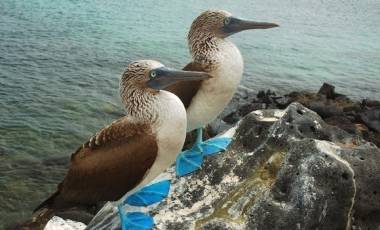
Swoop into Avian Paradise: Top Bird Watching Destinations in Latin America
Bird(er)s of a feather, unite!
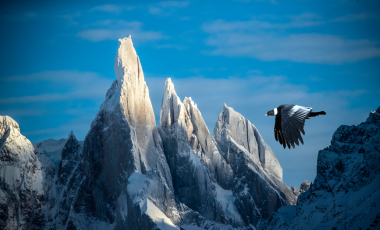
The Wild Poetry Of Patagonia
Across the vast expanse of wilderness in Argentinian and Chilean Patagonia, visit the compelling medley of animals and birds that thrive in this unspoiled Eden

Peruvian Cuisine: The Next Big Thing In Food And Drink
Explore the delights of Peruvian cuisine on your customized South America tours. With 7000 years of history and several influences, Peruvian cuisine, the pride and joy of South America, has the largest number of dishes in the world.

17 Top-Rated Tourist Attractions in Argentina
Written by Bryan Dearsley Updated Jul 26, 2022
Argentina's diverse geography is one of the country's main attractions. It encompasses everything from harsh deserts to humid jungles, and long ocean beaches to the soaring Andes. Stretching from the subtropical north to the subantarctic regions of beautiful Patagonia in the south, Argentina's cultural, artistic, and architectural heritage is just as diverse, drawing upon influences from around the world.
With its wonderful barrios , including colorful arts neighborhoods such as La Boca, old-world Recoleta, and trendy districts like Palermo, Buenos Aires sometimes feels more like Europe than Latin America. This lively capital city is the best place to begin sightseeing (it's also the best place to learn to tango, the most iconic of Argentinian dances).
In addition to its many cultural attractions, the other big draws – and for some tourists, its greatest appeal – are the country's natural wonders, including the breathtaking Iguazú Falls, the world's largest group of waterfalls.
To make sure you find all the best places to visit and things to do, use this handy list of the top tourist attractions in Argentina.
1. Iguazú Falls
2. perito moreno glacier, 3. recoleta, la boca, and tango in buenos aires, 4. tierra del fuego national park, 5. puerto madryn and the valdés peninsula, 6. ushuaia: the end of the world, 7. bariloche and the route of the seven lakes, 9. historic córdoba cathedral, 10. beaches of mar del plata, 11. cafayate, 12. southern fuegian railway, 13. san ignacio mini ruins, 14. quebrada de humahuaca, 15. teatro colón, 16. aconcagua mountain, 17. salinas grandes.
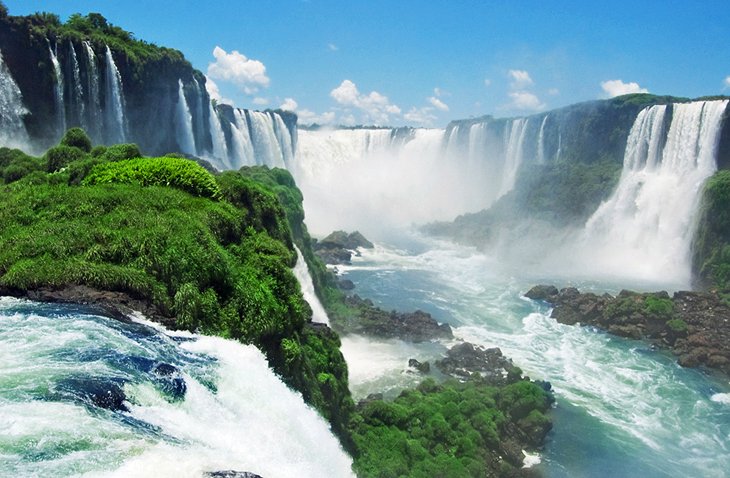
The stunning Iguazú Falls lie along Argentina's border with Brazil, with Iguazu National Park on the Argentinian side and Iguaçu National Park on the Brazilian side. Protected as a UNESCO World Heritage Site , these huge waterfalls are undoubtedly one of the most spectacular sights in South America.
Visitors can get quite close to these thundering falls thanks to a network of easily accessible walkways and viewing platforms designed to provide the best possible views, including some at the bottom of the falls, an area known as the Devil's Throat.
Iguazu is, in fact, made up of between 150 to 300 individual falls along its nearly three-kilometer edge, a number that changes depending on the season, varying in height between 60 to 82 meters and each as spectacular as the next. Served by an international airport in Argentina (and one in neighboring Brazil), it's relatively easy to visit, particularly if flying from Buenos Aires.
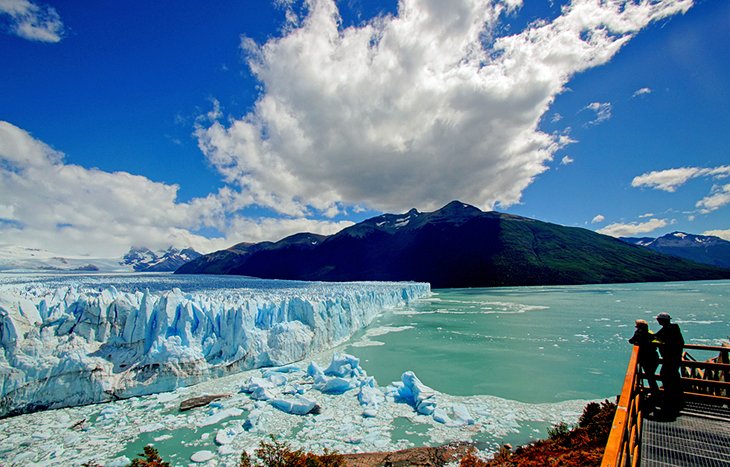
The main hub for tourists visiting the UNESCO World Heritage Site of Patagonia's Los Glaciares National Park , the small town of El Calafate offers plenty of accommodation options and other amenities for visitors.
It's here that most visitors join excursions to see the park's popular glaciers, most notably the stunning Perito Moreno Glacier, a massive 30-kilometer-long ice formation (and the world's third-largest freshwater reserve) just 78 kilometers from the town center.
Named after a 19th-century explorer, it's just a two-hour trip from El Calafate to the glacier's large visitor center, and from here just a short walk to the glacier. For those wanting to climb the glacier, ice trekking tours are available that range from an hour's walk over the ice formation to longer five-hour excursions.
Another important feature of Los Glaciares National Park is the 3,359-meter-tall Monte Fitz Roy , a stunningly beautiful mountain straddling the border with Chile that is reputably harder to climb than Everest.
Official site: www.losglaciares.com/en/index.html
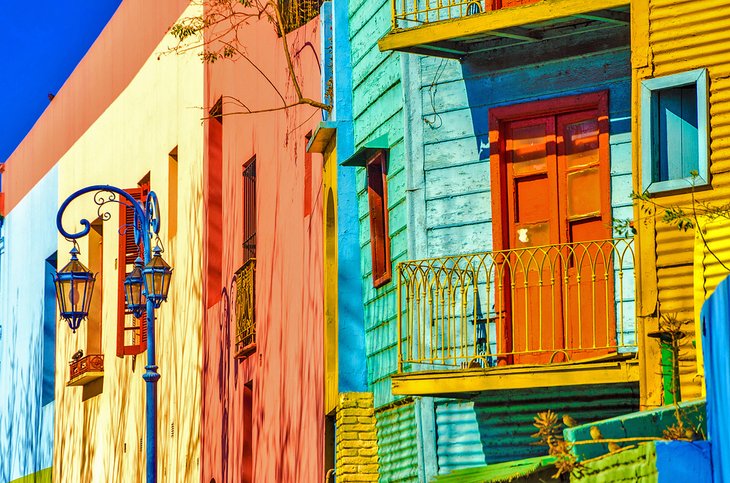
One of South America's most attractive cities (also one of the largest), Buenos Aires is often the first glimpse of Argentina most visitors will have before heading off to popular tourist destinations such as Patagonia.
But the smart ones will linger here and take in the many delightful museums and art galleries housed in the splendid old colonial buildings spread across the city's districts or barrios .
Be sure to visit La Boca , Buenos Aires' most colorful neighborhood and home to the quirky Caminito Street Museum , a splendid pedestrian zone and open-air museum popular for its brightly painted houses, amusing sculptures, cafés, music, and tango dancers in the streets.
Fashionable Recoleta is another must and is where you'll find the Recoleta Cemetery , with its elaborate mausoleums containing the remains of such famous Argentinians as Eva (Evita) Perón, along with numerous public gardens, museums, art galleries, cafés, and boutique shops.
Other districts to explore if time permits are Palermo and Belgrano with their wide boulevards and palatial mansions, and, in the downtown core, the delightful Plaza de Mayo .
- Read More: Top-Rated Tourist Attractions in Buenos Aires
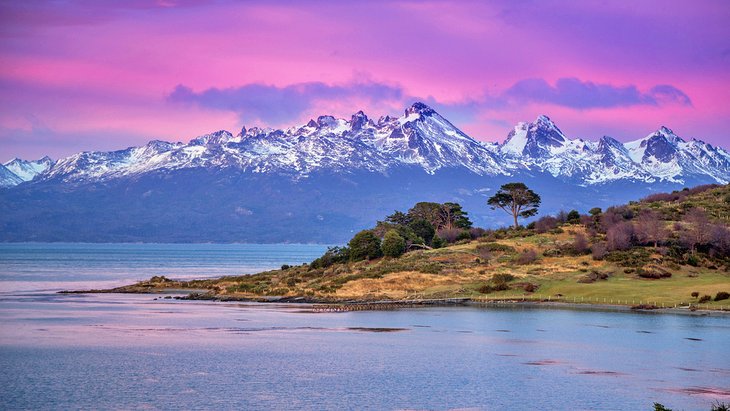
The 156,000-acre Tierra del Fuego National Park extends all the way from Beagle Channel to the Chilean Border and northwards to Lago Kami. It's a paradise for hikers, with trails for all experience levels.
Using the town of Ushuaia as a base, adventurers head out onto the park's hiking trails or along the coastline to explore its dramatic scenery, which includes everything from tall waterfalls, dense forests, and mountains, to beautiful glacier-fed lakes such as Roca and Fagnano.
One of the most popular routes is Senda Costera , a coastal path to Lake Roca from Ensenada Bay that offers a chance to see a rich diversity of wildlife including Andean condors.
Those who prefer to see the sights in comfort can take a ride on the superb Southern Fuegian Railway , an elegant antique steam train through the park to Cañadon de Toro.
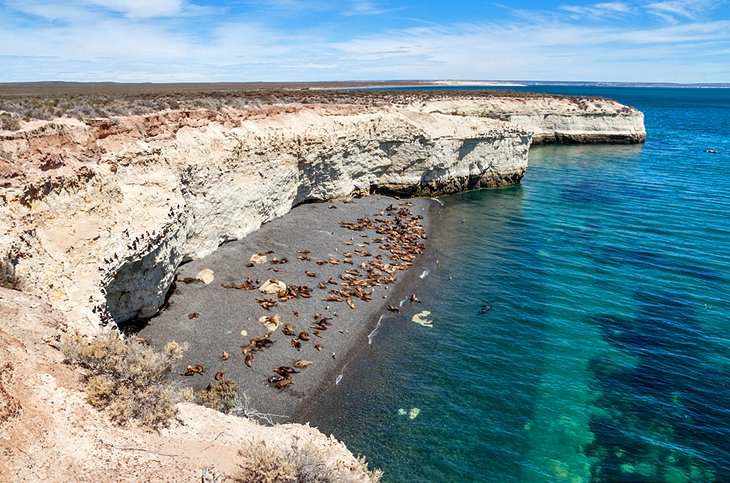
The city of Puerto Madryn lies on the shores of Golfo Nuevo in one of the most sheltered places on the Patagonian coast. Founded by Welsh settlers in 1886, the city's deep-water port and abundant nature reserves make it one of the most popular cruise destinations in Argentina.
Its rugged coastline attracts water sports enthusiasts, particularly windsurfers who enjoy defying the strong Patagonian winds. Nature lovers find plenty of things to do on the Valdez Peninsula, an important nature reserve listed as a UNESCO World Heritage Site for its diverse wildlife.
Guided tours of the reserve are a must, and visitors normally leave having seen everything from right whales (here to mate and calve), along with elephant seals, sea lions, and orcas. It's also an important breeding ground for migratory shorebirds, in particular Magellanic penguins.
Learn more about the environment of this beautiful coast at the Natural Science and Oceanographic Museum , set in a beautiful heritage building overlooking the harbor. The museum features displays of Patagonian flora and fauna, including a whale skeleton and a fascinating exhibit about giant squids.
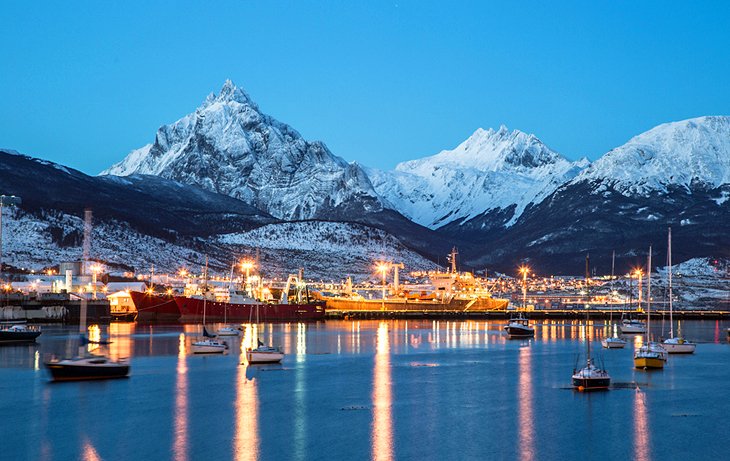
At the southern end of Argentina, Patagonia is famous for its spectacular landscapes: a dramatic mix of the Andes and long stretches of plains and plateaus. Most adventures here start in Ushuaia , the world's southernmost city.
Established as a penal colony in the early 20th century and now a popular jumping-off point for trips to Antarctica or around Cape Horn, this town on Beagle Channel is surrounded by a unique landscape of mountains, sea, glaciers, and woods on the edge of the Tierra del Fuego National Park, with its spectacular scenery and diverse flora and fauna.
Popular places to visit include the San Juan de Salvamento Lighthouse - also known as the End of the World Lighthouse - built in 1884 on the Isla de los Estados, and the End of the World Museum . Here, you'll find exhibits relating to the region's natural history, aboriginal life, and early penal colonies.
The Maritime Museum of Ushuaia is housed in the town's notorious former military prison, is worth visiting for its many maritime artifacts and scale models of famous ships such as Darwin's Beagle .
Named for Darwin's ship, the Beagle Channel cuts through the heart of the national park, and you can board a boat in Ushuaia to cruise through this historic waterway.
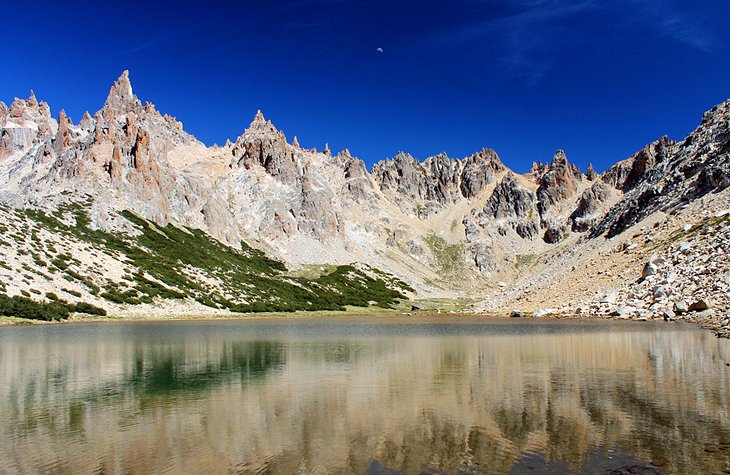
Usually simply referred to as Bariloche, San Carlos de Bariloche is a lively city set in the midst of Nahuel Huapi National Park , and Patagonia's northern Lake District.
Skiers, especially those from the Northern Hemisphere seeking snow in the height of the northern summer, flock to Bariloche for nearby Cerro Catedral , the tallest of its peaks and a popular ski resort.
One of the largest ski resorts in South America, Cerro Catedral includes more than 100 kilometers of ski terrain and is particularly popular for its stunning views over Nahuel Huapi Lake, in the middle of the national park.
Bariloche is a center for active adventure and for exploring the park's mountains, lakes, waterfalls, forests, glaciers, and extinct volcanos. Although the region is rich in opportunities for hiking, rafting, cycling, and climbing, a driving circuit known as the Route of the Seven Lakes takes tourists to the alpine lakes of Nahuel Huapi, Espejo, Escondido, Falkner, Villarino, Correntoso, and Machónico .
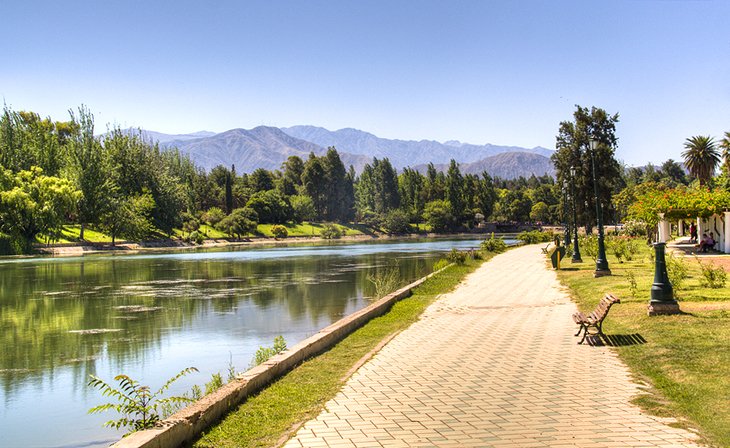
Undoubtedly one of Argentina's most beautiful cities, filled with Art Deco architecture, Mendoza is as popular with outdoor enthusiasts in winter as it is in summer. When the snow flies, skiers from across South America experience some of the Andes' best ski slopes at the popular resorts of Las Leñas, renowned for its steep terrain, and Los Penitentes , just 25 kilometers from the border with Chile.
In the summer, these same areas are popular among hikers and climbers, many aiming for the top of the 6,960-meter-tall Aconcagua mountain. Other outdoor activities include whitewater rafting and trail riding, with some riding stables offering overnight adventures with camping under the stars.
Also famous for its olive oil production, Mendoza has many other attractions, including a number of museums and annual festivals, as well as a bustling Central Market (Mercado Central) where locals buy produce, meat, and fish, and where visitors can find food stalls and restaurants.
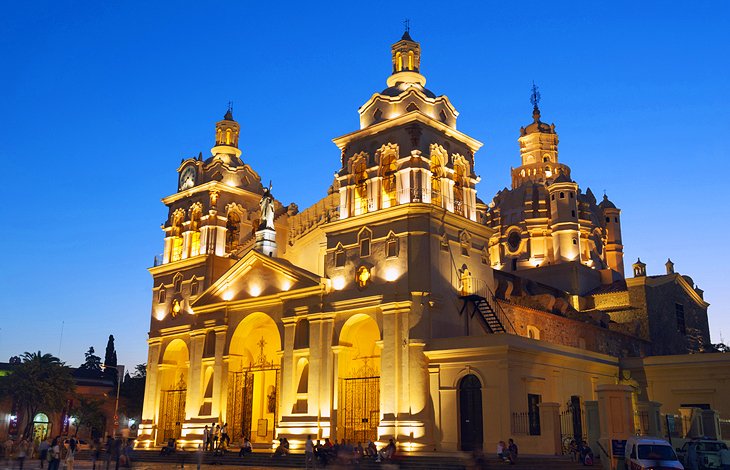
In central Argentina, a five-hour drive from Buenos Aires, Córdoba is the country's second-largest city and is often used as a stopover on trips into the Andes. Most of the city's finest old buildings date back to the early colonial period of the 16th century.
Explore the historical center of the city around Plaza San Martin , now a UNESCO World Heritage Site . Here, you'll find the beautiful Cathedral of Córdoba , a splendid mix of Baroque and Neoclassical styles that can trace its roots back to the original Roman Catholic church built here in 1580.
Highlights of the structure, much of which dates from the 18th century, include an ornate interior with exquisite 20th-century frescoes and murals painted by leading Argentinian artist Emilio Caraffa, a native of Córdoba.
Note also the unique silver altar and an important collection of gold votive offerings. Below, the crypts are the final resting place of a number of important Argentinians.
One of the favorite things to do in Argentina is learn to tango , and you can take classes at the Cabildo, a cultural center, and mix with locals who go there to dance.
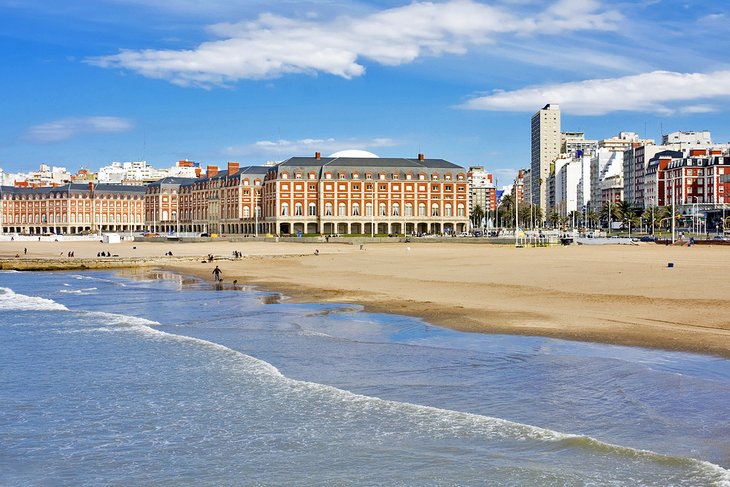
Some of the best beaches in South America are in the relatively modern city of Mar del Plata, on the Atlantic coast 400 kilometers from Buenos Aires. Here, the beautiful beaches sprawl for more than eight kilometers of coast that's also marked by windswept dunes and dramatic cliffs.
Nearest Mar del Plata's modern cruise ship ports are the Chica and Grande beaches (they're also popular among sea lions, many of which hang out in the waters around the city's fishing wharves).
Once a playground for the rich, the city is a mix of fine old mansions, which mingle with newer resorts along the city's splendid waterfront with its numerous parks, squares, and gardens.
Mar del Plata is home to the excellent Juan Manuel Fangio Museum , dedicated to one of the world's greatest Formula One drivers and containing more than 100 cars and 500 trophies. A highlight is an exhibit dedicated to the first automobile, an 1886 Daimler.
One of the most popular things to do for families is a visit to the Mar del Plata Aquarium with its many marine attractions, including dolphin and seal shows, penguins, tortoises, and flamingos.
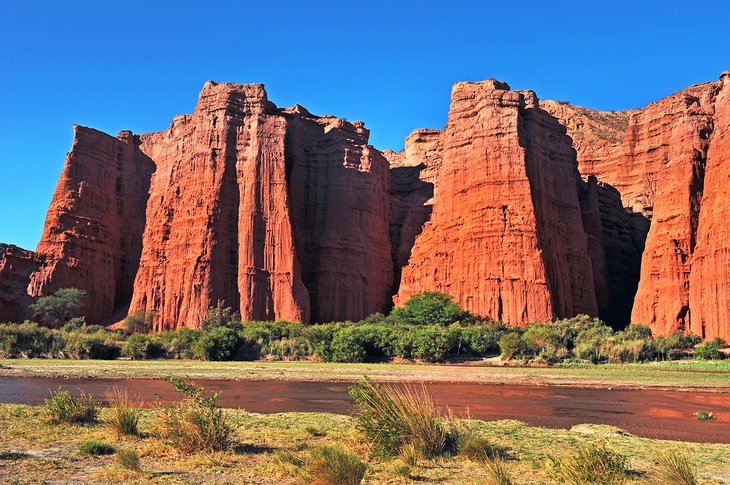
Located in the northwest of the country in the province of Salta, Cafayate is a small town of just over 12,000 residents. Although charming and with a few attractions worth visiting – including an archeological museum featuring objects from the local Indigenous people – most people arriving here are on their way to the Quebrada de Cafayate (or Quebrada de las Conchas).
An area known for its towering reddish rock formations, the quebrada offers one of the most stunning drives in South America on Route 68. More than 60 kilometers of paved roads cut through colorful sandstone, offering plenty of stops to discover narrow canyons, natural amphitheaters, towers of sandstone and clay, and the shores of the Rio de las Conchas.
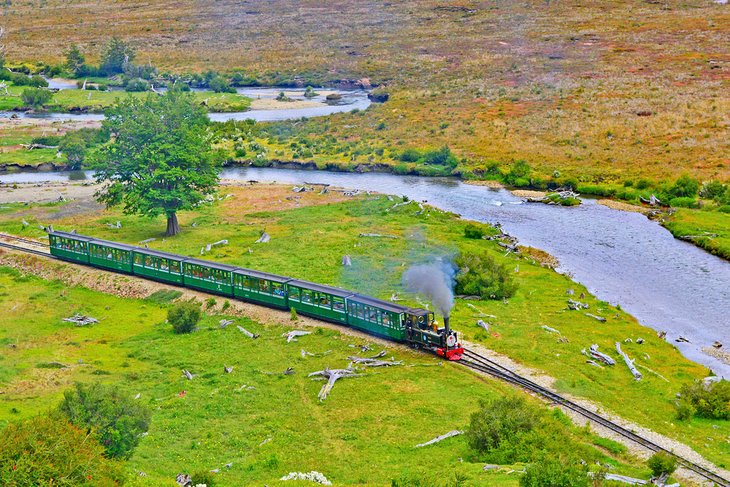
Better known as the " Train of the End of the World ," this gauge steam railway is considered the southernmost railway in the world. Although it once provided a less happy service of connecting Ushuaia's penal colony with nearby cities, today it offers a beautiful tourist ride into the Tierra del Fuego National Park.
The train departs on new tracks (the original ones can still be seen nearby) from the End of the World station, riding alongside a thickly forested gorge and beautiful peaks all around. In winter, everything is covered in snow here; in other seasons, you'll appreciate the greens and reds that take over the valley throughout the season. The train makes one stop, so travelers can snap some photos at a local waterfall before continuing on into the national park.
First-class passengers will get a chance to taste some local specialties while onboard, including alfajores , biscuits filled with thick caramel, and empanadas , a fried or baked pastry filled with cheese or meat.
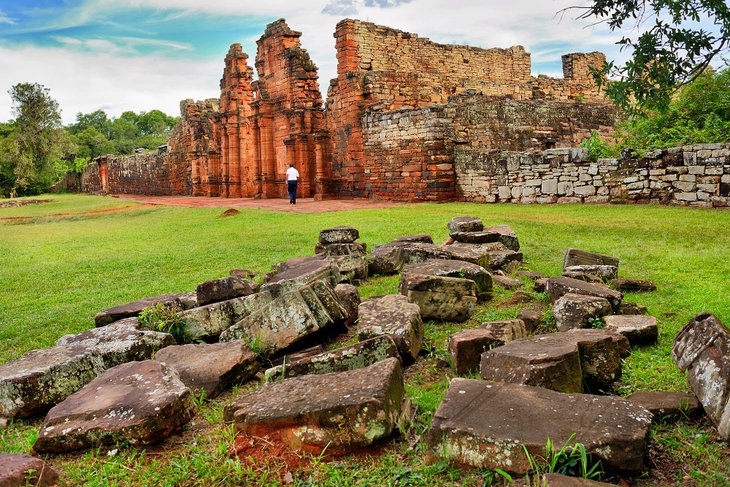
Back in the 1600s, during the Spanish colonial period, a number of Jesuit missions were founded in the northern province of Misiones, near the border with Brazil. At one point, over 3,000 Indigenous people lived in the mission, but as the Jesuits left the country, the buildings fell into ruins. Now a UNESCO World Heritage Site , the San Ignacio Mini are the largest and still best-preserved mission ruins in the country.
The original mission – built in red-brown stone in a style known as Guaraní Baroque -– was massive and included a monastery, a cabildo (administrative office), a cemetery, and a number of living spaces. The mission's church, which measured 74 meters long by 24 meters wide, is the best-preserved part of the ruins.
A small on-site museum tells the story of the mission, and there's a scale model of the original San Ignacio Mini.
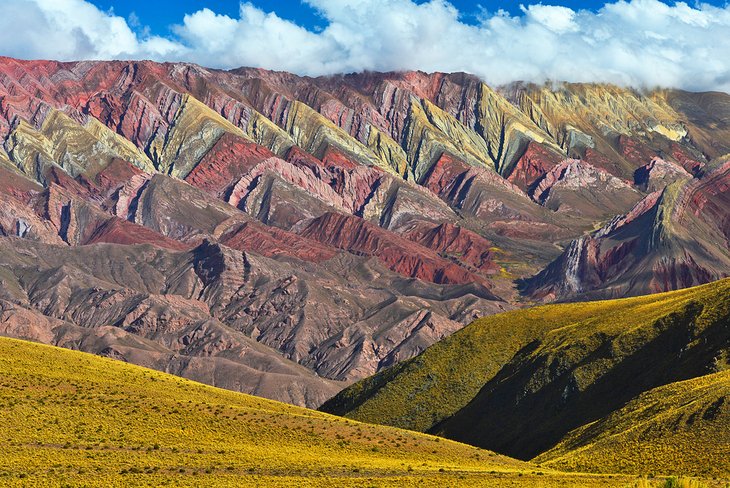
Quebrada (which literally translates to "broken") is a name used in Argentina to refer to deep ravines. And the 155-kilometer-long Quebrada de Humahuaca in the northwest of the country is a perfect example of a beautiful ravine with a wild river running through it in summer (the river dries up in winter).
A UNESCO World Heritage Site , this arid valley was once part of the Inca Empire and an important trade route. Today, most people arriving here come for its beauty – a mix of reds, pinks, and oranges that look almost painted on the hills around.
The tiny town of Iruya (only 1,000 people live here), not far from the quebrada, is a must-see as well. Built directly into the mountainside at an elevation of over 2,700 meters, it offers stunning views over the mountains and fertile valleys all around it. In town, the dirt streets, old houses, and colorful celebrations that incorporate Indigenous details offer great photo opportunities.
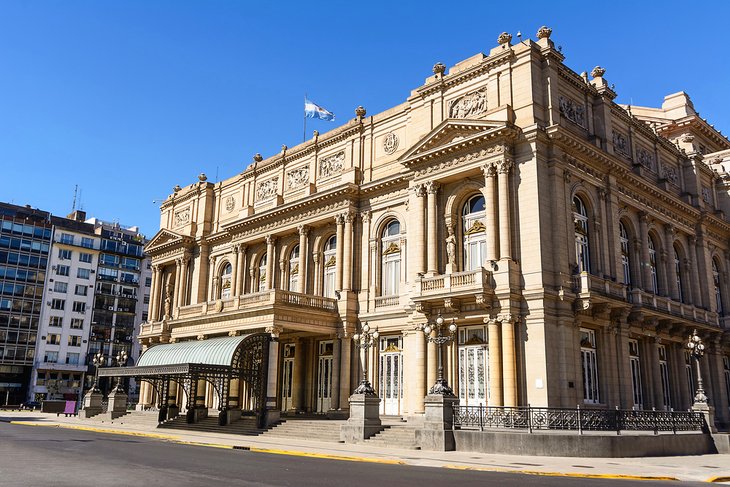
Buenos Aires' main opera house is considered one of the best opera theaters in the world because of its amazing acoustics. Built in 1908 to replace an earlier theater located in the same place, Teatro Colón was once a very popular destination for some of the biggest international opera companies and a favorite of Luciano Pavarotti. Rudolf Nureyev, Maria Callas, Plácido Domingo, and Julio Bocca have all performed here.
As beautiful as the building itself is on the outside, the inside of the theater is even more stunning. It offers just under 2,500 seats and it's completely decorated in reds and golds, with touches of both Italian and French architecture. Artist and production designer Raúl Soldi painted the theater's stunning cupola.
The theater is also famous for its outstanding costume and scenic departments.
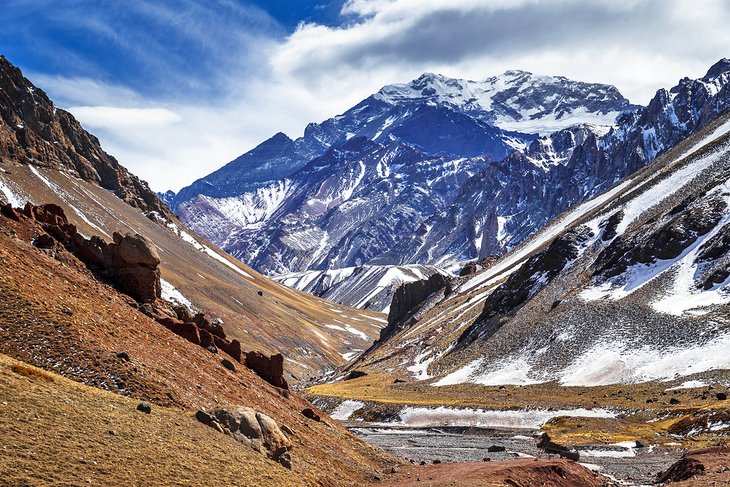
As the highest mountain in the Southern Hemisphere , Aconcagua is certainly impressive. The peak has a summit elevation of 6,961 meters and is part of the Andes, close to the border with Chile. For climbers, Aconcagua has special meaning, as it's one of the Seven Summits , the ultimate climbing list that includes the highest mountains in each continent.
The mountain falls within the limits of the Aconcagua Provincial Park, a protected area that offers a number of activities for outdoor lovers, including hiking and skiing. For those who are up for something a bit more challenging, the Horcones-Confluencia trail takes hikers up to the basecamp on the route up to the summit. It's a 14-kilometer-long trail with an elevation of 538 meters.
Laguna Horcones, a stunning blue lake fed by glaciers, is another popular attraction within the park.
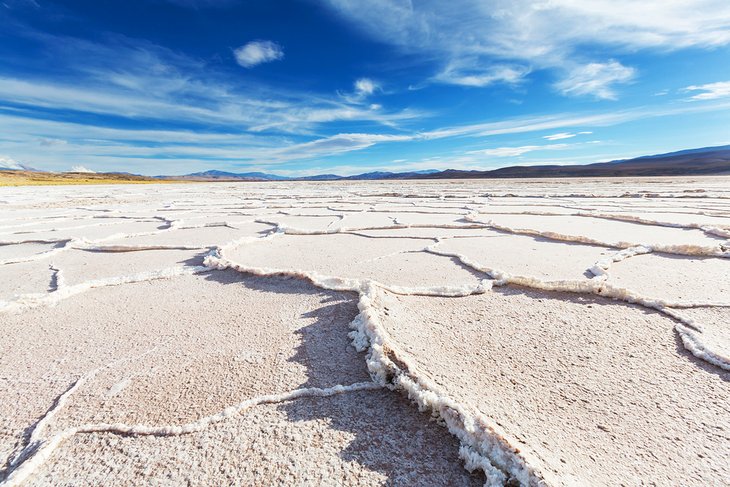
Sitting 180 meters above sea level, these stunning salt flats (the third largest in the world) cover an area of over 4,700 square kilometers, stretching over two provinces. This is a solitary and desolated, but stunningly beautiful area, past deserted routes, walnut tree plantations, lagoons, red sandstone mountains, and the odd herd of adorable vicuñas.
As this is an active salt flats, you'll likely find workers if you arrive during the daytime. If you can manage some Spanish, they'll happily show you around and explain how the salt is washed and scrapped. Otherwise, you can simply walk around to admire their beauty, which extends as far as the eye can see.
Most visitors start their trip at the nearby town of Purmamarca, where just over 2,000 residents make their living either working in the salt flats or selling handicrafts to tourists in the town market. Tours to the salt flats also leave from here, including trips to the nearby Cerro de los Siete Colores (The Hill of Seven Colors).

More on Argentina
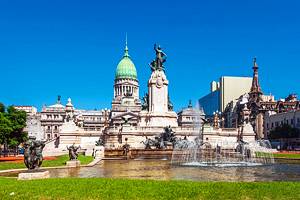

Passing Thru Travel
The World’s 15 Most Beautiful Waterfalls 2024 – A Guide to Breathtaking Natural Wonders
Posted: February 21, 2024 | Last updated: February 21, 2024
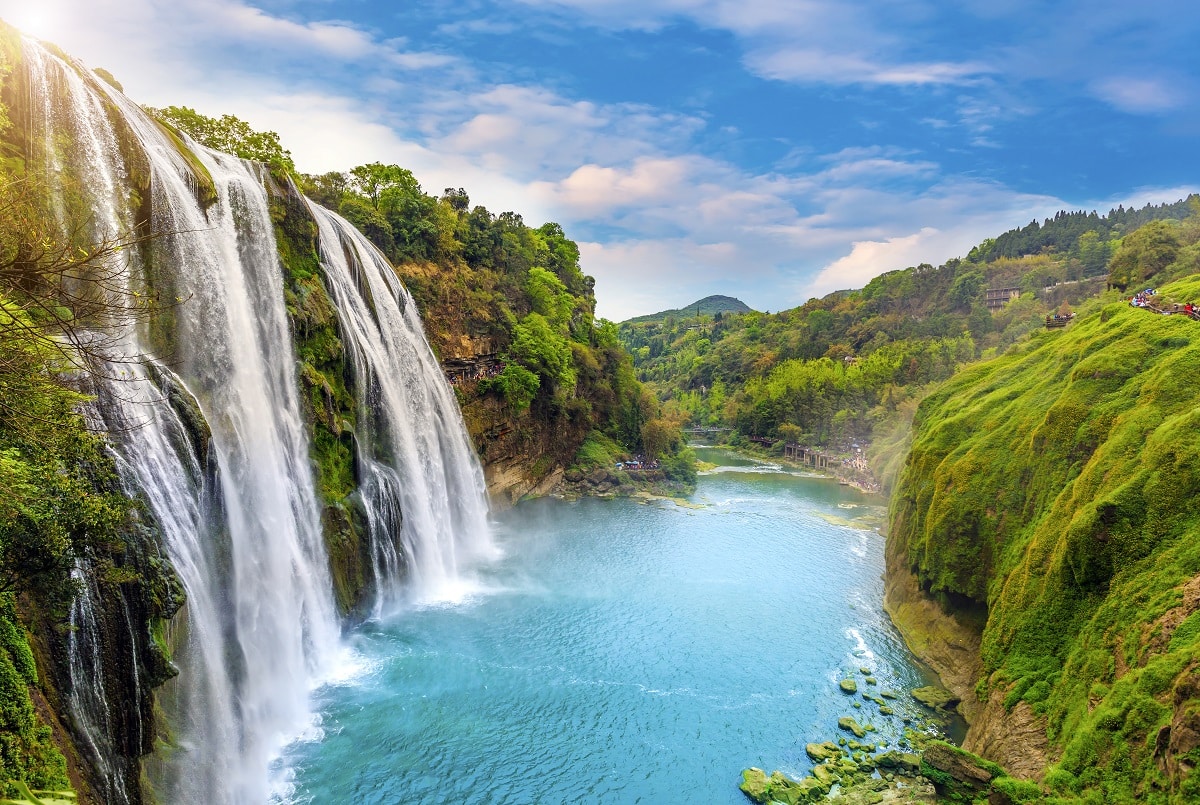
With their raw power and serene beauty, waterfalls are among the most awe-inspiring natural wonders on Earth. From thundering cascades to gentle flows, each waterfall offers a unique experience. This guide takes you around the globe to explore 15 of the world’s most stunning waterfalls, each promising an unforgettable journey.
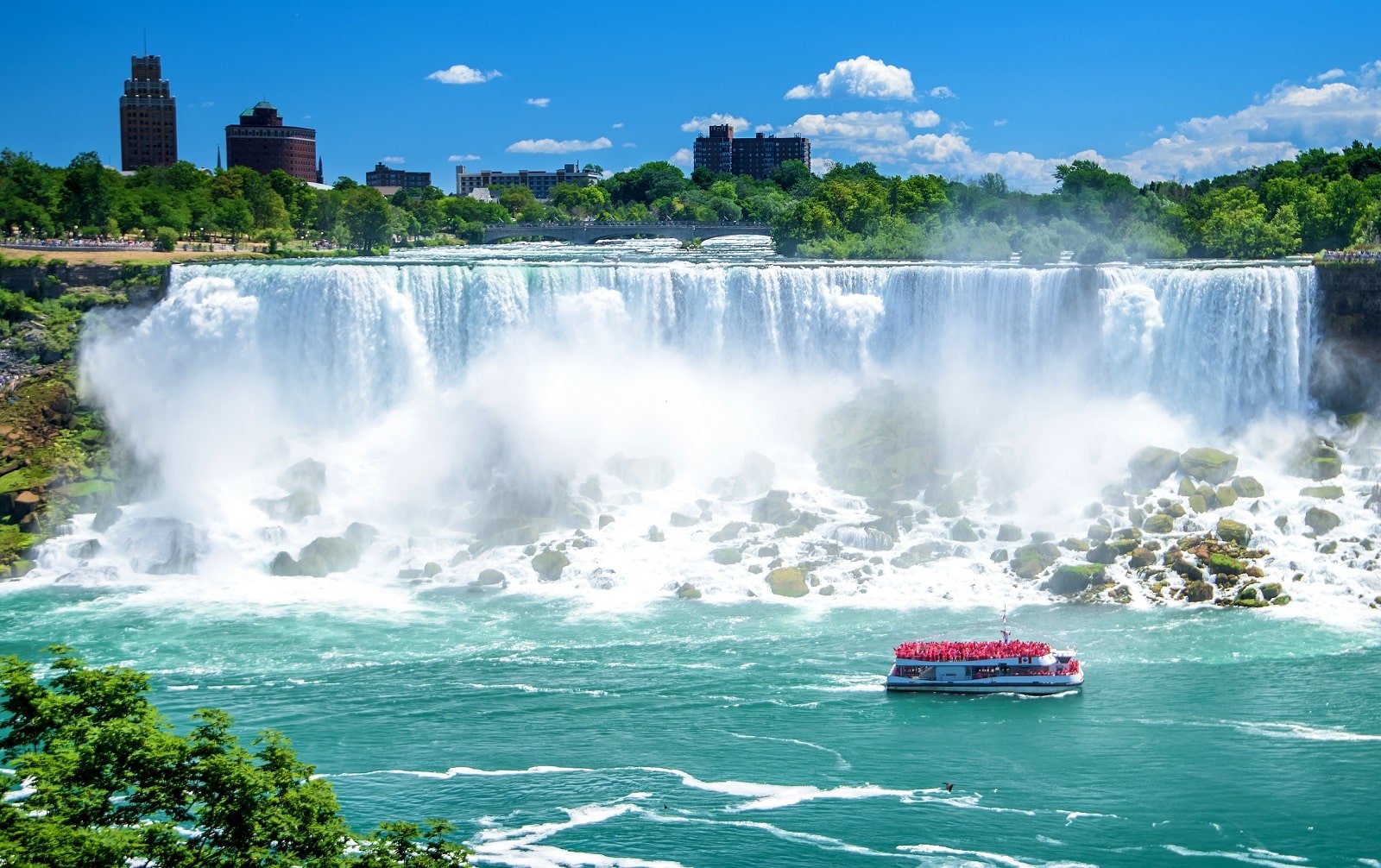
1. Niagara Falls, USA/Canada
Embark on a journey to Niagara Falls, where the sheer power of nature is on full display. These massive waterfalls, consisting of the American Falls, Bridal Veil Falls, and the Canadian Horseshoe Falls, offer a variety of experiences. The Maid of the Mist boat tour provides an up-close encounter where the roar and mist of the falls are overwhelming. Visit the observation decks or the Journey Behind the Falls for a different perspective. In the evening, the falls are lit up in a spectrum of colors, creating a breathtaking sight. The surrounding area also offers parks, gardens, and numerous vantage points to appreciate the falls’ majesty.
Insider’s Tip: Visit during the off-season to avoid crowds.
When To Travel: Late spring or early fall for pleasant weather.
How To Get There: Easily accessible from Buffalo, New York, or Toronto, Canada.
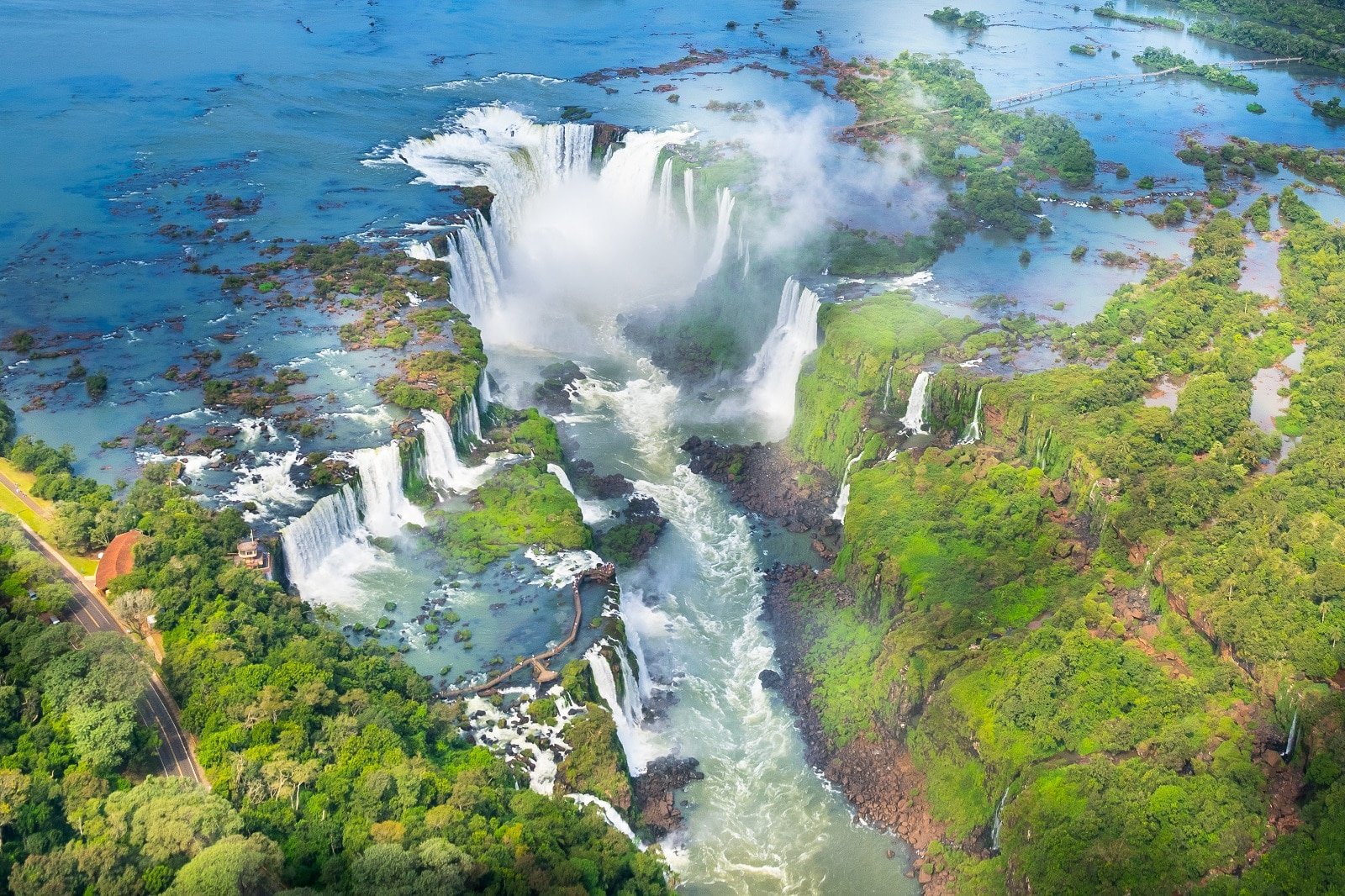
2. Iguazu Falls, Argentina/Brazil
Explore the grandeur of Iguazu Falls, which stretches across the border of Argentina and Brazil. This magnificent series of 275 waterfalls spans almost 3 kilometers, making it one of the most expansive waterfall systems in the world. On the Argentine side, you can walk right up to the Devil’s Throat, feeling the spray and thundering sound of the largest fall. The Brazilian side offers panoramic views of all the falls, encapsulating their vastness and beauty. The surrounding rainforest adds to the fall’s allure, hosting diverse wildlife and several hiking trails.
Insider’s Tip: Don’t miss the Devil’s Throat, the most spectacular section of the falls.
When To Travel: March to September for less humidity and clearer skies.
How To Get There: Fly to Puerto Iguazu Airport (Argentina) or Foz do Iguaçu Airport (Brazil).
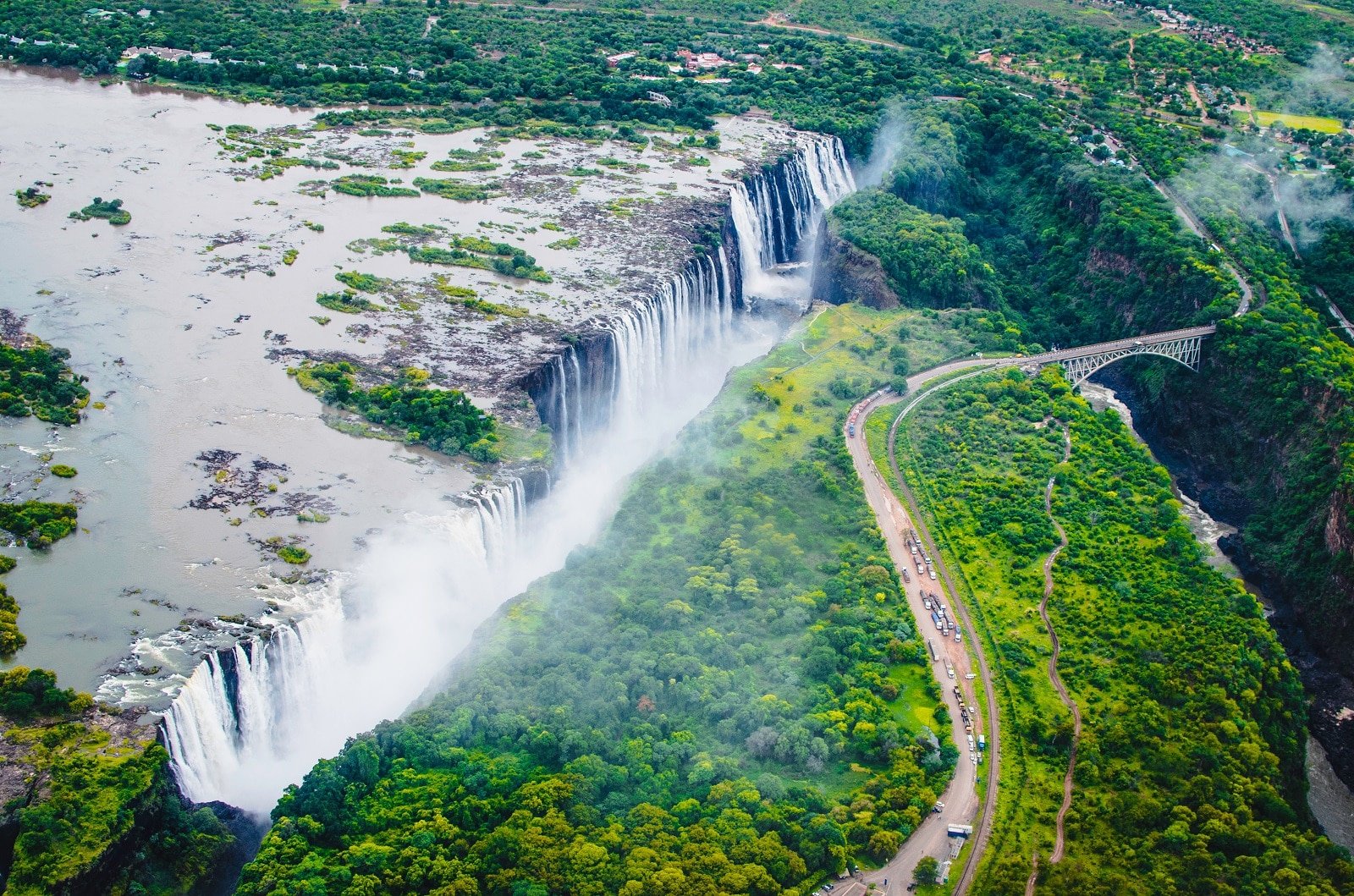
3. Victoria Falls, Zambia/Zimbabwe
Venture to Victoria Falls, a UNESCO World Heritage site straddling Zambia and Zimbabwe. Known locally as “The Smoke That Thunders,” this enormous waterfall is one of the largest and most famous in the world. The best views are from the Zimbabwean side, where you can see the full width and height of the falls. Consider bungee jumping or white-water rafting on the Zambezi River for an adrenaline rush. The lunar rainbow, visible during full moon nights, adds a mystical element to the falls.
Insider’s Tip: Take a helicopter ride for a stunning aerial view.
When To Travel: March to May for the fullest flow.
How To Get There: Fly to Livingstone Airport (Zambia) or Victoria Falls Airport (Zimbabwe).
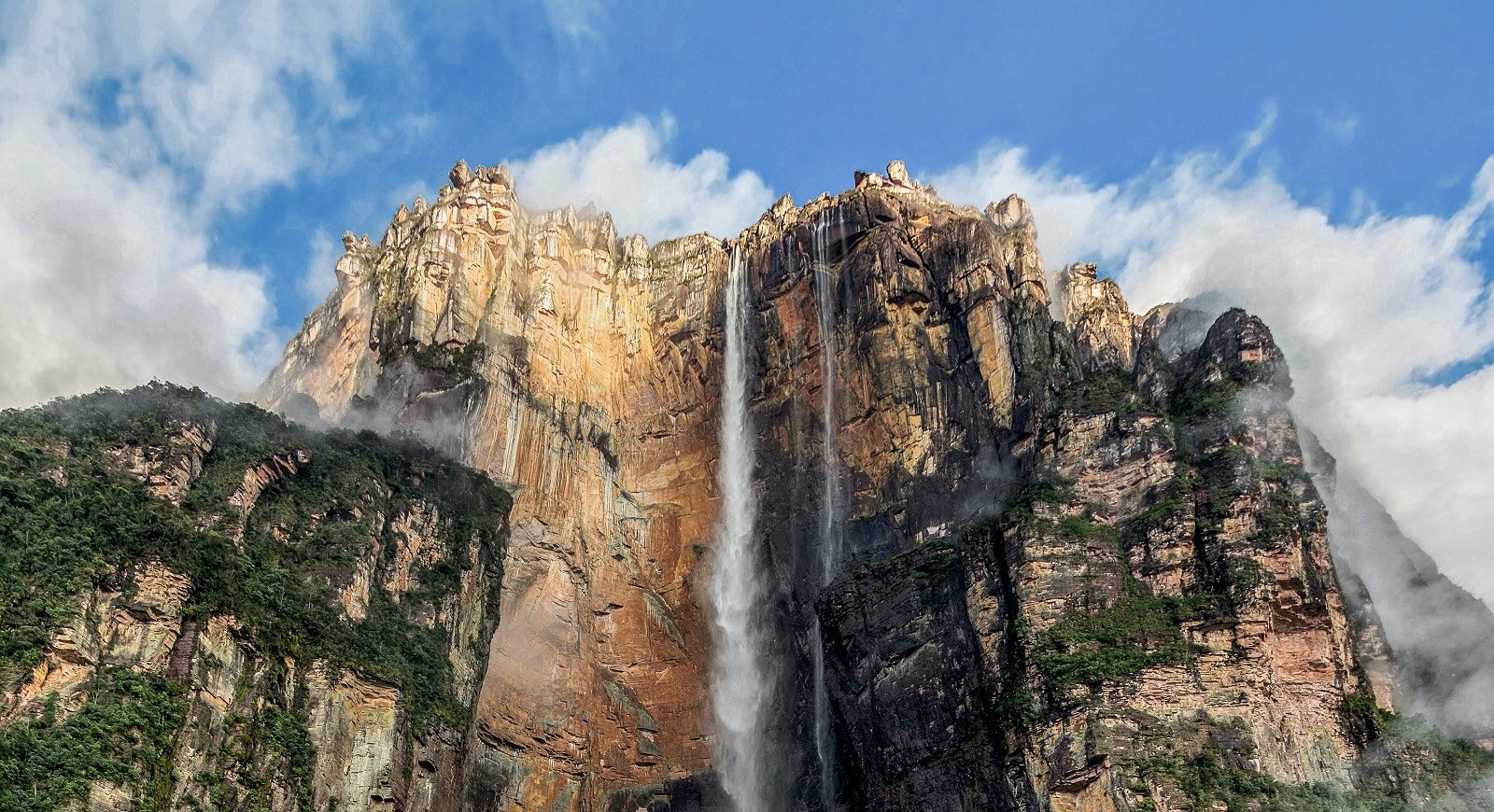
4. Angel Falls, Venezuela
Journey to the remote and breathtaking Angel Falls in Venezuela’s Canaima National Park, the world’s highest uninterrupted waterfall. The falls drop from a height of 979 meters, creating a spectacular sight as water cascades down from the Auyán-tepui mountain. The trek to Angel Falls is an adventure in itself, often involving a flight to Canaima Camp followed by a boat trip along the river. The falls’ isolated location means fewer tourists, offering a serene and intimate experience with one of nature’s wonders.
Insider’s Tip: The falls are best viewed by air, as the canopy can obscure ground views.
When To Travel: June to December for the best flow and accessibility.
How To Get There: Access is typically via a flight to Canaima Camp, followed by a river trip.
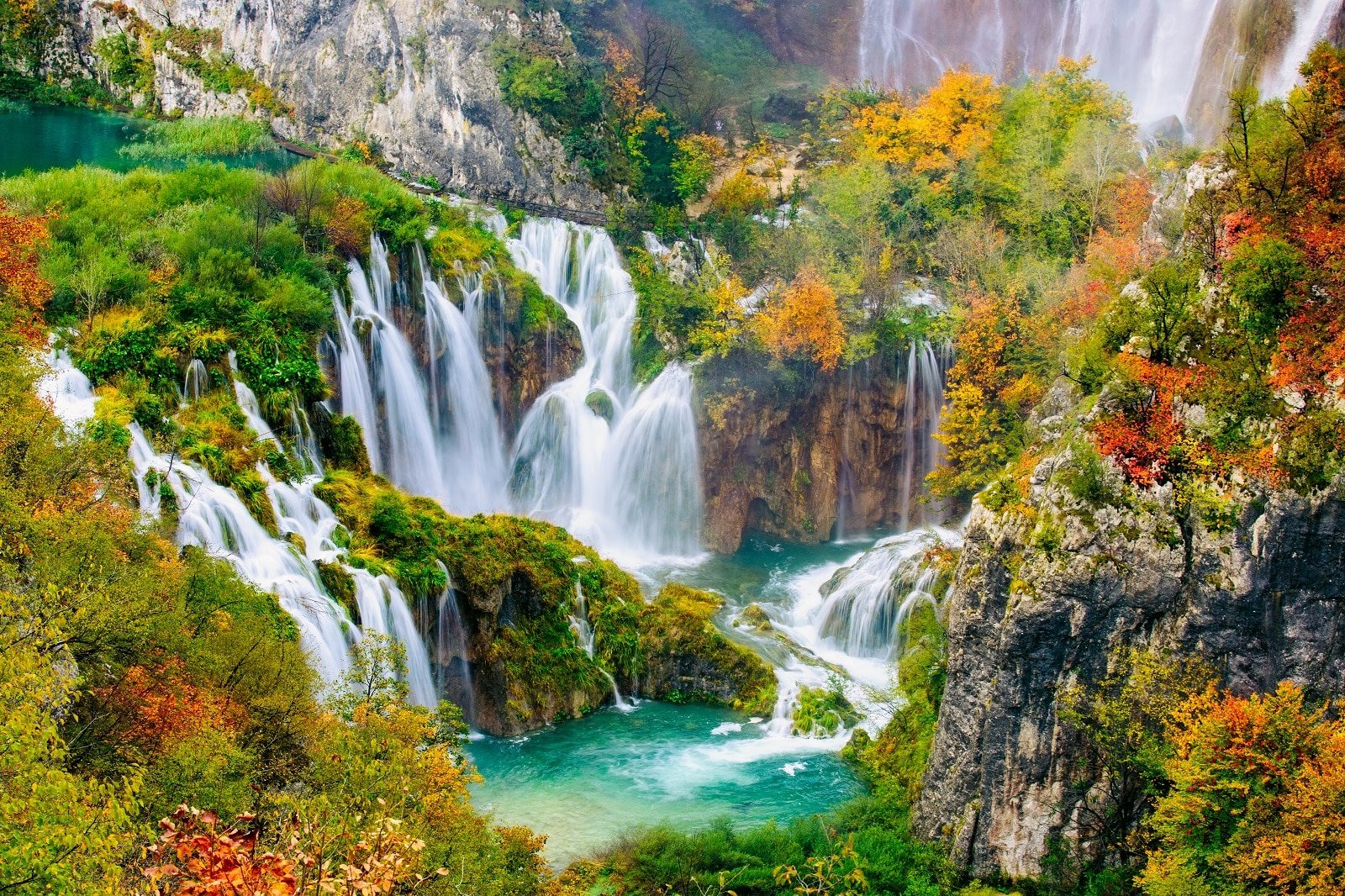
5. Plitvice Waterfalls, Croatia
Discover the enchanting beauty of the Plitvice Waterfalls in Croatia’s Plitvice Lakes National Park, a UNESCO World Heritage site. This natural wonder features a series of stunning lakes connected by cascading waterfalls, surrounded by dense forests. Wooden walkways meander through the park, allowing you to wander amidst the turquoise waters and lush greenery. The park’s beauty changes with the seasons, offering a different experience whether you visit in the vibrant spring, lush summer, colorful autumn, or the tranquil, snow-covered winter.
Insider’s Tip: Visit early in the morning to experience the park in solitude.
When To Travel: Late spring or early autumn for fewer crowds.
How To Get There: Drive or take a bus from Zagreb or Zadar.
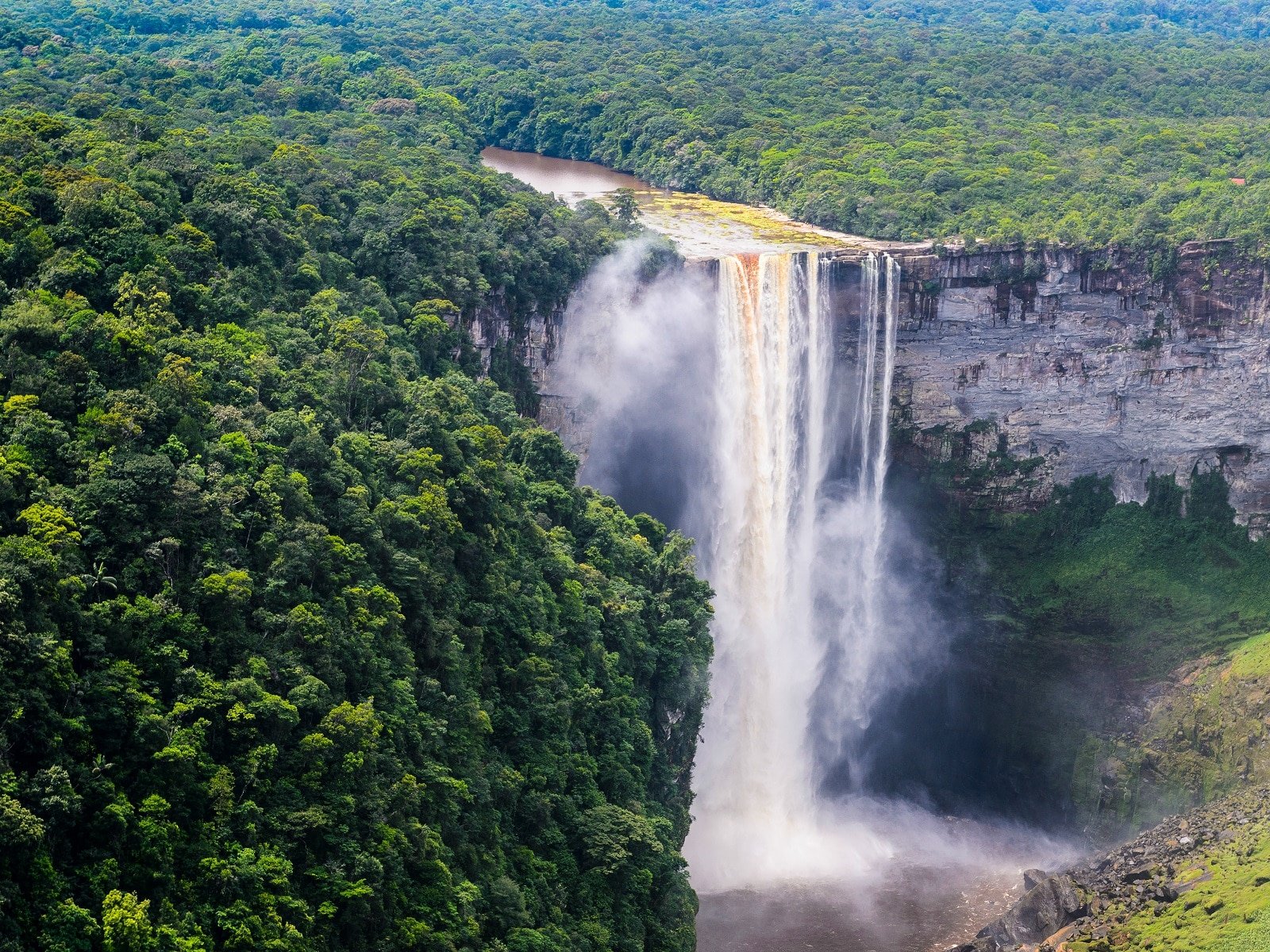
6. Kaieteur Falls, Guyana
Experience the raw power of Kaieteur Falls, located in the heart of Guyana’s rainforest. As one of the world’s most powerful waterfalls, Kaieteur impresses with its height and the volume of water cascading over a sandstone plateau into a deep gorge below. The journey to the falls is an adventure, typically involving a small plane flight from Georgetown, offering stunning aerial views of the Amazon rainforest. The falls’ remote location in Kaieteur National Park ensures a peaceful experience, surrounded by untouched nature.
Insider’s Tip: Opt for a guided tour from Georgetown for a hassle-free experience.
When To Travel: May to July for optimal flow and accessibility.
How To Get There: Accessible by a small plane from Georgetown.
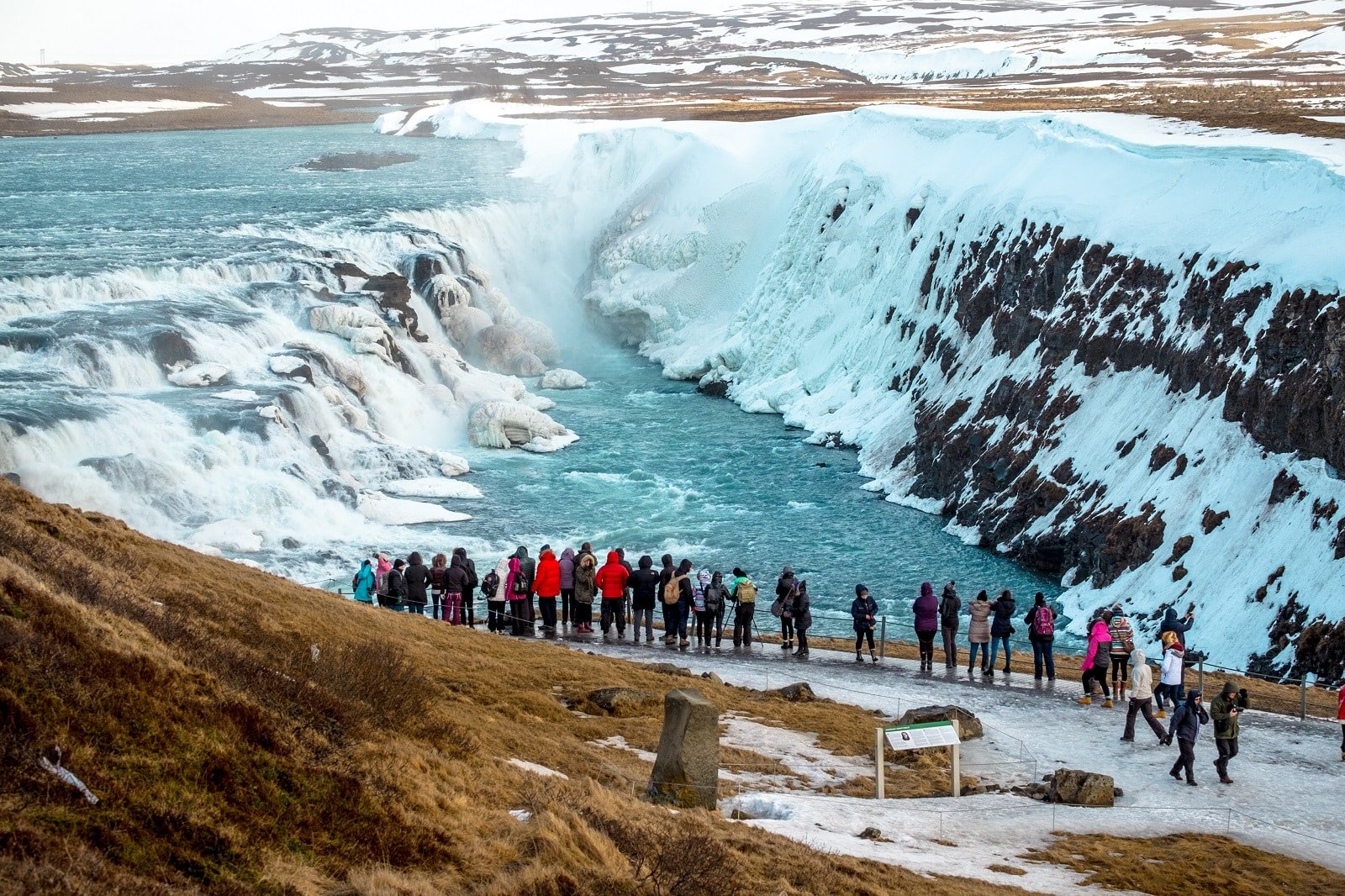
7. Gullfoss, Iceland
Visit Gullfoss, one of Iceland’s most iconic waterfalls and a key part of the Golden Circle tourist route. This massive, two-tiered waterfall powerfully cascades into a deep canyon, creating a spectacular display. The surrounding landscape adds to the waterfall’s dramatic appeal with its greenery and rugged terrain. Numerous viewpoints around Gullfoss provide different perspectives to appreciate its grandeur. In the winter, parts of the waterfall freeze, creating a mystical, icy spectacle.
Insider’s Tip: Check out the visitor center for insights into the waterfall’s history.
When To Travel: Summer for the best access and weather.
How To Get There: Drive from Reykjavik, which takes about 1.5 hours.
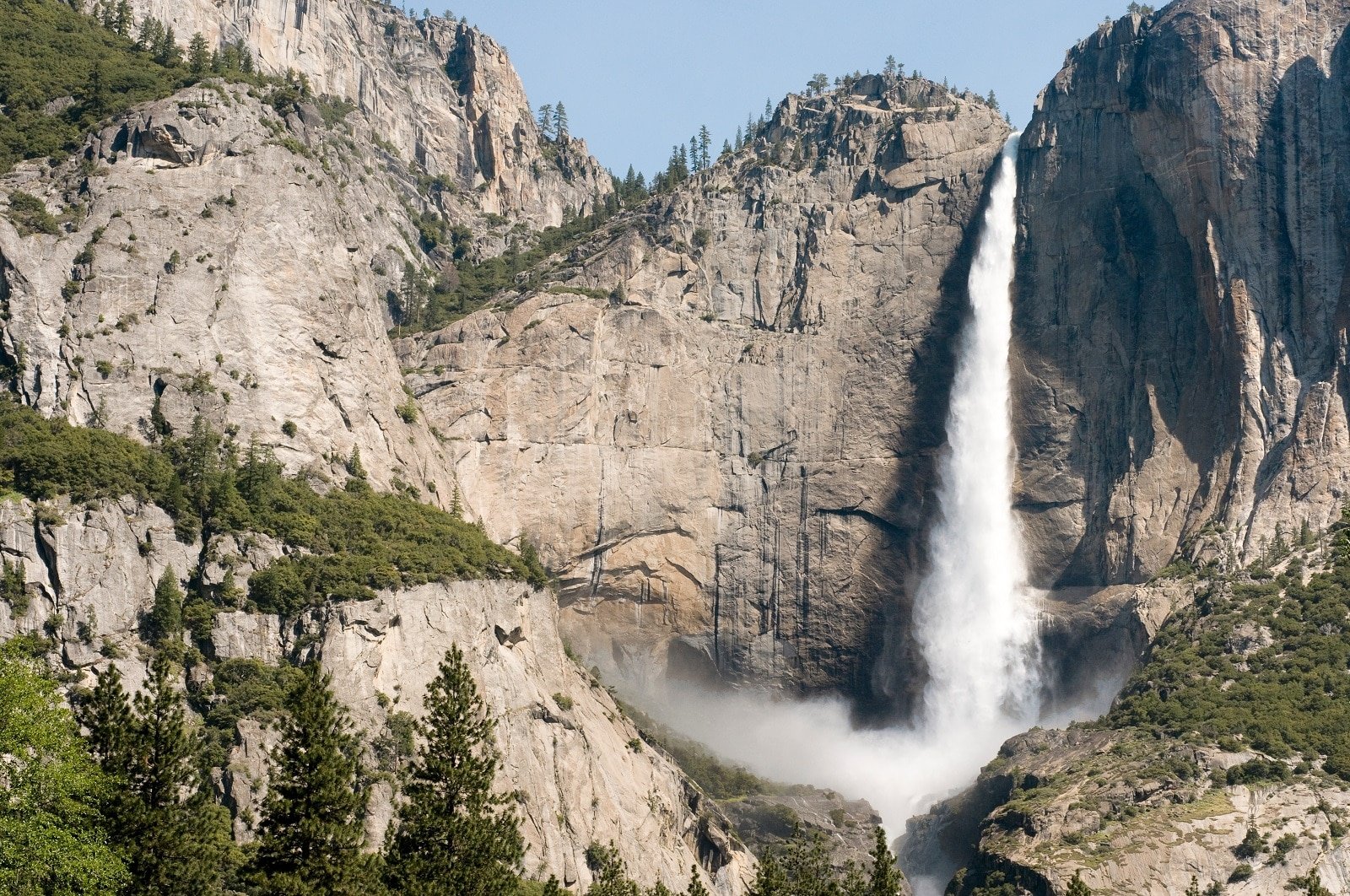
8. Yosemite Falls, USA
Explore Yosemite Falls in California’s Yosemite National Park, one of North America’s tallest waterfalls. This impressive waterfall, divided into three distinct sections – Upper, Middle, and Lower Yosemite Falls – offers various hiking opportunities and stunning views. The falls are at their peak in late spring, fueled by the melting snow. Surrounding trails range from easy walks to the more strenuous Upper Yosemite Fall hike, leading to the top for breathtaking valley views. The surrounding Yosemite Valley offers additional scenic spots and trails.
Insider’s Tip: Visit in late spring when the water flow is at its peak.
When To Travel: May and June are the best water flows.
How To Get There: Drive to Yosemite Valley from nearby cities like San Francisco or Fresno.
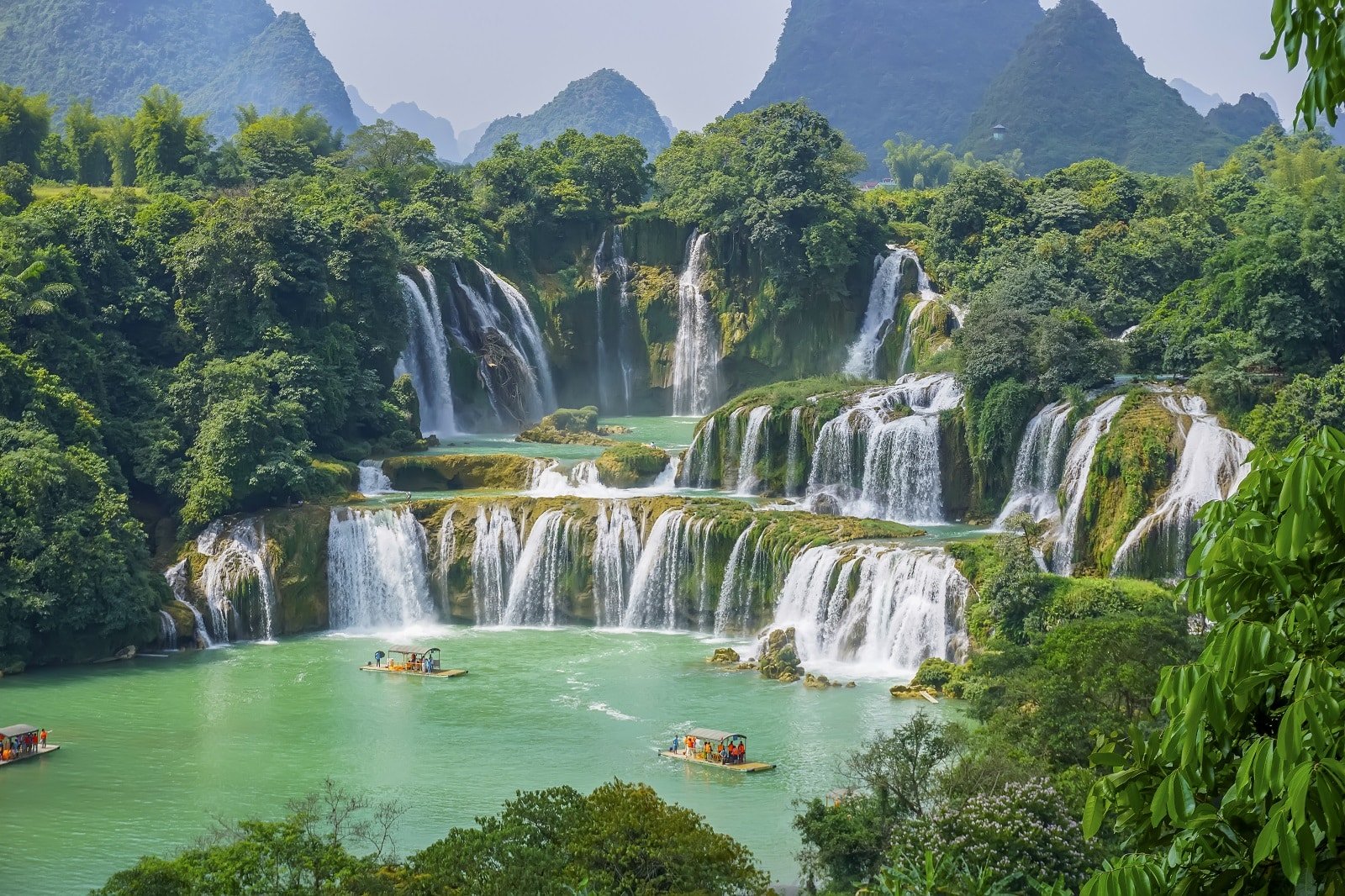
9. Ban Gioc–Detian Falls, China/Vietnam
Experience the serene beauty of Ban Gioc–Detian Falls on the border of China and Vietnam. This picturesque multi-tiered waterfall, surrounded by lush greenery and striking karst formations, is among the largest waterfalls in Asia. The tranquil setting is perfect for a peaceful day trip, where you can enjoy the natural beauty and take a bamboo raft ride for a closer view of the cascading water. The falls are particularly impressive during the rainy season when the water volume is at its peak.
Insider’s Tip: Take a bamboo raft ride for a closer view of the falls.
When To Travel: May to October for fuller waters.
How To Get There: Accessible from Nanning in China or Cao Bang in Vietnam.
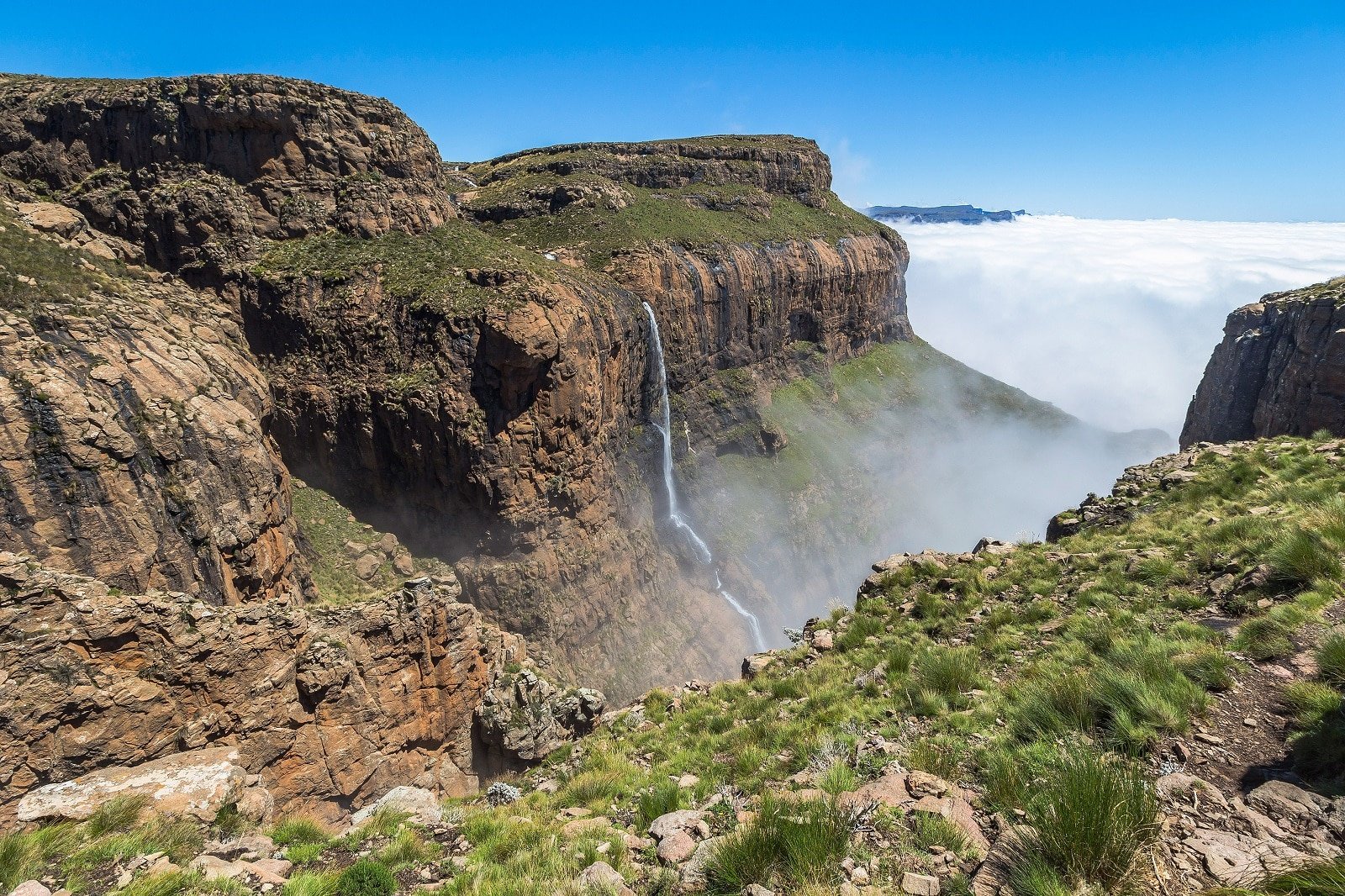
10. Tugela Falls, South Africa
Tugela Falls in South Africa’s Royal Natal National Park is a breathtaking series of seasonal waterfalls cascading down the Amphitheatre cliff in the Drakensberg mountains. The falls are often shrouded in mist, adding to their mystique. Hiking trails, such as the Tugela Gorge trail, provide spectacular views of the falls and the surrounding landscape. The best time to visit is after the summer rains when the water flow is at its strongest, making the falls even more spectacular.
Insider’s Tip: Hike the Tugela Gorge trail for a rewarding view of the falls.
When To Travel: April to August for the best views.
How To Get There: Drive to Royal Natal National Park from Johannesburg.
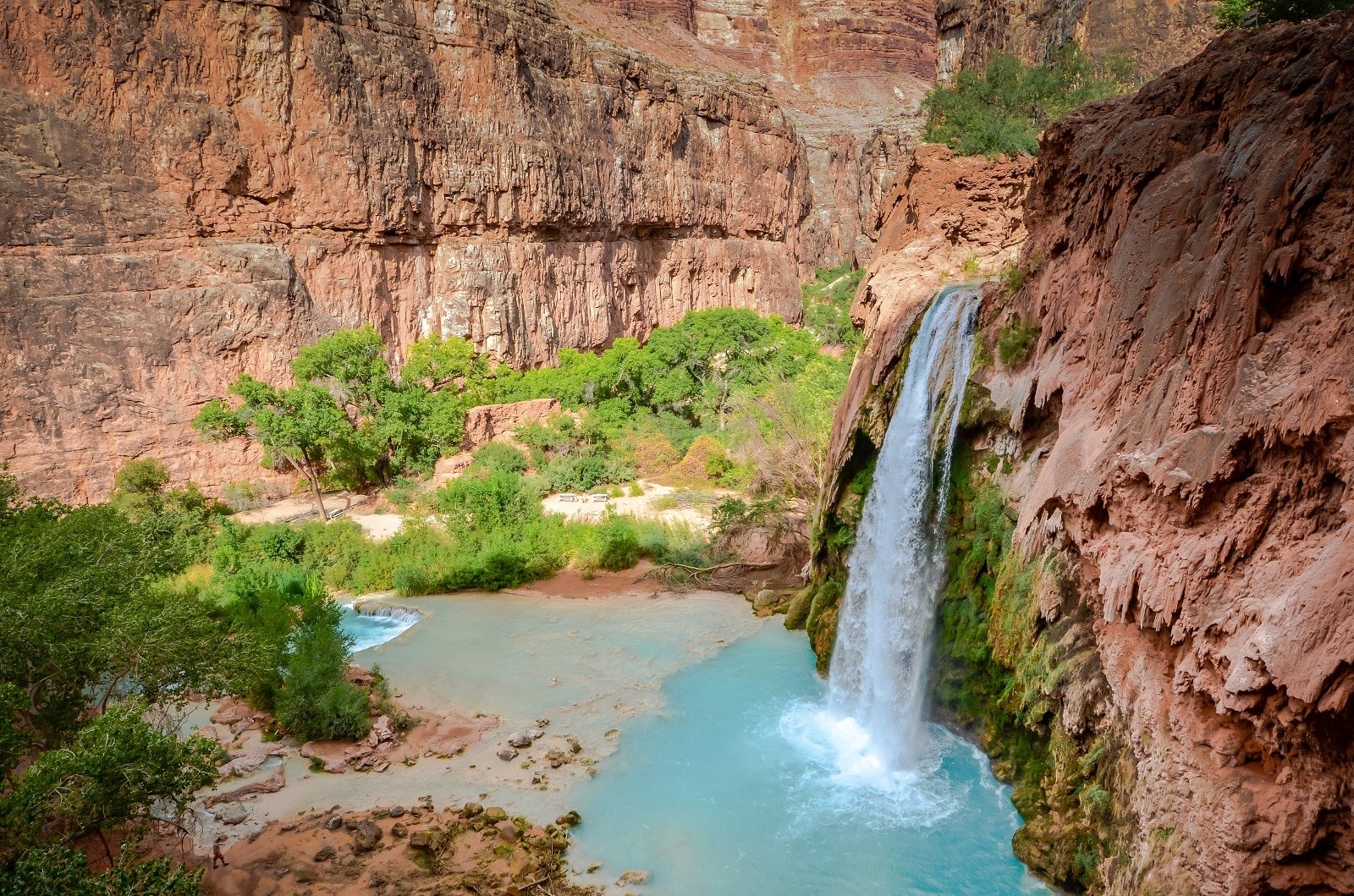
11. Havasu Falls, USA
Immerse yourself in the stunning beauty of Havasu Falls in the Grand Canyon, known for its vibrant blue-green waters set against red canyon walls. Part of the Havasupai Indian Reservation, this secluded waterfall offers a tranquil paradise for swimming and relaxation. The hike to Havasu Falls is challenging but rewarding, with several smaller waterfalls along the way. Be sure to plan and reserve your trip well in advance due to limited access and high demand.
Insider’s Tip: Make reservations well in advance as access is limited.
When To Travel: Spring and fall for ideal hiking conditions.
How To Get There: Hike from Hualapai Hilltop, which is reachable by car.
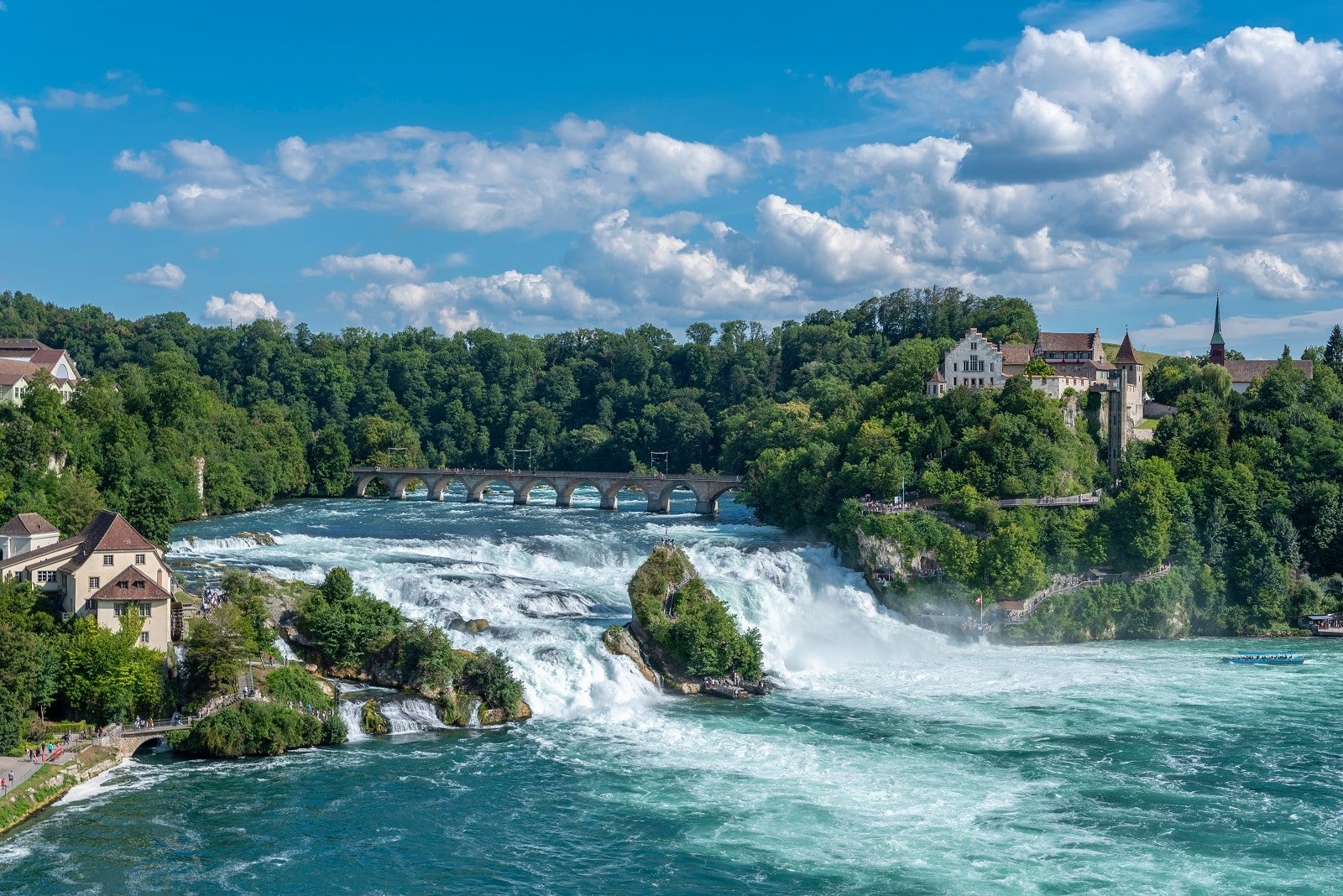
12. Rhine Falls, Switzerland
Visit Rhine Falls near Schaffhausen, Switzerland, to witness one of Europe’s most powerful waterfalls. The falls are impressive for their size and the sheer volume of water cascading over a breadth of 150 meters. Boat trips take you up close to the falls, and several viewing platforms along the river provide different perspectives on this natural spectacle. The area around the falls is ideal for leisurely walks or picnics, making it a perfect day trip destination.
Insider’s Tip: Take a boat trip to the rock in the middle of the falls for an up-close experience.
When To Travel: Summer for boat trips and the best weather.
How To Get There: Drive or take a train to Schaffhausen, then a bus to the falls.
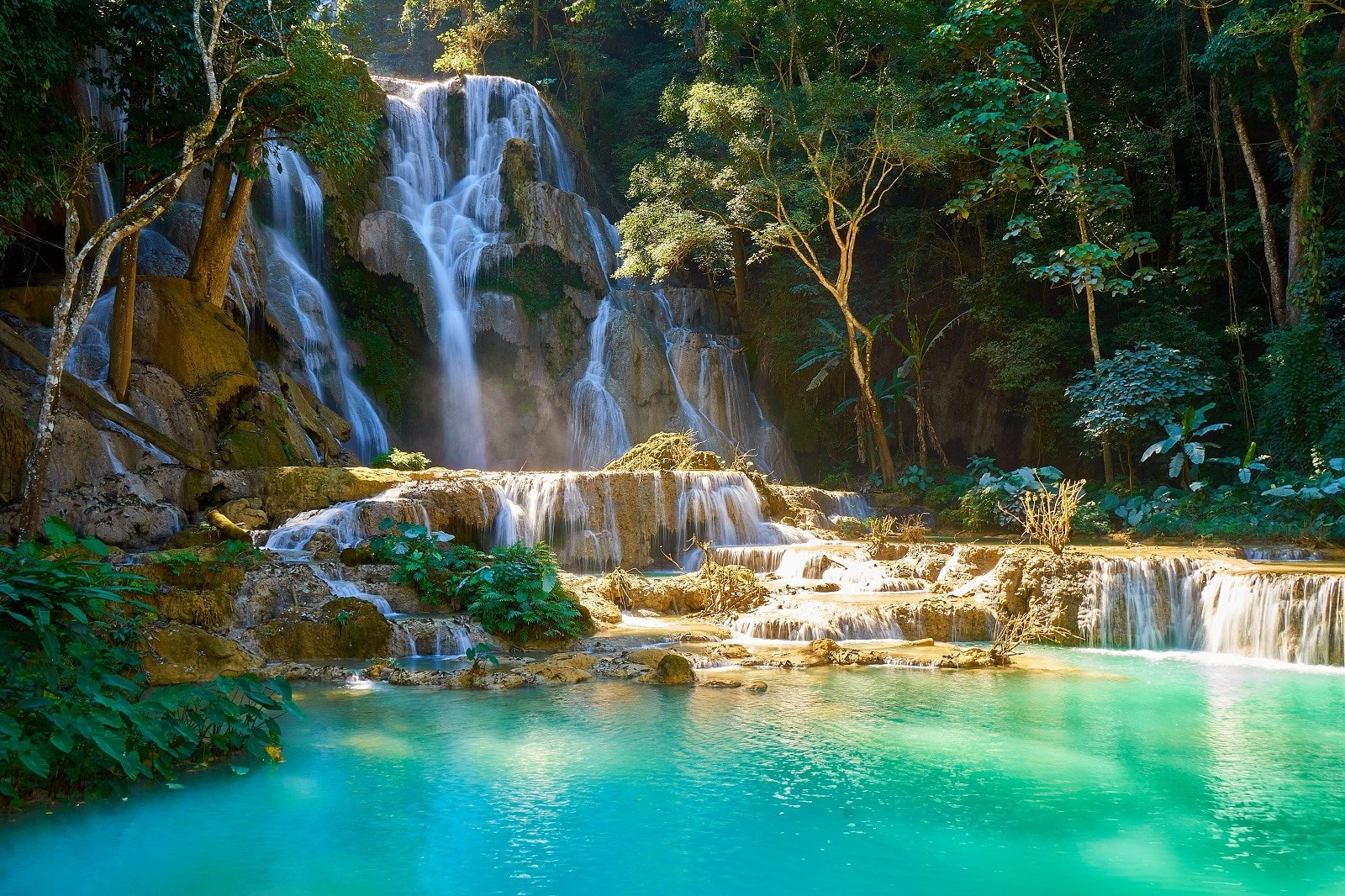
13. Kuang Si Falls, Laos
At Kuang Si Falls near Luang Prabang, Laos, you’ll find a stunning three-tiered waterfall known for its cascading turquoise blue pools set in a lush jungle. The main waterfall tumbles over limestone formations, creating a series of natural pools perfect for swimming. Wooden walkways and bridges allow for easy exploration of the area. The falls are part of a park that also includes a bear rescue center, adding to the appeal of the visit.
Insider’s Tip: Bring a swimsuit to enjoy a dip in the natural pools.
When To Travel: November to April for the dry season.
How To Get There: Take a tuk-tuk or a minivan from Luang Prabang.
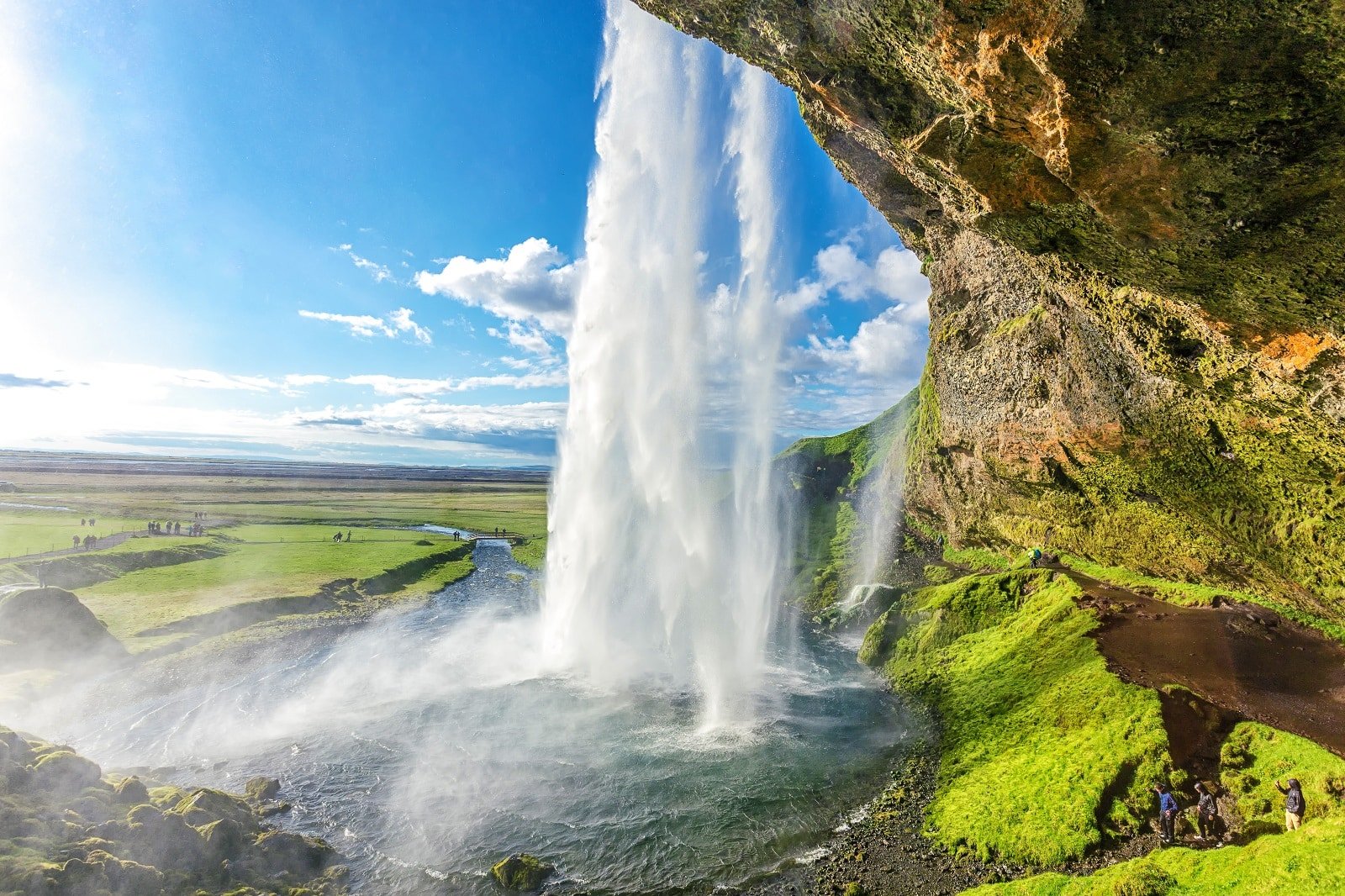
14. Seljalandsfoss, Iceland
Experience the unique beauty of Seljalandsfoss in Iceland, one of the few waterfalls you can walk behind. This 60-meter-high waterfall, part of the Seljalands River, cascades over a cliff, allowing visitors to walk behind it for a unique perspective. The path can be slippery, so waterproof gear is recommended. The waterfall is particularly picturesque during the long summer days but offers a magical sight when lit at night.
Insider’s Tip: Wear waterproof gear if you plan to walk behind the falls.
When To Travel: Summer for easier access and longer daylight hours.
How To Get There: Drive from Reykjavik along the South Coast.
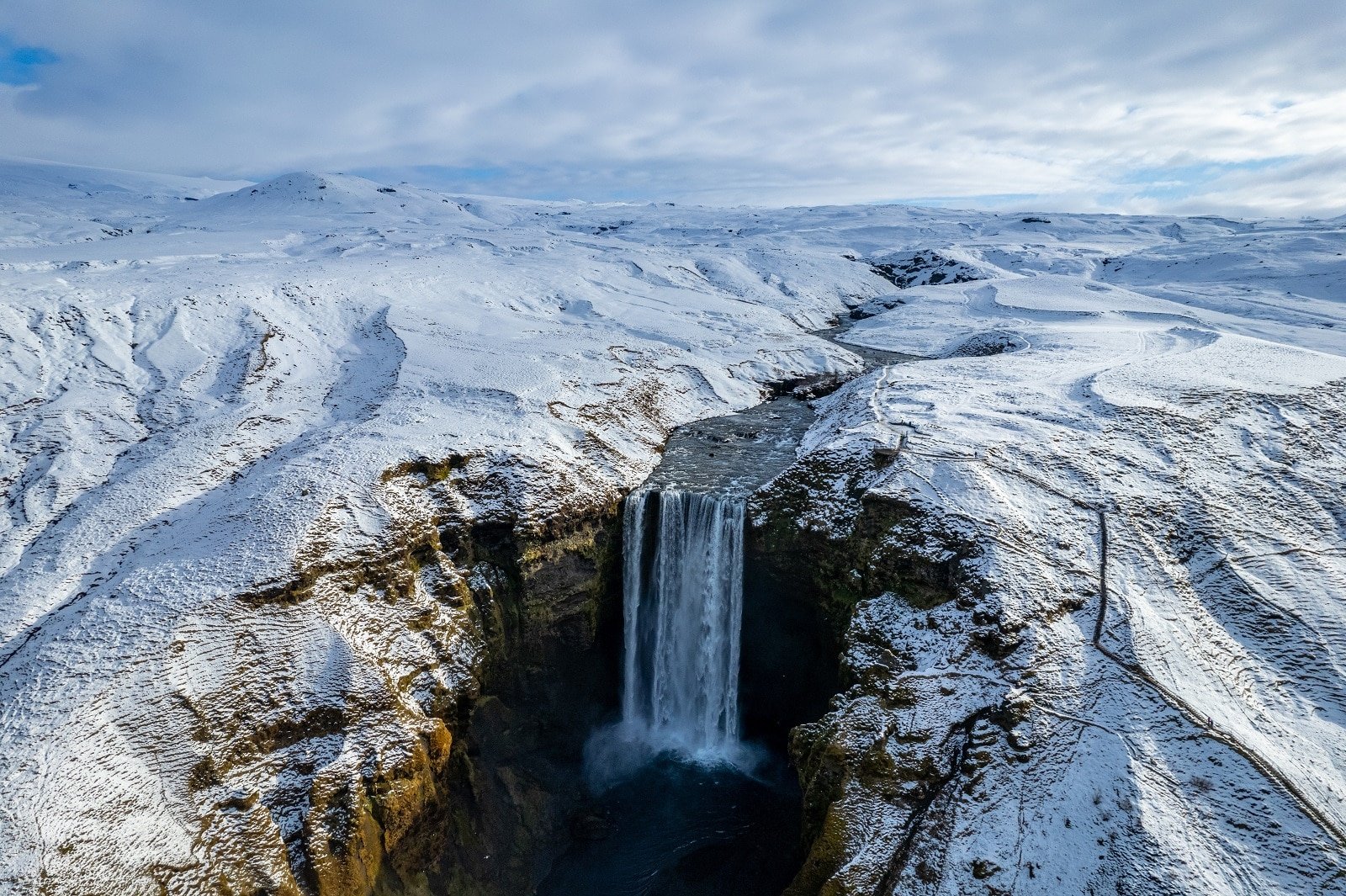
15. Skógafoss, Iceland
Skógafoss, another of Iceland’s iconic waterfalls, is known for its impressive width and height. Located on the Skógá River, the waterfall drops 60 meters over a former sea cliff, creating a powerful curtain of water. On sunny days, rainbows often form in the mist created by the falls, adding to their enchantment. A staircase next to the waterfall leads up to an observation platform, offering panoramic views of the surrounding landscape and the Atlantic Ocean.
Insider’s Tip: For photography enthusiasts, capturing Skógafoss during the golden hour can result in stunning images.
When To Travel: Visit in the summer for the best weather conditions and easier access.
How To Get There: Skógafoss is easily accessible by car, along the Ring Road, about a 2-hour drive from Reykjavik.
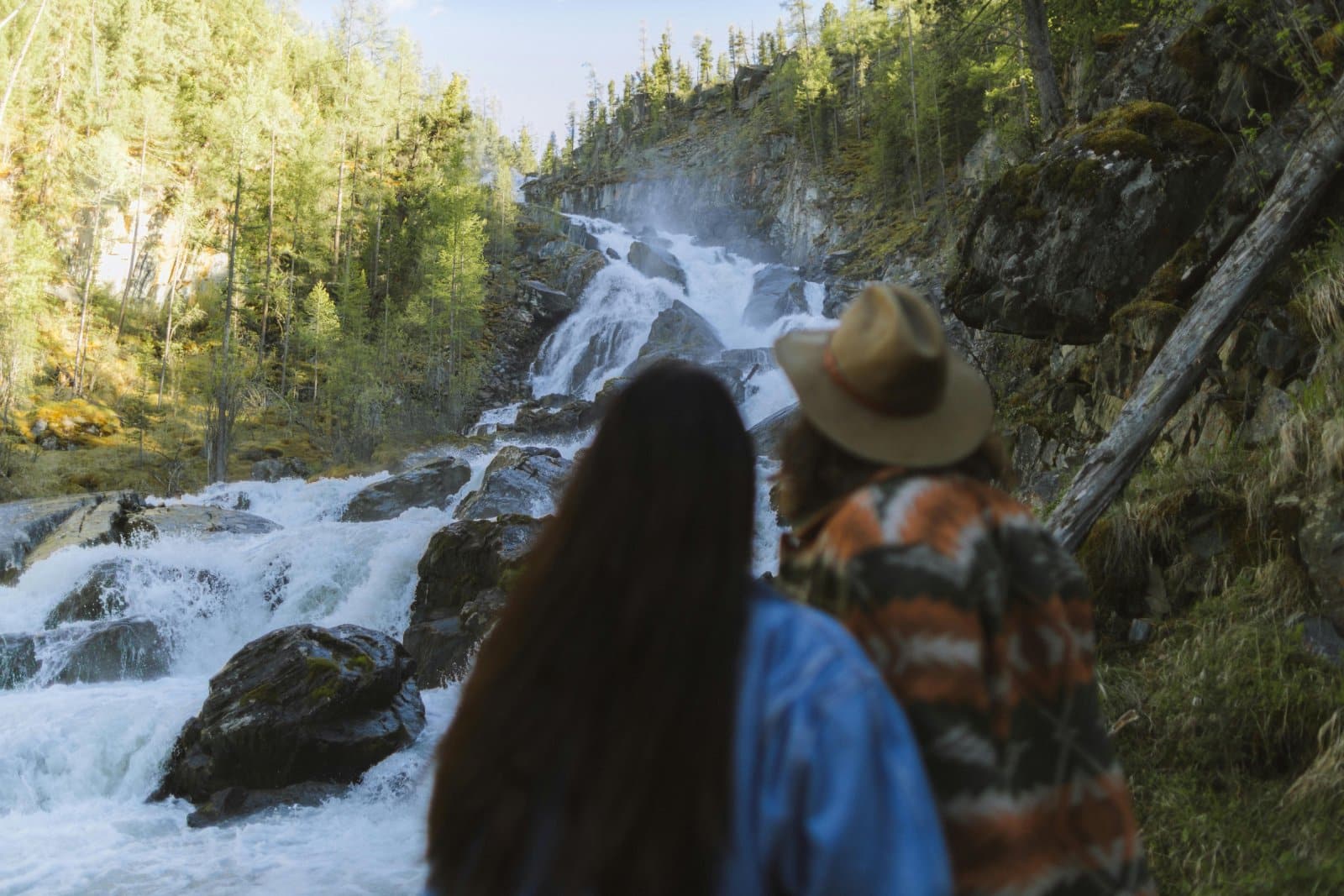
The Bottom Line
As you travel around the globe exploring these magnificent waterfalls, each visit offers an opportunity to connect with nature’s raw beauty and power. From the thundering cascades of Iguazu Falls to the serene turquoise pools of Kuang Si Falls, these natural wonders provide a humbling and awe-inspiring experience. Remember to respect these natural environments, ensuring they continue to inspire and amaze for generations to come. In the presence of these waterfalls, you’re not just a spectator; you’re a part of the grandeur and majesty of our natural world.
More Articles Like This…
Barcelona: Discover the Top 10 Beach Clubs
2024 Global City Travel Guide – Your Passport to the World’s Top Destination Cities
Exploring Khao Yai 2024 – A Hidden Gem of Thailand
The post The World’s 15 Most Beautiful Waterfalls – A Guide to Breathtaking Natural Wonders republished on Passing Thru with permission from The Green Voyage .
Featured Image Credit: Shutterstock / 4045.
For transparency, this content was partly developed with AI assistance and carefully curated by an experienced editor to be informative and ensure accuracy.
More for You
8th Grade Teacher Shares the Wildest Things Students Have Ever Said to Her
Meet Timothy Wayne: Tim McGraw’s 21-Year-Old Nephew And His Newest Opening Act
The Longest Living People In the World All Abide by the ‘Power 9’ Rule
People say these 20 American cities have the best pizza
A U.S. F-16 pilot ejected after losing power in thick clouds in South Korea
Nearly half of master’s degree programs leave students financially worse off—and just one subject results in a starting salary over $100k
Marjorie Taylor Greene Gets Schooled On NATO Amendment
I moved from the US to Ireland. Here are 11 things that surprised me most.
Behind the Brand With Navy SEAL Jocko Willink
Why Aren't More People Driving Electric Cars? An EV Expert Weighs In
20 Best Sandwiches in America You Need to Try At Least Once
The luckiest generation? Why Gen Z is entering the workforce at the perfect time
'Star Wars' Actress Amandla Stenberg's 'White People' Remark Sparks Fury
Jon Stewart Spots How Trump Is Doing America 'A Service' By Exploiting Political System
The Best Tortoise Breeds to Keep as Pets
A retired couple sold their home to live on a cruise ship. This is how much they're saving
I was laid off after 25 years of working my way up in the insurance industry. It was the best thing to happen to me.
“Telepathy”: Musk’s company implanted first brain chip
Muddy Waters is a blues guitar icon who pioneered the sound of electric guitar and invented a new solo language
Here's Why The U.S. Is Still Flying The B-52 Stratofortress
Travel Stories

Jun 7, 2024 • 8 min read
Cruising down a quiet river, surrounded by scenic views is an ideal way to see Europe. Here are the 10 best places for a European river cruise.

Jun 7, 2024 • 11 min read
Nothing says summer in the USA like heading to the lake. We asked our writers to share their favorite lakes in the country.

Jun 7, 2024 • 12 min read
Look beyond the French capital's most famous sights and you'll discover many free things to do in Paris – and get a local's perspective on the city too.

Jun 7, 2024 • 10 min read
Like any heavily touristed destination, it pays to research before you go. Here's an insider's guide to planning the ultimate trip to Mallorca, Spain.

Jun 7, 2024 • 7 min read
You don’t have to spend a fortune to enjoy the glamour of Nice. Beach-going, people-watching, architecture-viewing and more, all to be enjoyed for free.

Wander through a prehistoric wonderland of colorful rock formations, fossils, and prairies in the Badlands National Park in South Dakota.

Jun 6, 2024 • 6 min read
Shave ice is a summery treat served with colorful syrupy toppings and sold at shave ice shops across the islands of Hawaii. You won't want to miss it.

Jun 6, 2024 • 5 min read
Kona coffee is some of the world’s best, and a trip to the Big Island is incomplete without sampling its premier product.

Jun 6, 2024 • 8 min read
Mallorca’s capital is quickly becoming one of the hottest cities in the Med for food.

Nepal is not expensive, and there’s plenty of value to be had for visitors that follow these budget tips, along with a guide to daily costs.

From glorious stretches of white sand to secluded rocky coves, here are Mallorca's best beaches.

Choose the right time for your visit to Ecuador with this seasonal guide.

Jun 6, 2024 • 7 min read
Beautiful beaches and natural wonderlands drenched in southern charm – Coastal Georgia's islands have something for everyone.

The queen of the French Riviera, Nice drips elegance and panache. Here are some things to know before you arrive to help you fit in with the glitterati.

Jun 5, 2024 • 8 min read
Andean flavors, coastal seafood, Afro-Ecuadorian recipes and Spanish influences converge to create an innovative food-and-drink scene in Ecuador.
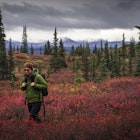
Jun 5, 2024 • 7 min read
No matter your hiking ability, Alaska's diverse trails provide plenty of opportunities for recreation.

Plan a summer adventure to Hilton Head, Folly Beach and other South Carolina Sea Islands with this guide.

Jun 5, 2024 • 11 min read
Plan your summer vacation to Wisconsin's Door County with our top tips.

Jun 5, 2024 • 5 min read
Explore Boston by bike with this guide to the city's best off-road routes, its local bike-share program and top safety tips.

Plan your trip to Argentina with this guide to climate, crowds and costs.

Jun 5, 2024 • 10 min read
Whether you're a history buff, a nature lover, or simply seeking relaxation by the sea, Rhode Island will make you glad you came.

Jun 5, 2024 • 17 min read
An expert's guide to flying the world with the boost of points & miles: how to choose the perfect airline credit card.
You are using an outdated browser. Please upgrade your browser to improve your experience.
Argentina’s Milei to travel to Italy for G7 summit
BUENOS AIRES (Reuters) – Argentine President Javier Milei will travel next week to the Group of Seven (G7) summit in Italy, a spokesman for the libertarian leader told Reuters on Thursday, contradicting reports that he had backed out of the trip.
Milei will return to Argentina after the summit, set to take place from June 13-15, the spokesman said. The president will return to Europe at a later date, he said.
A Milei-backed package of proposed market reforms faces a key vote next week, and opposition lawmakers are pushing to pull some key provisions from the text.
(Reporting by Nicolas Misculin; Editing by Leslie Adler)
Leave a Reply Cancel reply
You must be logged in to post a comment.
Current Weather

Lionel Messi scores goal in return to lineup, but Inter Miami falls 3-1 to Atlanta United

FORT LAUDERDALE, Fla. – Lionel Messi returned to action, rested and engaged. But most of his Inter Miami teammates felt the ill-effects of the longest road trip in Major League Soccer on Wednesday night.
Messi scored in the 62nd minute, but Inter Miami fell 3-1 to Atlanta United at Chase Stadium – four days after the club won 2-1 at Vancouver without Messi, Luis Suárez and Sergio Busquets.
Saba Lobjanidze scored in the 44th and 59th minutes for a brace, while Jamal Thiaré finished a sliding goal in the 73rd minute to help Atlanta win its fourth match of the MLS season and hand Inter Miami its third loss of the season.
“The truth is we were missing a gear,” Inter Miami coach Tata Martino said after the loss. “Let's say it was a night where the team went backwards compared to other matches, where we always found positive moments, even in difficult moments.”
The good news for Inter Miami: It retains first place in the MLS Eastern Conference with FC Cincinnati one point behind in the standings after Cincinnati lost 2-0 at home to Nashville.
Messi, Suárez and Busquets returned to action for the first time since May 18, given 10 days between matches to rest and recuperate — and avoid travel to and from South Florida to Vancouver last weekend.
Inter Miami plays again on Saturday night against St. Louis City, which ranks 11th out of 14 teams in the MLS Western Conference. But it’s not yet definitive Messi, the 2022 World Cup champion who will captain Argentina in Copa América next month, will play on Saturday. His status will likely be decided after Friday's practice.
Messi could use the work to maintain his form before Copa América, which could be the final major tournament he’ll play for Argentina in his legendary career. He turns 37 on June 24.
Messi appeared healthy as a lingering left leg injury, a blow he took at Montreal on May 11, did not affect him against Atlanta.
Messi nearly scored on a header in the opening minutes, but his dive toward the net ended with the ball sailing over it.
Messi, Suárez and Jordi Alba forced the issue offensively in the first half, but they were unable to find holes in Atlanta’s steadfast defense.
As the first half neared its end, Inter Miami’s fatigue from travel and nighttime humidity showed as Lobjanidze scored before halftime.
While Messi’s goal reignited Inter Miami and its home crowd, the goal by Thiaré proved to be the dagger.
Inter Miami has won just one of six matches played on a Wednesday this season, a 3-1 win over Nashville in the Concacaf Champions Cup being the lone exception.
“When a team gets defeated like we did, it’s an excuse to talk about the trip or the calendar,” Martino said.
Jamal Thiaré goal: Atlanta United 3, Inter Miami 1
Inter Miami is on the brink of defeat.
Jamal Thiaré finished a sliding goal in the 73 rd minute to give Atlanta a 3-1 lead against Inter Miami.
The play was orchestrated by Thiago Almada, and Caleb Wiley delivered the assist.
Messi scores goal to respond: Atlanta United 2, Inter Miami 1
Messi has responded to Inter Miami’s 2-0 deficit with a goal in the 62 nd minute, a strike that found the bottom right corner of the net.
The quick response in Messi’s goal has reignited the home crowd at Inter Miami’s Chase Stadium.
Saba Lobjanidze scores again for brace: Atlanta 2, Inter Miami 0
It might not be Inter Miami’s night.
Saba Lobjanidze scored in the 59 th minute to give Atlanta United a 2-0 lead over Inter Miami in the second half.
Atlanta’s Thiago Almada navigated the steal from Inter Miami’s stars and Lobjanizde doubled their lead.
Messi slips, misses shot on goal: Atlanta 1, Inter Miami 0
A swing and a miss in the 55 th minute by Messi, who also slipped after his latest shot attempt in the second half.
Inter Miami’s Matias Rojas, who has scored three goals this season, has entered the match for Julian Gressel.
Saba Lobjanidze goal: Atlanta United 1, Inter Miami 0
Messi and Inter Miami are out of sorts in the first half and they fell behind just before halftime.
Atlanta United’s Saba Lobjanidze scored in the 44th minute to help his side take a 1-0 lead over Inter Miami.
Messi, Alba, Suárez try to connect again, but offsides: Inter Miami 0, Atlanta 0
Messi, Alba and Suárez performed a set piece after a corner kick, to no avail.
Alba found Messi streaking down the right side, and Messi used his head to find Suarez cutting toward the net. But the ball appeared to be deflected by Atlanta United goalie Josh Cowen in the 26th minute.
Messi drives downfield, Suárez misses shot: Inter Miami 0, Atlanta 0
Messi pursued an opportunity with a full head of steam from midfield, and dropped off a pass to his right to Julian Gressel. But Gressel veered offsides after dropping off a pass to Luis Suárez, who kicked it directly to Atlanta United goalie Josh Cowen in the 19th minute.
One minute later, Messi chipped a pass in the goal area to Robert Taylor, who was unable to handle it.
Messi misses diving header in early minutes: Inter Miami 0, Atlanta 0
Messi made a hard run toward the net, and tried to use his head to find the back of the net. But Messi’s shot bounced over the net in the fourth minute.
Messi got up after his dive with a thumbs-up for Jordi Alba, who delivered the pass into the goal area.
Messi, striker Luis Suárez and midfielder Sergio Busquets are in the starting lineup again after missing the Vancouver match last Saturday.
A new addition to the starting lineup is midfielder Federico Redondo, who returned from a knee injury to play against Vancouver. He replaces Benjamin Cremaschi, who will likely enter as a substitute.
Is Messi playing tonight?
Yes, Messi is expected to play against Atlanta , after staying home in South Florida and missing Inter Miami’s 2-1 win at Vancouver . He’s in the startling lineup.
WATCH : Messi and Inter Miami take on Atlanta United FC on Apple TV
TICKETS : Experience Messi and Inter Miami in person when they host Atlanta United FC
SHOP : Get the latest Messi and Inter Miami team gear from the MLS Store
How to watch Inter Miami vs. Atlanta United live stream
Inter Miami and Atlanta begin play at 7:30 p.m. on Wednesday at Chase Stadium. The game is available via MLS Season Pass on Apple TV .
Messi, Inter Miami arrive at Chase Stadium
Messi and his Inter Miami teammates have arrived at Chase Stadium in Fort Lauderdale, Florida, for tonight's game against Atlanta United. The players were spotted leaving their bus shortly after 6 p.m. ET.
Inter Miami vs. Atlanta United prediction
Inter Miami 3, Atlanta United 0: Messi returns to form with a goal and assist, Suárez adds another goal, and Benjamin Cremaschi scores as goalkeeper Drake Callender has a shutout. — Safid Deen, Lionel Messi reporter
Inter Miami vs. Atlanta United betting odds
Inter Miami is a -225 favorite at home, while Atlanta is a +380 underdog with +450 odds to draw, according to BETMGM .
What’s at stake as Inter Miami hosts Atlanta United?
Inter Miami leads the MLS Eastern Conference with 34 points from 10 wins, four draws and two losses. Luis Suárez is tied for second in MLS with 11 goals scored, while Messi is third with 10 goals scored and a league-leading 12 assists this season.
Meanwhile, Atlanta is 12th among 15 Eastern Conference teams with 14 points from three wins, four draws and seven losses.
A win would increase Inter Miami’s lead in the East.
Messi shines in Bad Boys movie promo with Will Smith, Martin Lawrence and Jimmy Butler
Messi speaks in English, and delivers the punchline in a hilarious promo for “Bad Boys: Ride or Die ."
Why did Messi not travel, play in Vancouver?
Messi, Luis Suárez and Sergio Busquets did not travel to Vancouver for rest purposes – to avoid the cross-continent journey from South Florida – with home games on tap tonight and Saturday, especially with Copa América on deck .
All three are expected to play Wednesday and Saturday vs. St. Louis City.
Messi’s upcoming Inter Miami, Argentina schedule
Messi is expected to play again Saturday as Inter Miami hosts St. Louis City. Then, he’ll join Argentina for Copa América training.
Messi will participate in Argentina friendlies or Copa América warmup matches in Chicago on June 9 and the Washington D.C. area on June 14.
Then, Messi and Argentina take center stage in the Copa América opener against Canada in Atlanta on June 20.
Here’s more info on Messi and Argentina’s Copa América schedule .

IMAGES
VIDEO
COMMENTS
Iguazu Falls is huge. It's actually the largest broken waterfall system in the world, with 275 individual cascades. Iguazu has a height of 64 to 82 meters (210 to 269 feet), a width of 2,700 meters (8,858 feet), and a mean annual flow rate of 1,746 cubic meters per second (61,600 cubic feet per second).
Cascadas del Rio Agrio. 465. Waterfalls. By Fabian-Mailos. Worth of the 11km bad road from caviahue Visit it from mid morning to mid afternoon to have the best light for photos... 2023. 6. Waterfall Garganta Del Diablo. 1,422.
The Iguazu Falls consists of two national parks, one in Foz de Iguazu (Brazil) and the other one in Puerto Iguazu (Argentina). The curious thing is that although one only sees the falls as the main attraction, the park has a size of 252,982 hectares (67,720 on the Argentine side and 185,262 on the Brazilian side).
Argentina, South America. One of the planet's most awe-inspiring sights, the Iguazú Falls are simply astounding. A visit is a jaw-dropping, visceral experience, and the power and noise of the cascades - a chain of hundreds of waterfalls nearly 1.85 miles (3km) in extension - live forever in the memory. An added benefit is the setting ...
Welcome to the stunning wonder of Iguazu Falls, a natural marvel nestled between Argentina and Brazil. This remarkable collection of 275 waterfalls sprawls across lush rainforest terrain, captivating visitors with its sheer beauty and natural power. Get ready to be amazed by the thundering roar of the falls as millions of gallons of water ...
Iguazú Falls. The wild roads of the Iguazú National Park will lead you to a unique place on Earth. The roaring of the water. The singing of the birds. The beauty of the landscape. The vibrating nature. In this unique environment there is a natural treasure: the Iguazú Falls: 275 waterfalls that can reach up to 80 meters high.
The bus company Rio Uruguay runs regular buses from the town of Puerto Iguazu to the falls. The buses leave every 20 minutes and as of May 2024 the ride cost $7,000 pesos in cash (around $7 USD). The route begins at the Hito de los Tres Fronteras monument and stops at the bus station.
Av. Victoria Aguirre 237, Puerto Iguazú, Misiones, Agentina. Phone: +54 3757-421008. One of the 7 Natural Wonders of the World, Iguazu Falls is undoubtedly the most visited place in Misiones and one of the most imposing natural attractions in the Earth. The best thing to do in Puerto Iguazú, visit the Falls!
The Iguazu Falls are one of the greatest tourist icons Argentina. A virtual guide with all the information you need to plan your trip. Skip to the content. ... "Espléndida Argentina" Travel Agency Registered at Argentina's Ministry of Tourism under Licence E.V.T. 18605. Official web address: https://www.esplendida-argentina.tur.ar ...
About Iguazu Falls. One of Argentina's top tourist attractions, Iguazu Falls was named an UNESCO World Heritage site in 1984. In 2011 it was named one of the Seven World Wonders of Nature.. The Spanish name for Iguazu Falls is Cataracas de Iguazú.. Iguazu Falls National Park (Parque Nacional de Iguazú) is a 67,000 hectare park.Formed in 1934, it was the first national park formed in Latin ...
From world-famous waterfalls to small cascades in forests, Argentina's amazing colourful waterfalls are commonplace and provide visitors trekking, nature and contemplation in the most spectacular places in the world. Here you will find the most charming ones in the country.
15 Things to do in Iguazu Falls, Puerto Iguazu, and Foz do Iguacu. 1. Jet Boat Safari: Experience an exhilarating ride under the falls. The Jet Boat Safari at Iguazu Falls is an adrenaline-pumping adventure that allows visitors to get up close and personal with the immense power and misty embrace of the falls.
The best time to visit Iguazú Falls is considered to be the dry season of late March to May. These months boast sunshine, a tolerable level of heat, significantly less chance of rain and - with the exception of the busy Easter period - are quieter with cheaper accommodation prices.
The Argentina-Brazil border runs through the Devil's Throat. On the right bank is the Brazilian territory, which is home to more than 95% of the Iguazu River basin but has just over 20% of the jumps of these falls, and the left side jumps are Argentine, which make up almost 80% of the falls. Tourism. Aerolíneas Argentinas has ...
Map of upper and lower circuits in Iguazu National Park in Argentina. The Upper Trail provides panoramic views of many falls. It is shorter than the Lower Trail at just half a mile and will take around an hour. It has catwalks leading you on top of the falls with views over the nearly 200 foot high falls.
Here are the best waterfalls in Argentina that should be on your Argentina itinerary: Iguazú Falls Waterfall. Salto del Agrio Waterfall. Rio Colorado Waterfalls. Cascada de Los Duendes. Chachin Waterfall - Hua Hum. Cascada Escondida, El Bolsón. Cascada de Toro Muerto.
1. Iguazu Falls - Devil's Throat (from USD 134.0) It's imperative to see the horseshoe-shaped centerpiece - Devil's Throat - when visiting the spectacular Iguazu Falls on the border of Argentina and Brazil. This water curtain, consisting of 14 mighty waterfalls, is the widest of all water curtains in Iguazu.
Mocona Falls. Mocona Falls (Photo: warenycia via iStock) Millions of years ago, a geological fault occurred on the Uruguay River. The result was the extraordinary spectacle known as Mocona Falls. Situated in a dedicated provincial park in Misiones' central-eastern region, this collection of waterfalls in Argentina are unusual in the extreme.
Iguazu Falls, located in South America, is a popular tourist destination.These waterfalls, between Brazil and Argentina, are surrounded by lush, green, subtropical national parks and are teeming with fauna and flora.The surrounding rainforest is a haven for more than 2,000 plant species, about 400 bird species, and more than 80 types of mammals, including jaguars and pumas!
A trip to Iguazu Falls makes for a fantastic multi-country vacation as they are located on the border of two neighboring countries: Brazil and Argentina. The Iguazu Falls are one of South America's top 5 highlights, and it is a must-see on any South America tour. Find out here why you should experience the beautiful waterfalls of Argentina!
Taller than Niagara and wider than Victoria, the Iguazú Falls are the result of a volcanic eruption that left a large crack in the earth. The waterfall system consists of 275 falls along 2.7 km (1.67 miles) of the Iguazú River. The thundering Iguazú falls. At an 80 meter canyon in the fierce foaming cauldron of the Devil's Throat, the ...
Iguazú Falls & the Northeast. Northeast Argentina is defined by water. Muscular rivers roll through plains that they flood at will, while fragile wetlands support myriad birdlife, snapping caimans and cuddly capybaras. The peaceful Río Iguazú, meandering through jungle between Brazil and Argentina, dissolves in fury and power in the planet ...
To make sure you find all the best places to visit and things to do, use this handy list of the top tourist attractions in Argentina. 1. Iguazú Falls. 2. Perito Moreno Glacier. 3. Recoleta, La Boca, and Tango in Buenos Aires. 4. Tierra del Fuego National Park.
12. Parque Nacional Los Glaciares. Best for awesome glaciers. Spanning more than 5956 sq km (2300 sq miles) of iceberg-filled lakes, jagged Andean peaks and - most notably - gigantic glaciers, this park in southern Patagonia is one of Argentina's signature tourist attractions.
10. Tugela Falls, South Africa. Tugela Falls in South Africa's Royal Natal National Park is a breathtaking series of seasonal waterfalls cascading down the Amphitheatre cliff in the Drakensberg ...
Discover amazing travel experiences with Lonely Planet's insider tips, inspirational traveler stories and expert guidance from around the world. Lonely Planet. Destinations. ... Plan your trip to Argentina with this guide to climate, crowds and costs. beaches. Plan your summer vacation to Rhode Island's beaches. Jun 5, 2024 • 10 min read.
BUENOS AIRES (Reuters) - Argentine President Javier Milei will travel next week to the Group of Seven (G7) summit in Italy, a spokesman for the libertarian leader told Reuters on Thursday, contradicting reports that he had backed out of the trip. Milei will return to Argentina after the summit, set to take place from June 13-15, the spokesman ...
Messi scored in the 62nd minute, but Inter Miami fell 3-1 to Atlanta United at Chase Stadium - four days after the club won 2-1 at Vancouver without Messi, Luis Suárez and Sergio Busquets ...